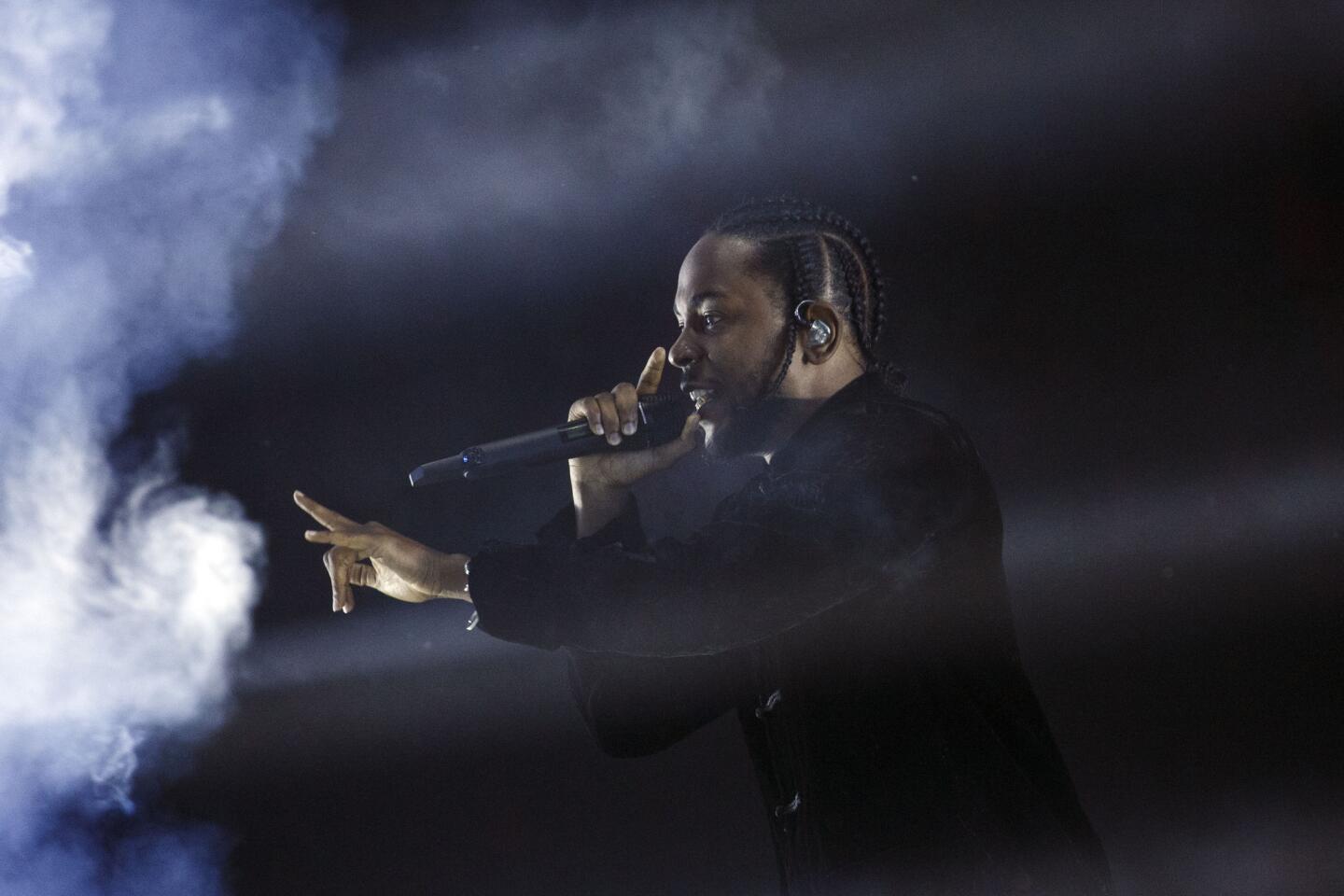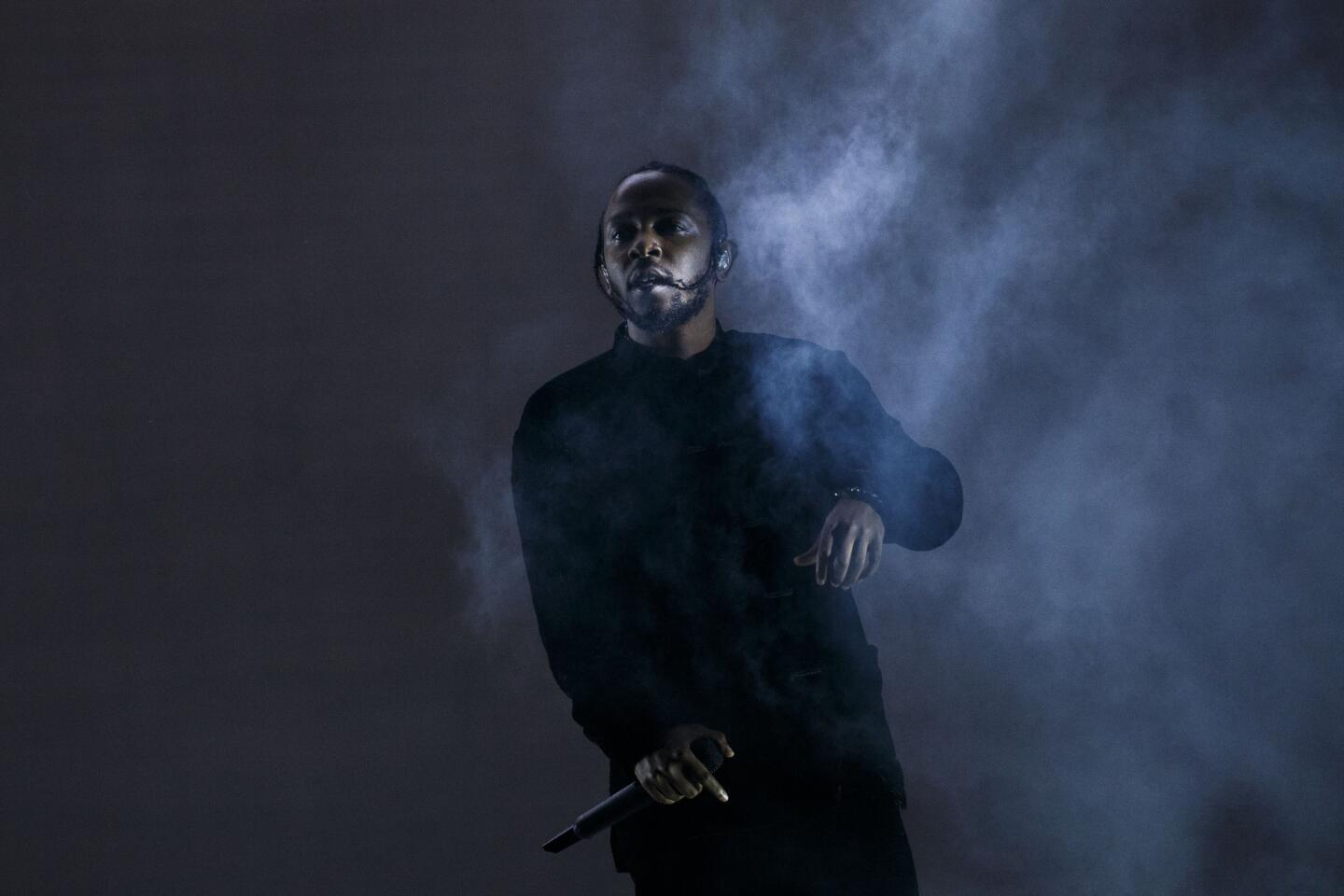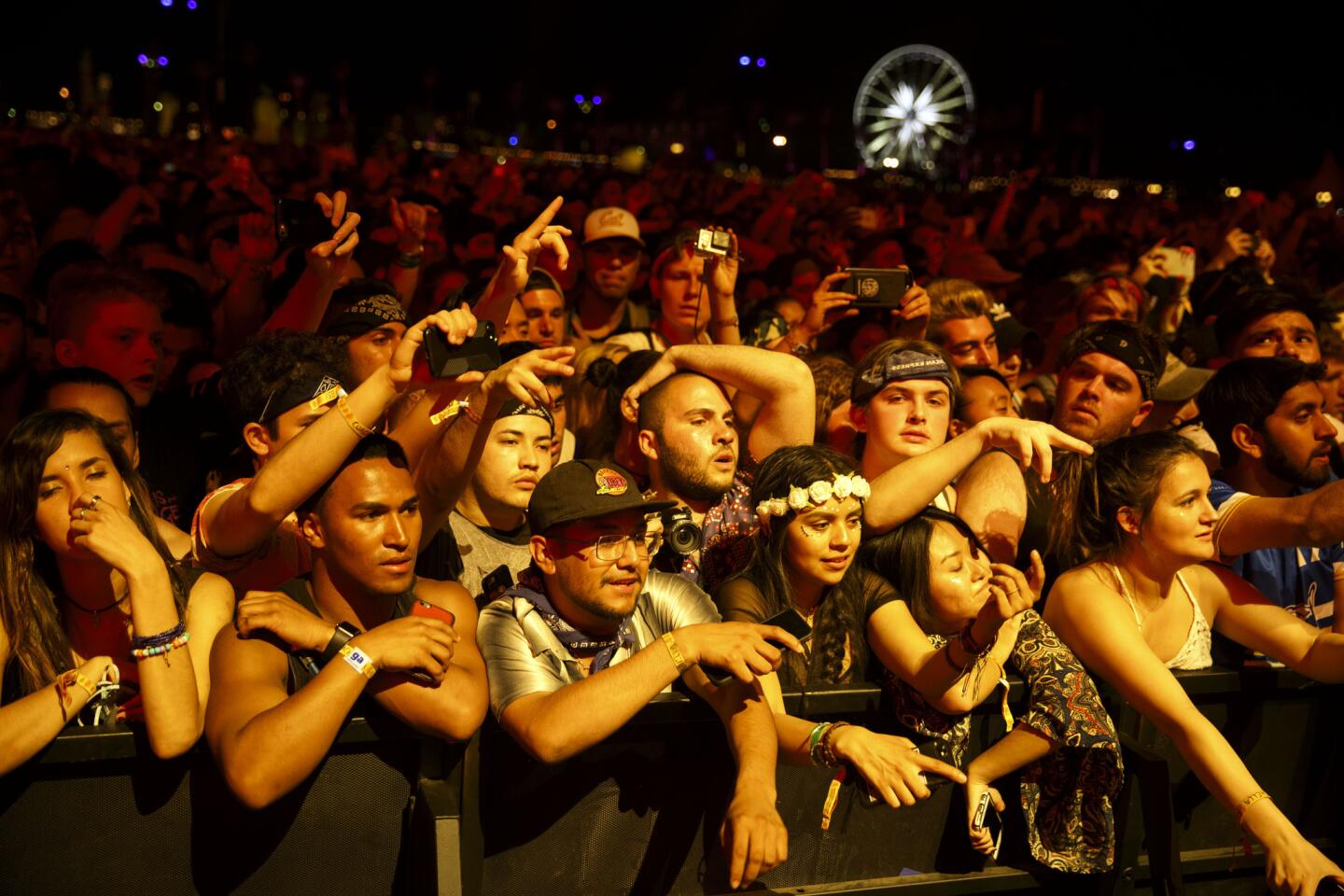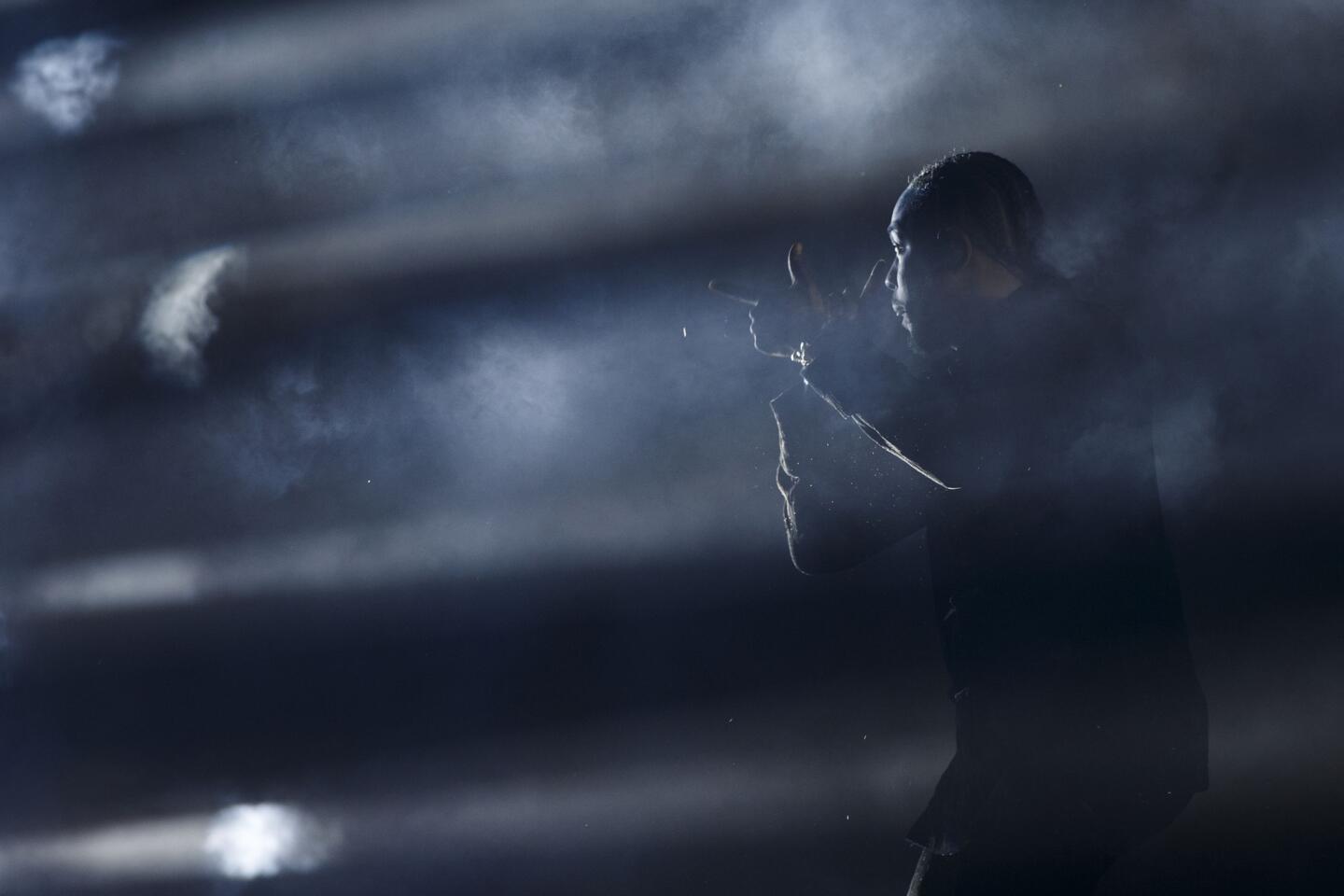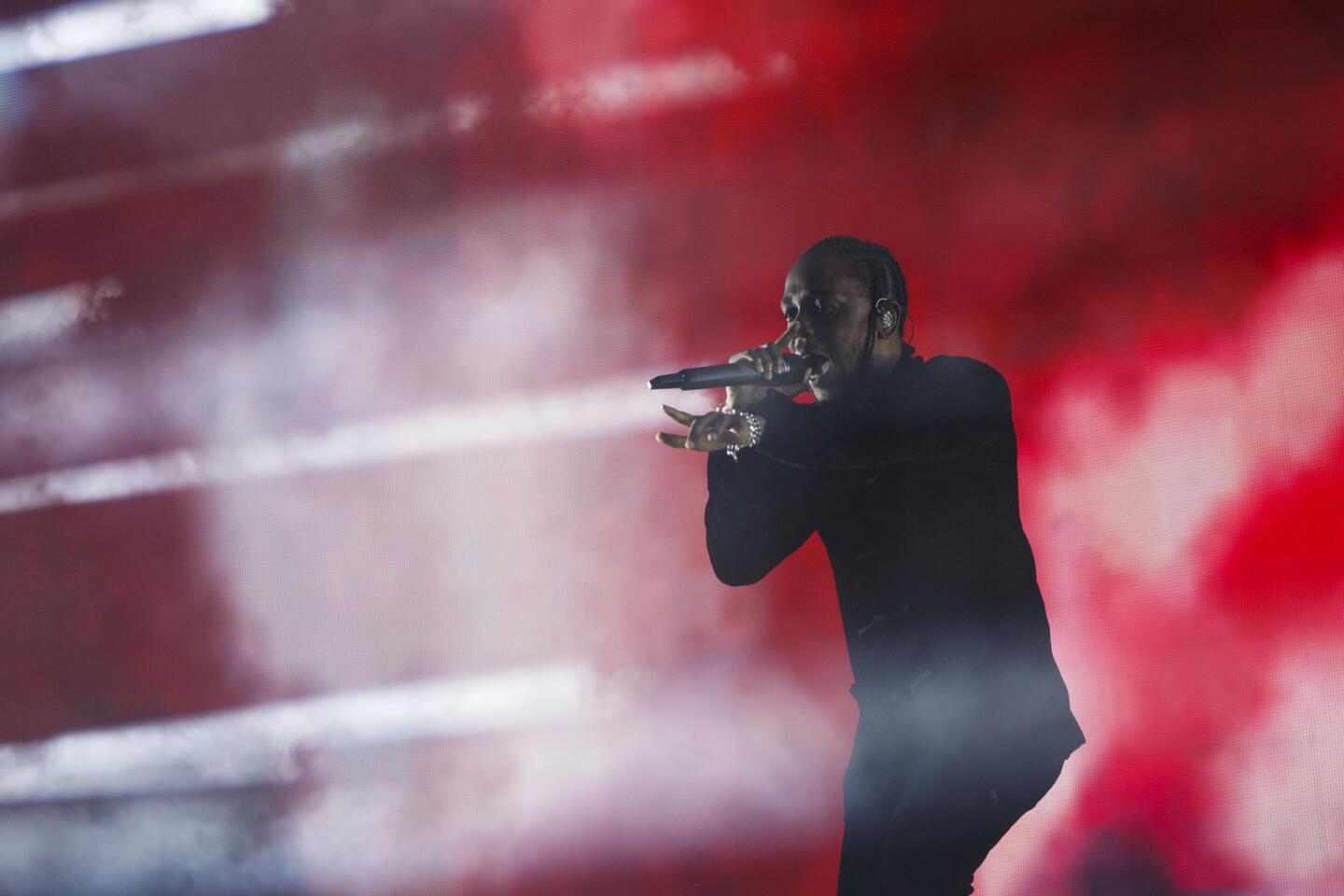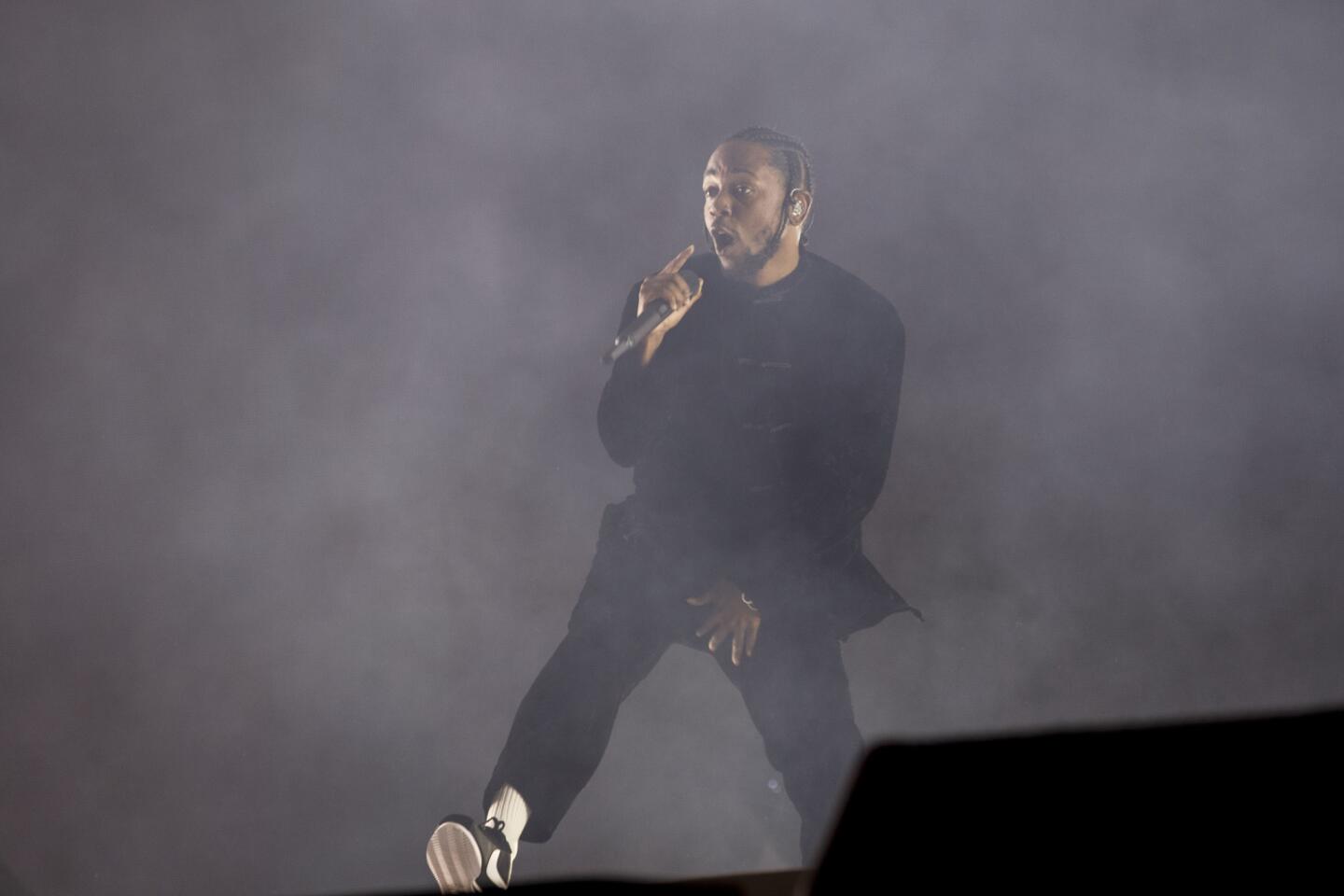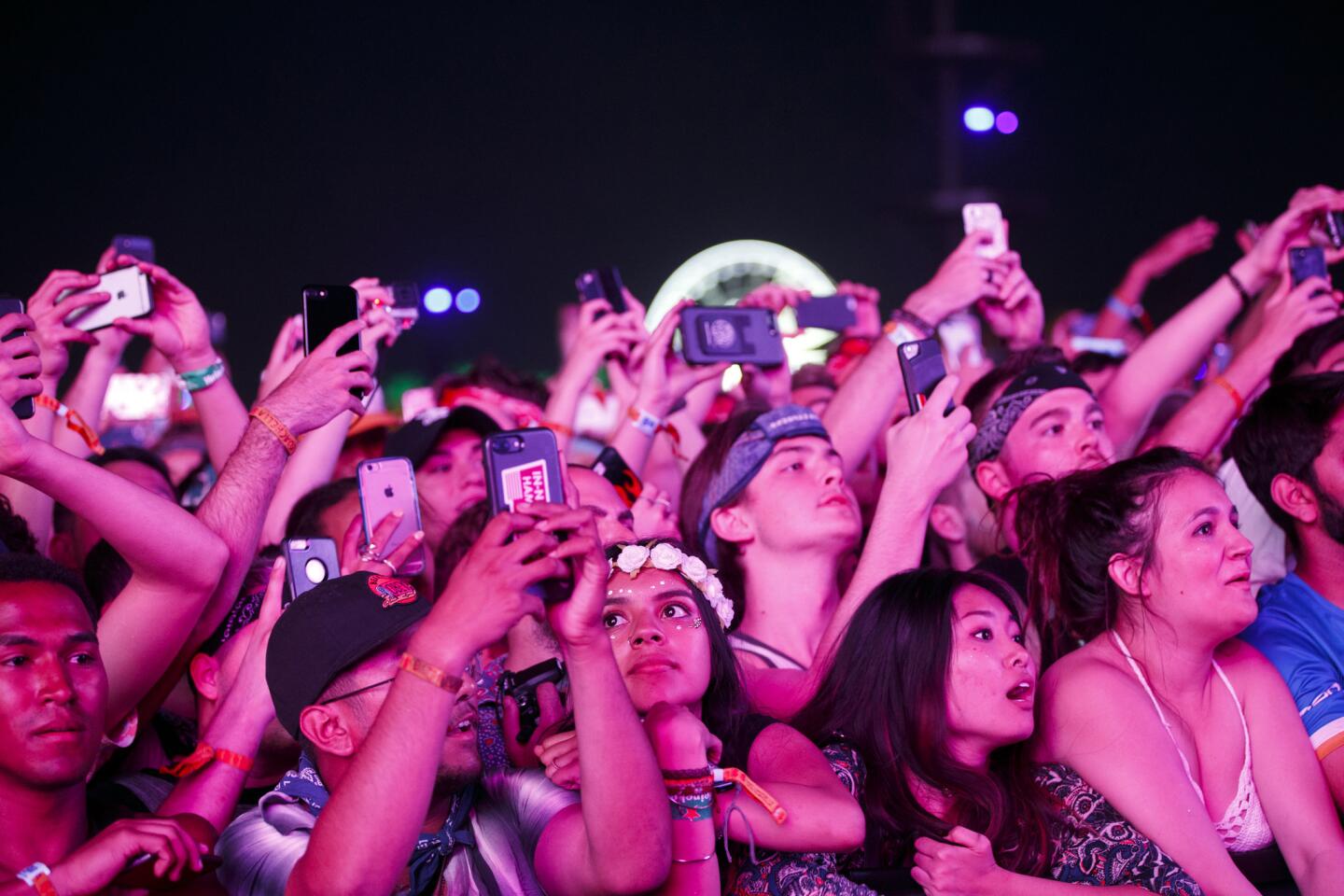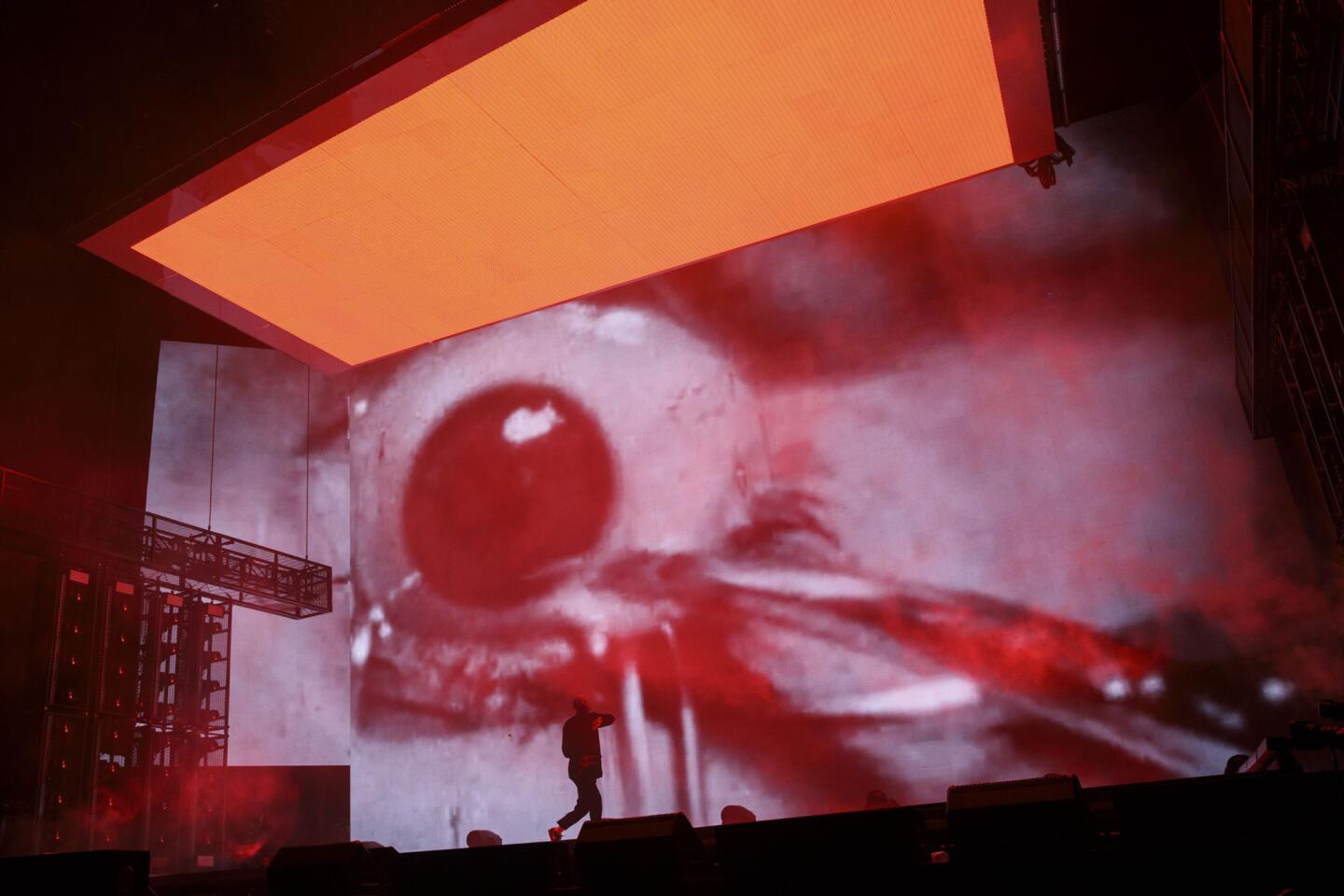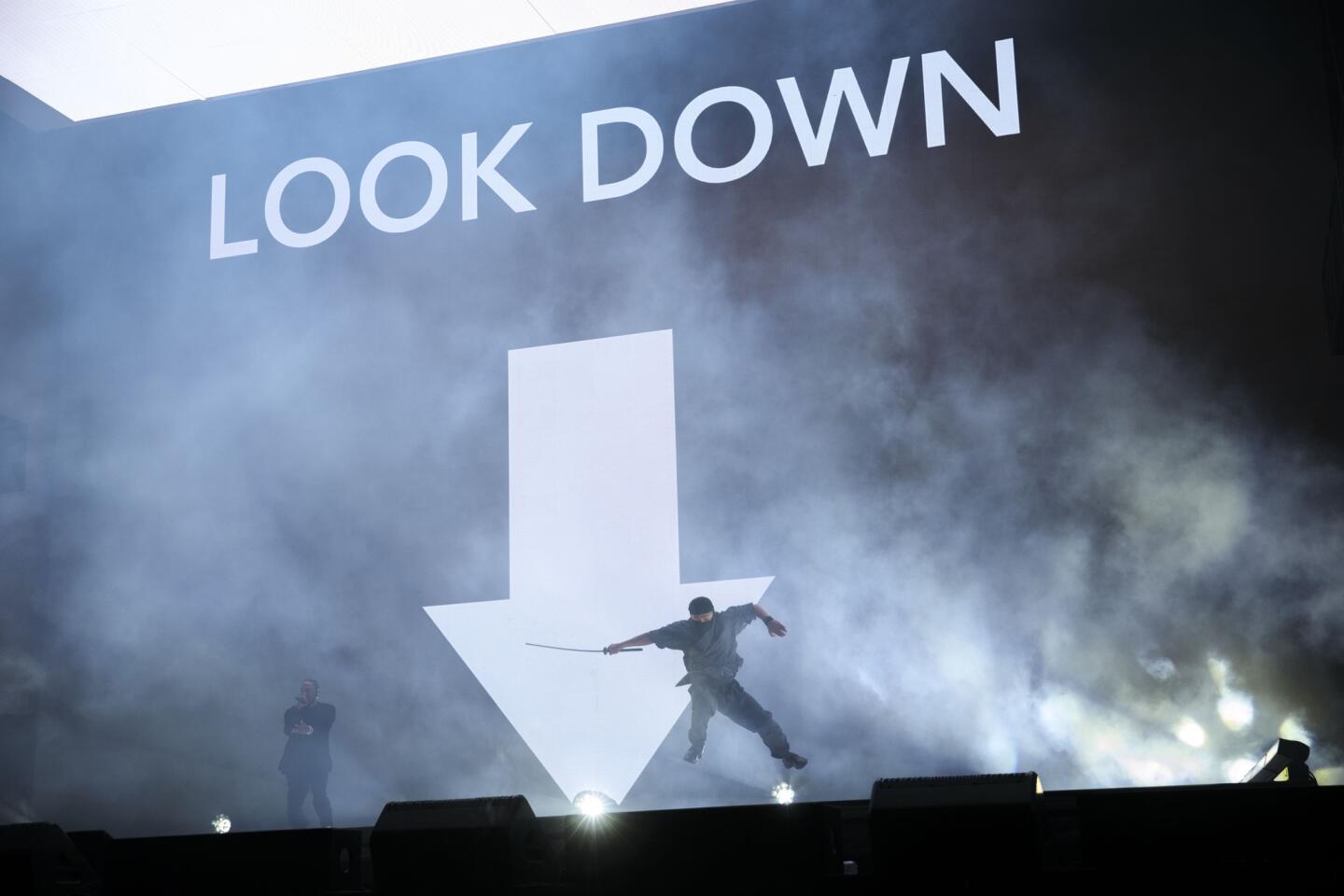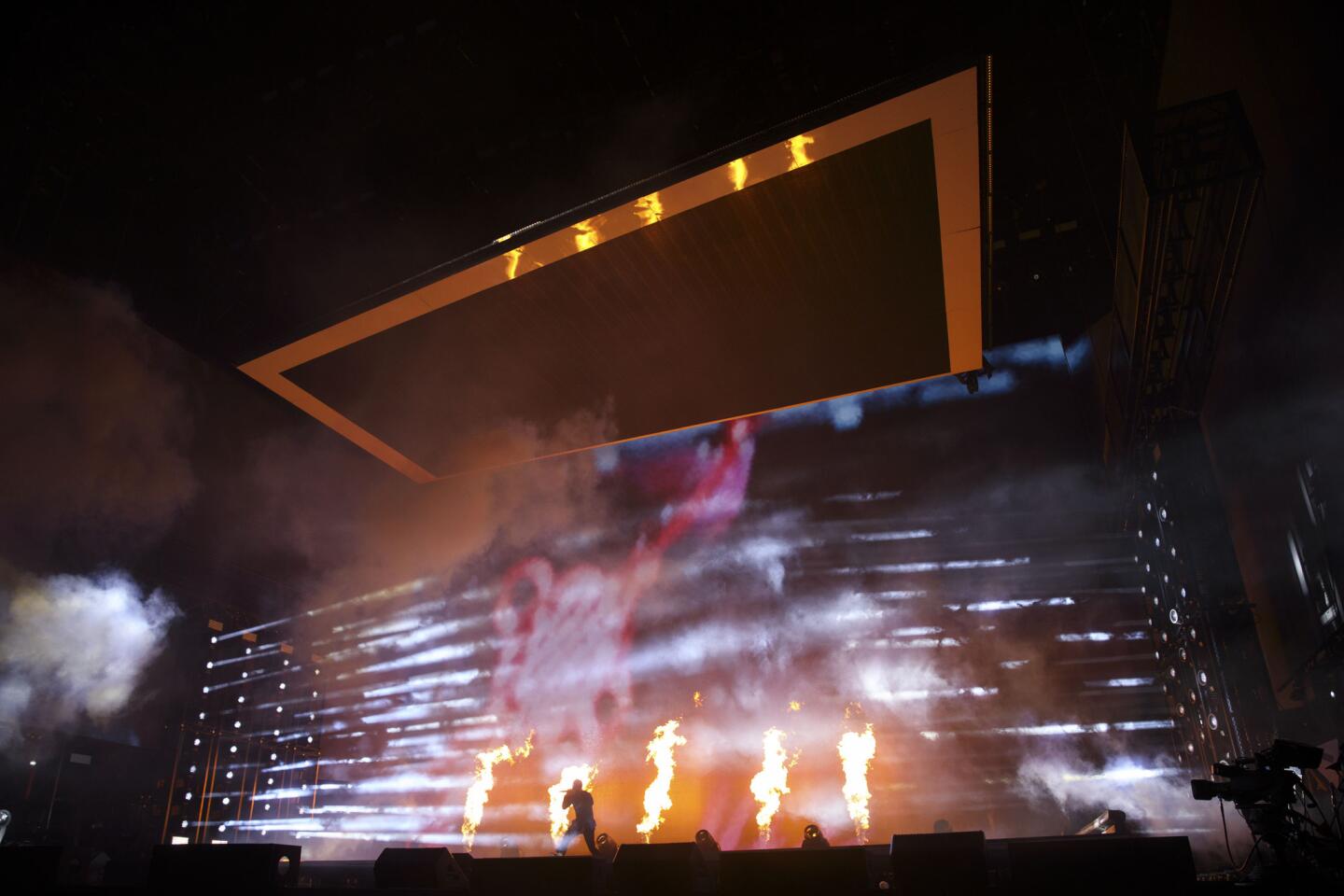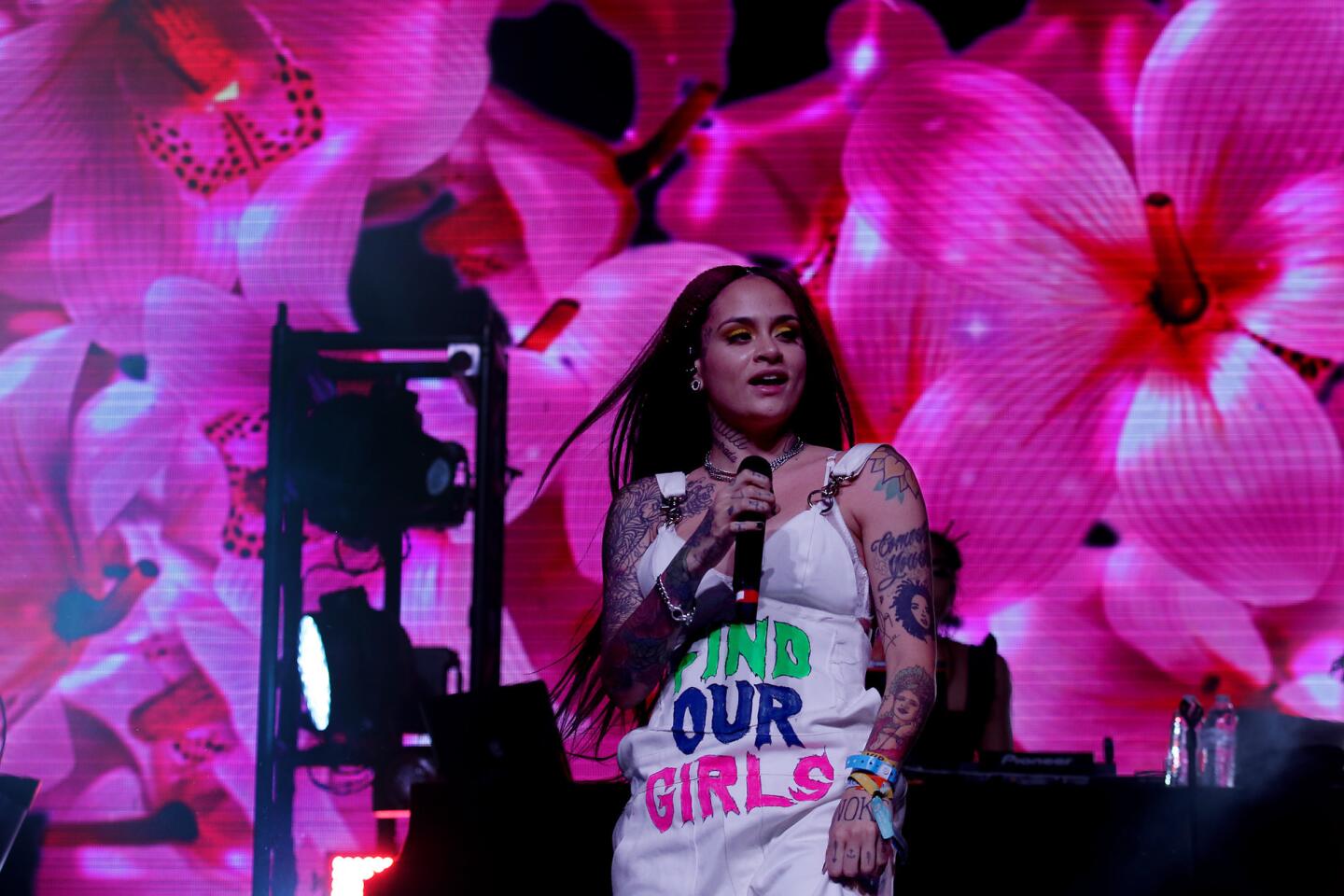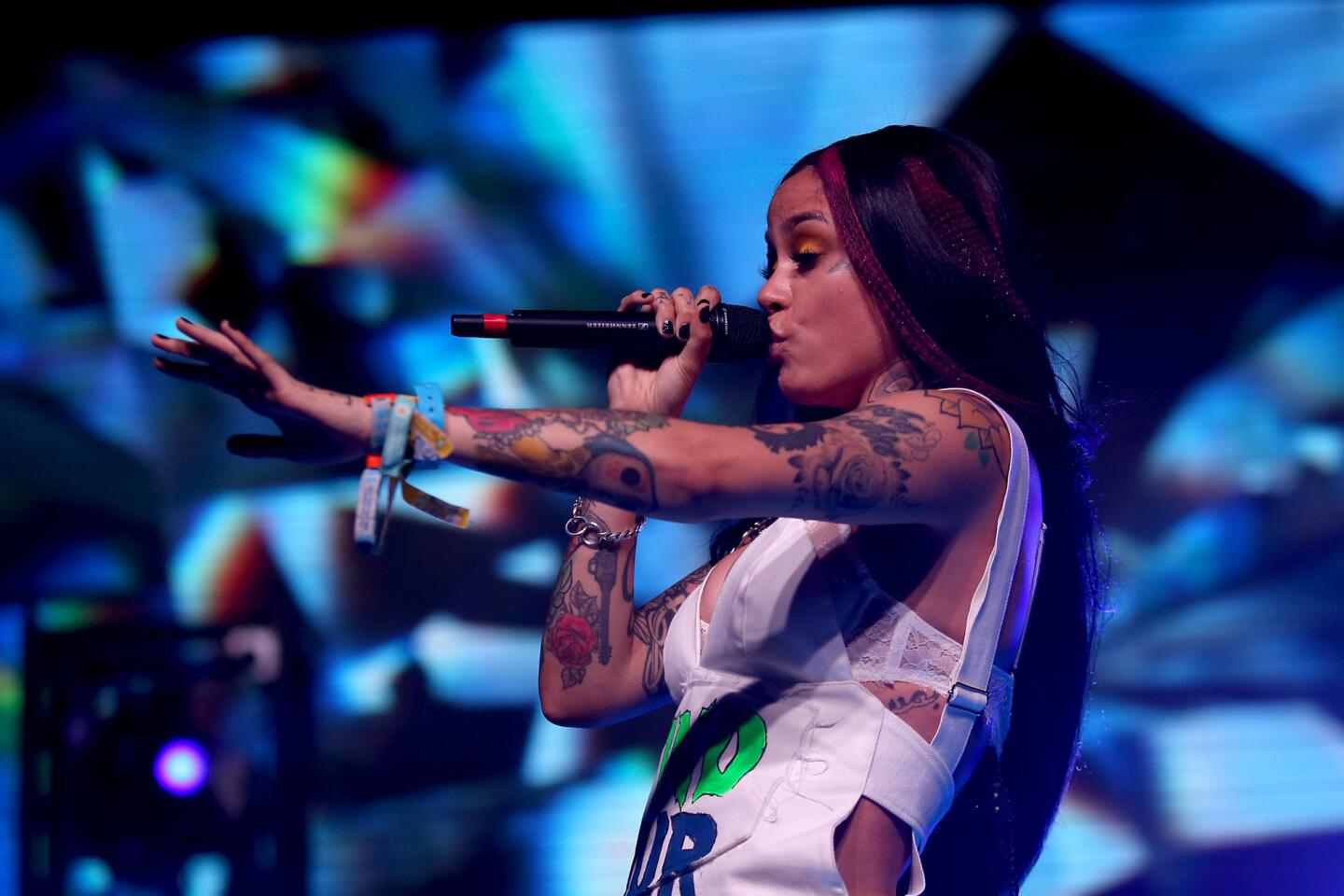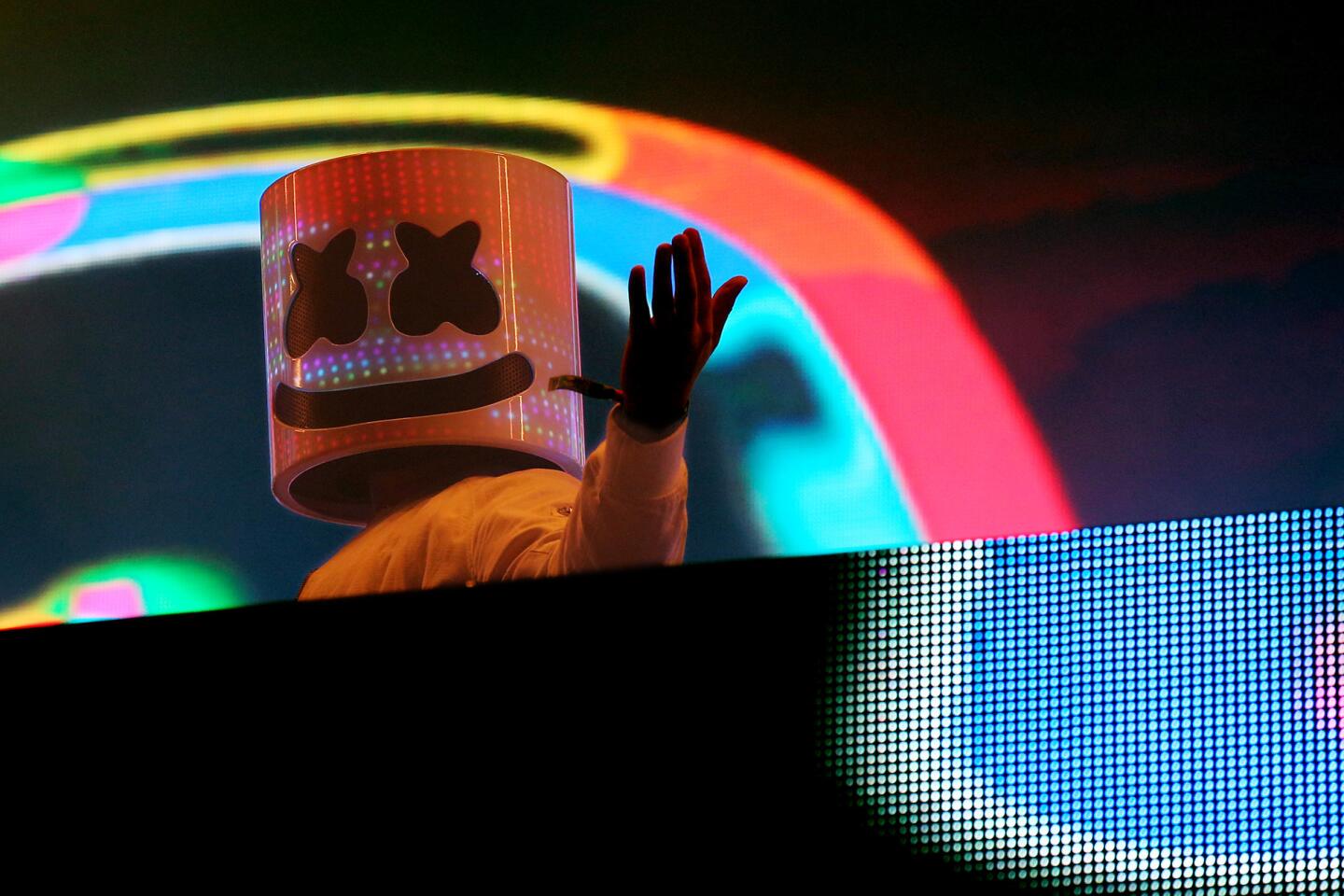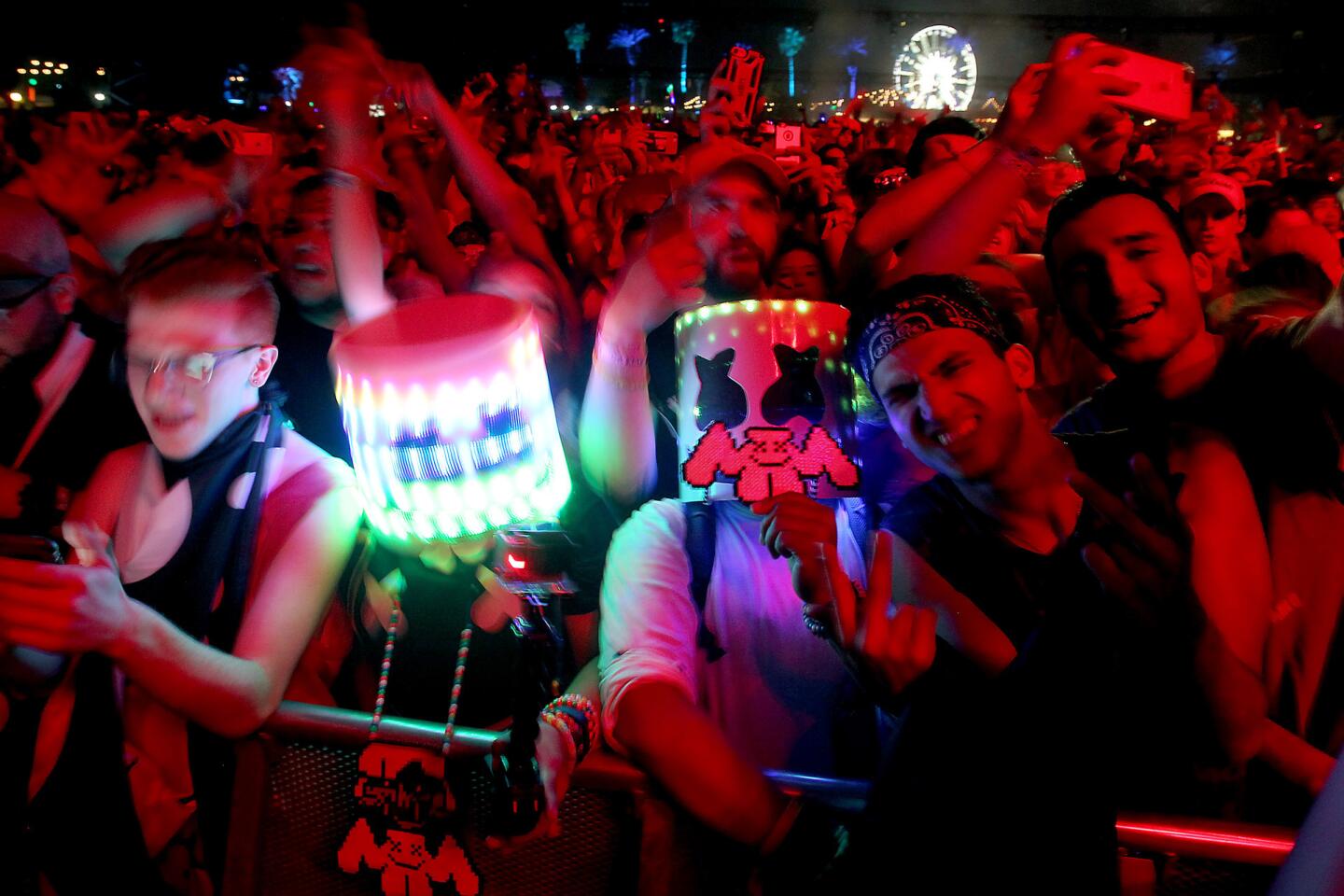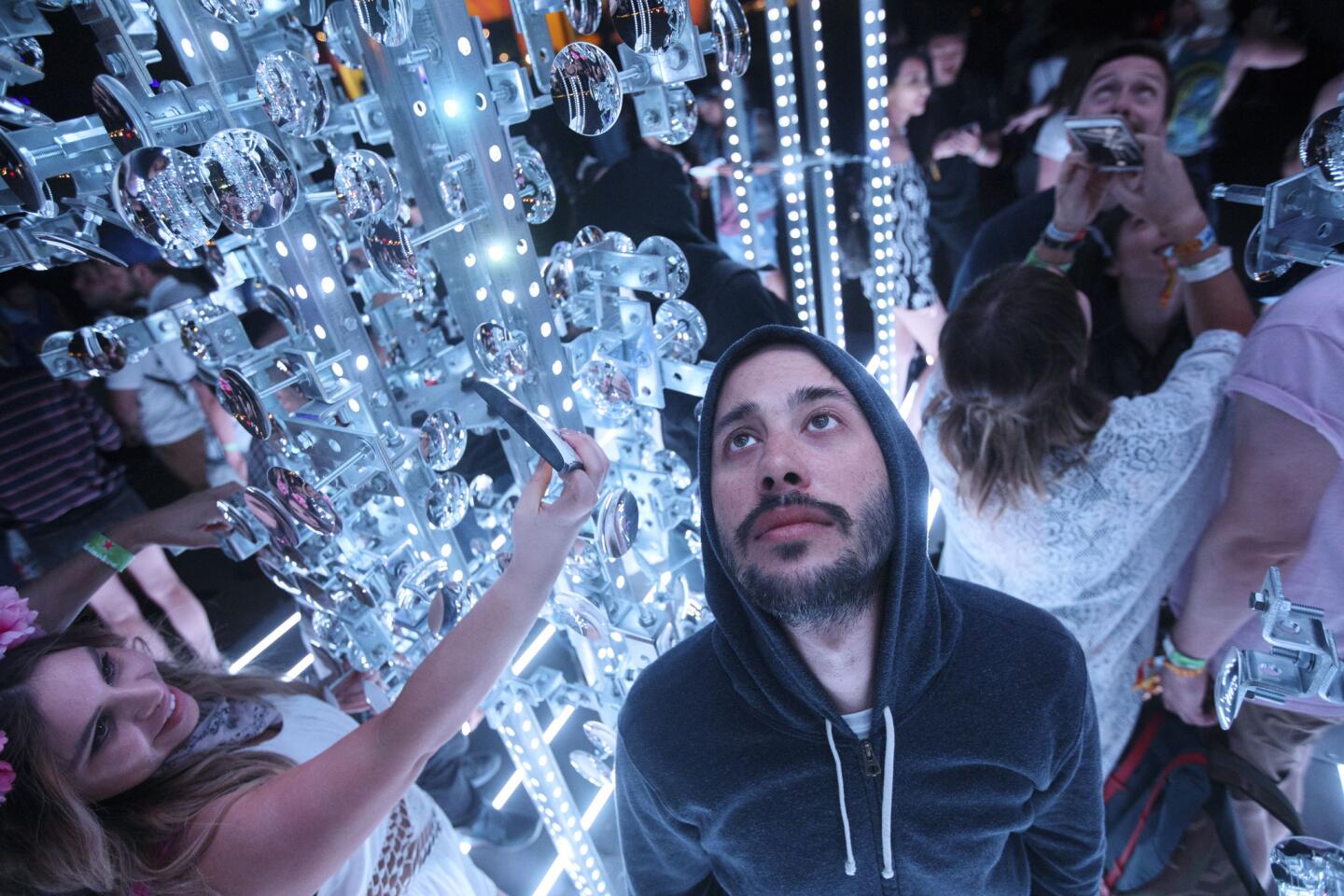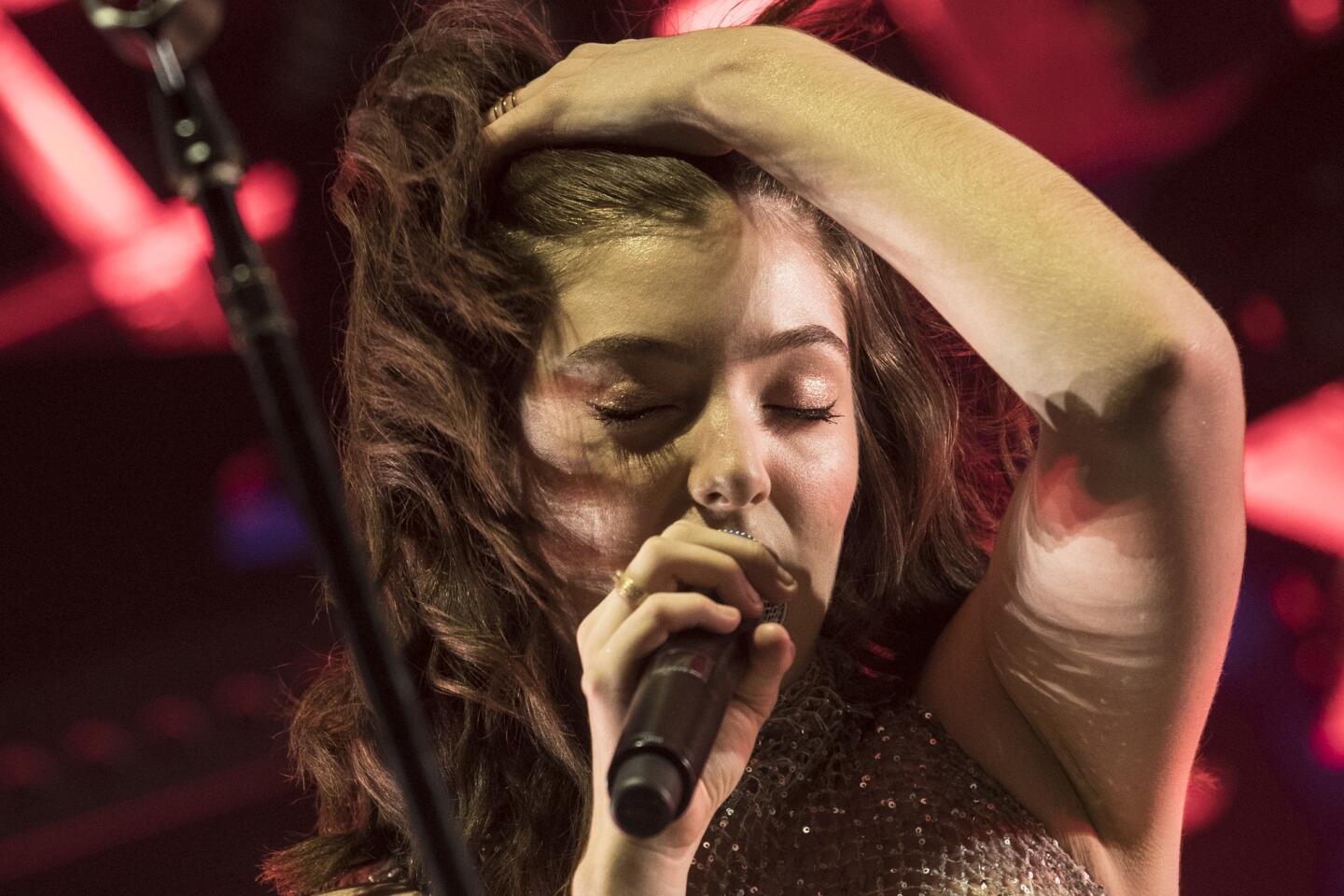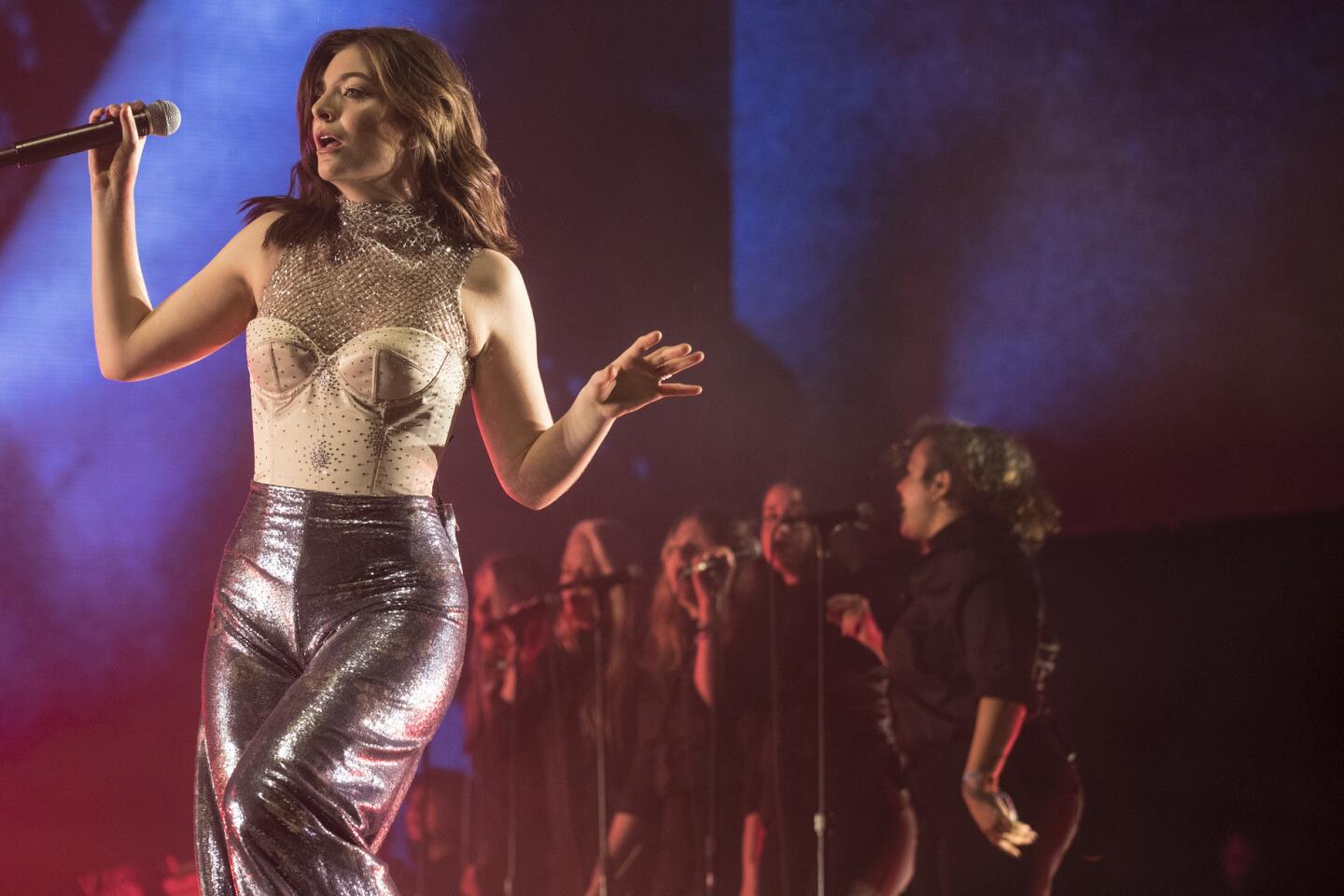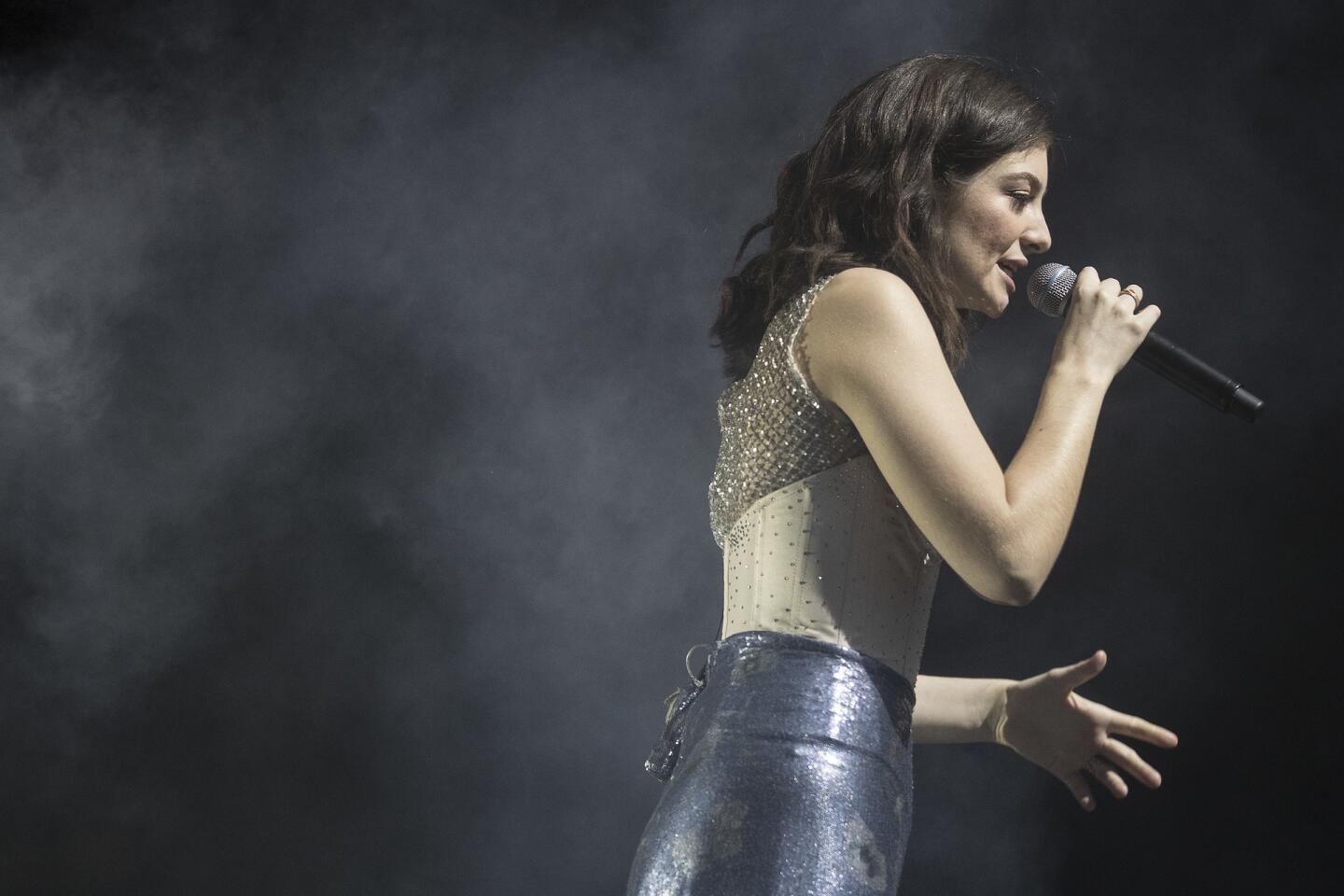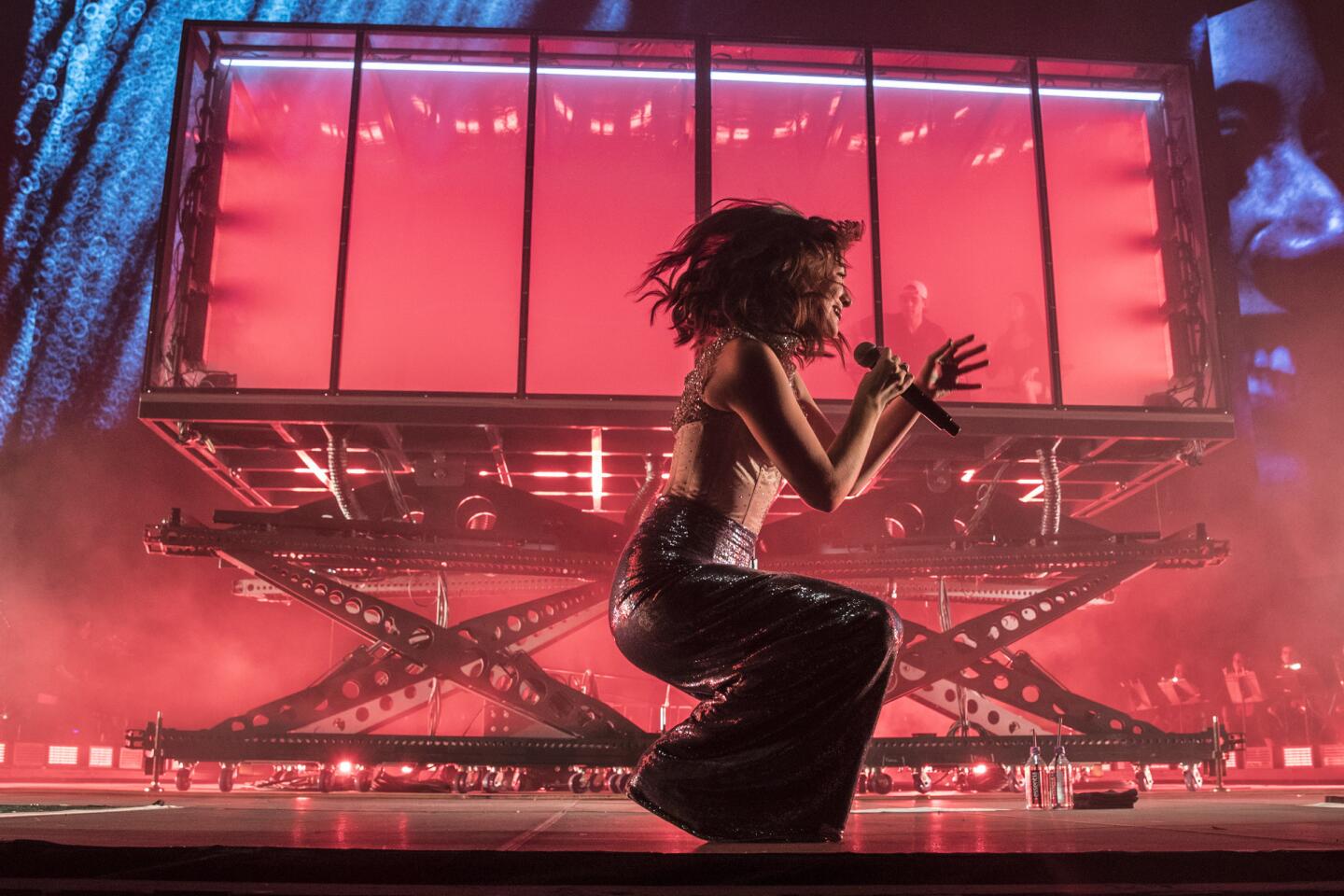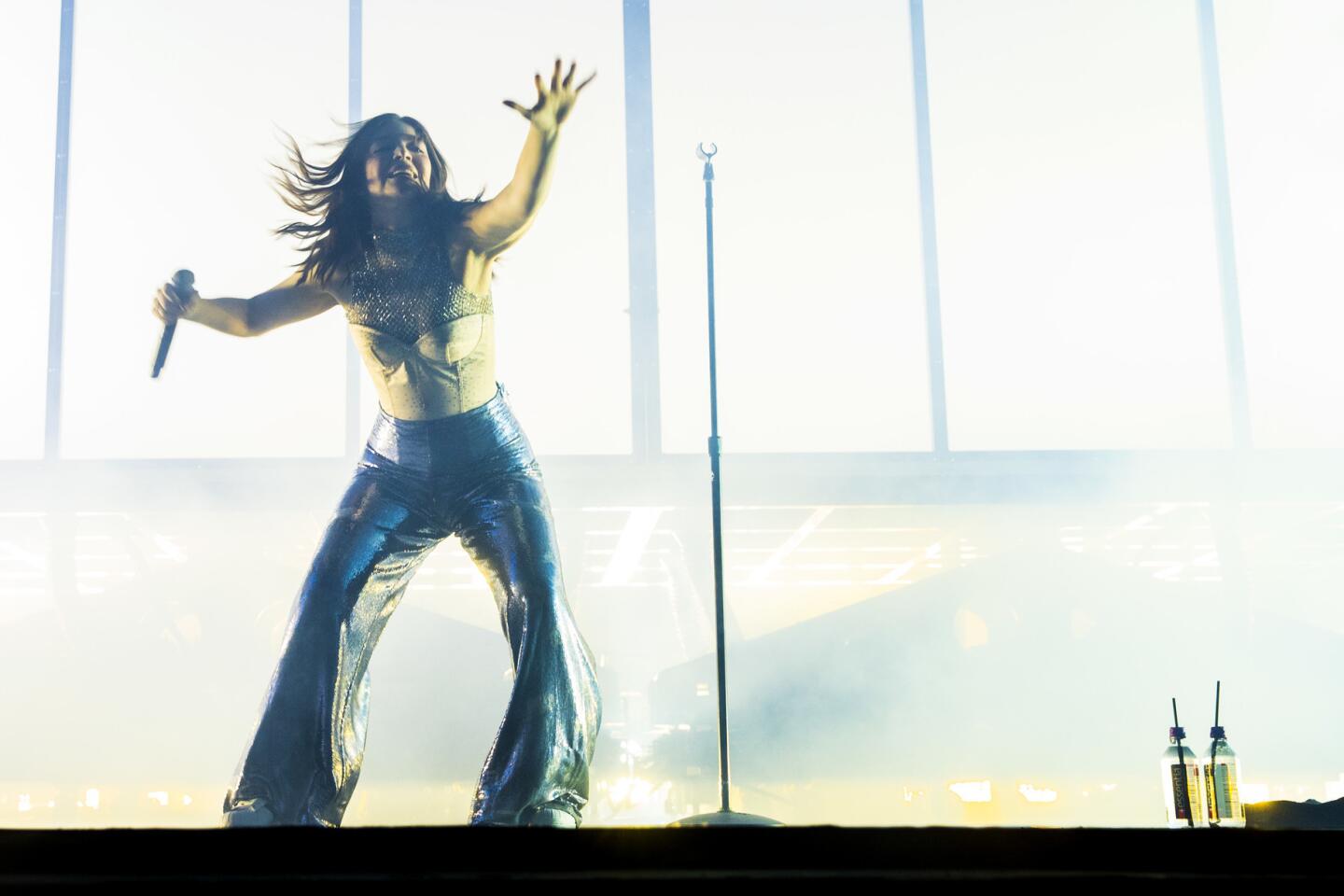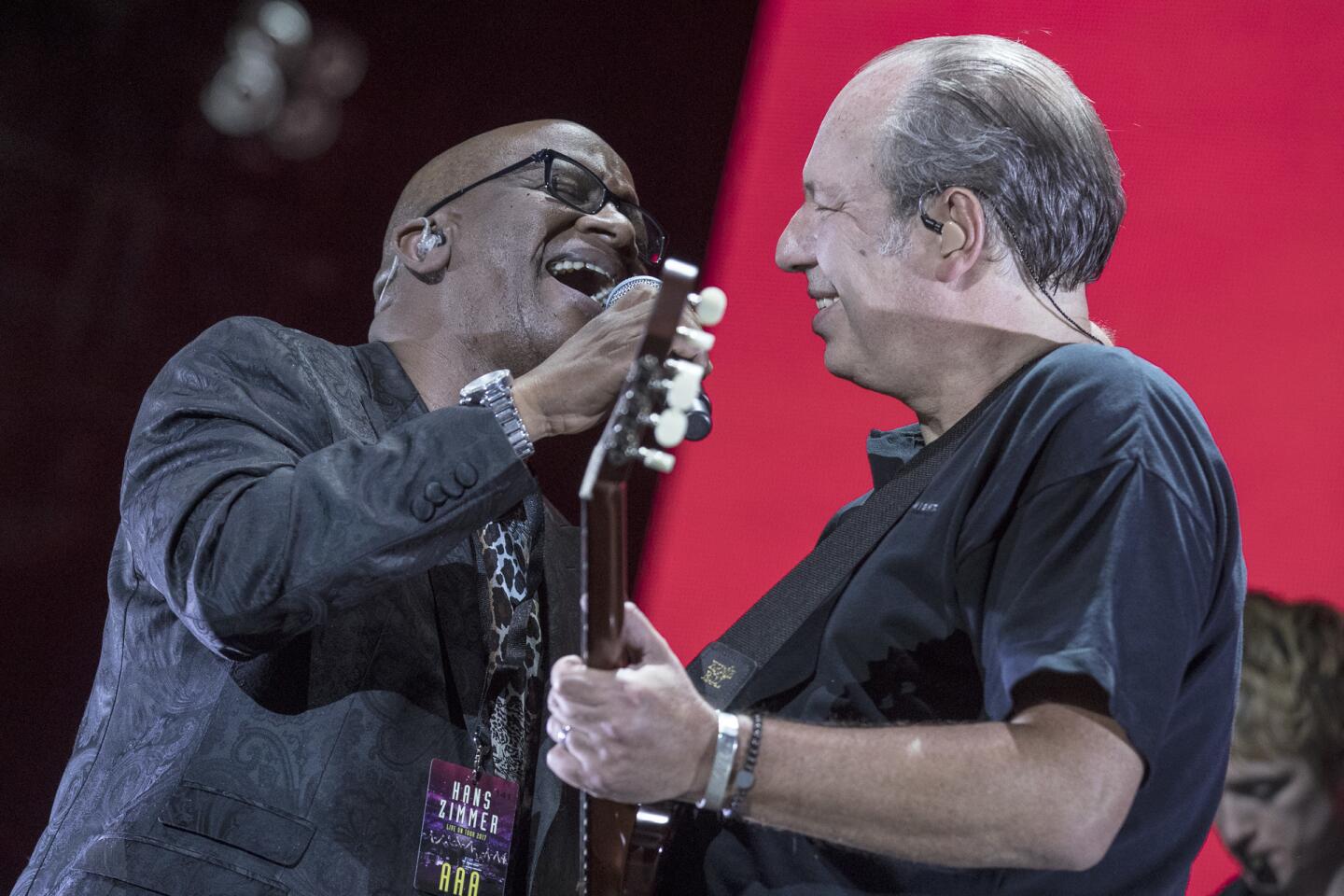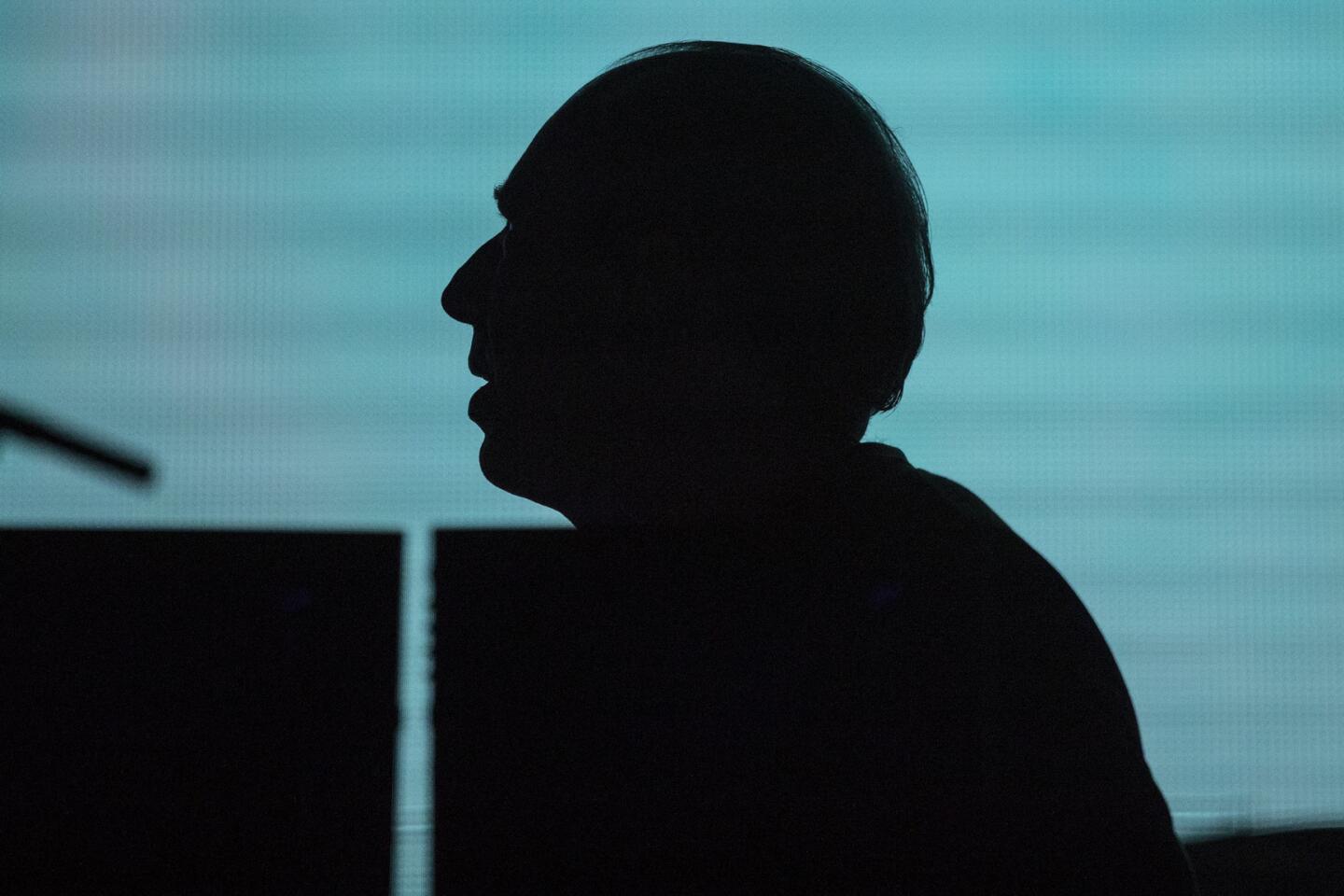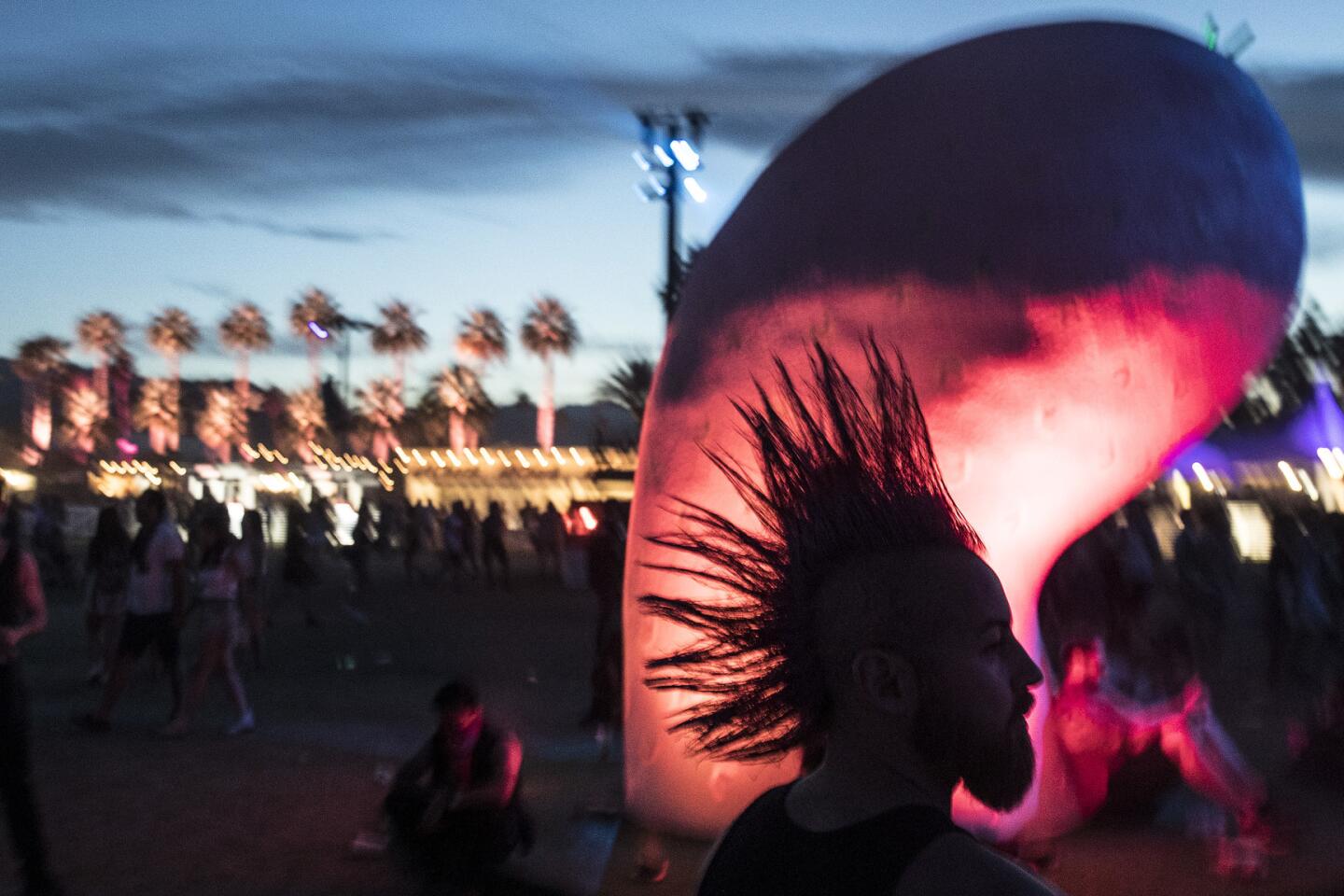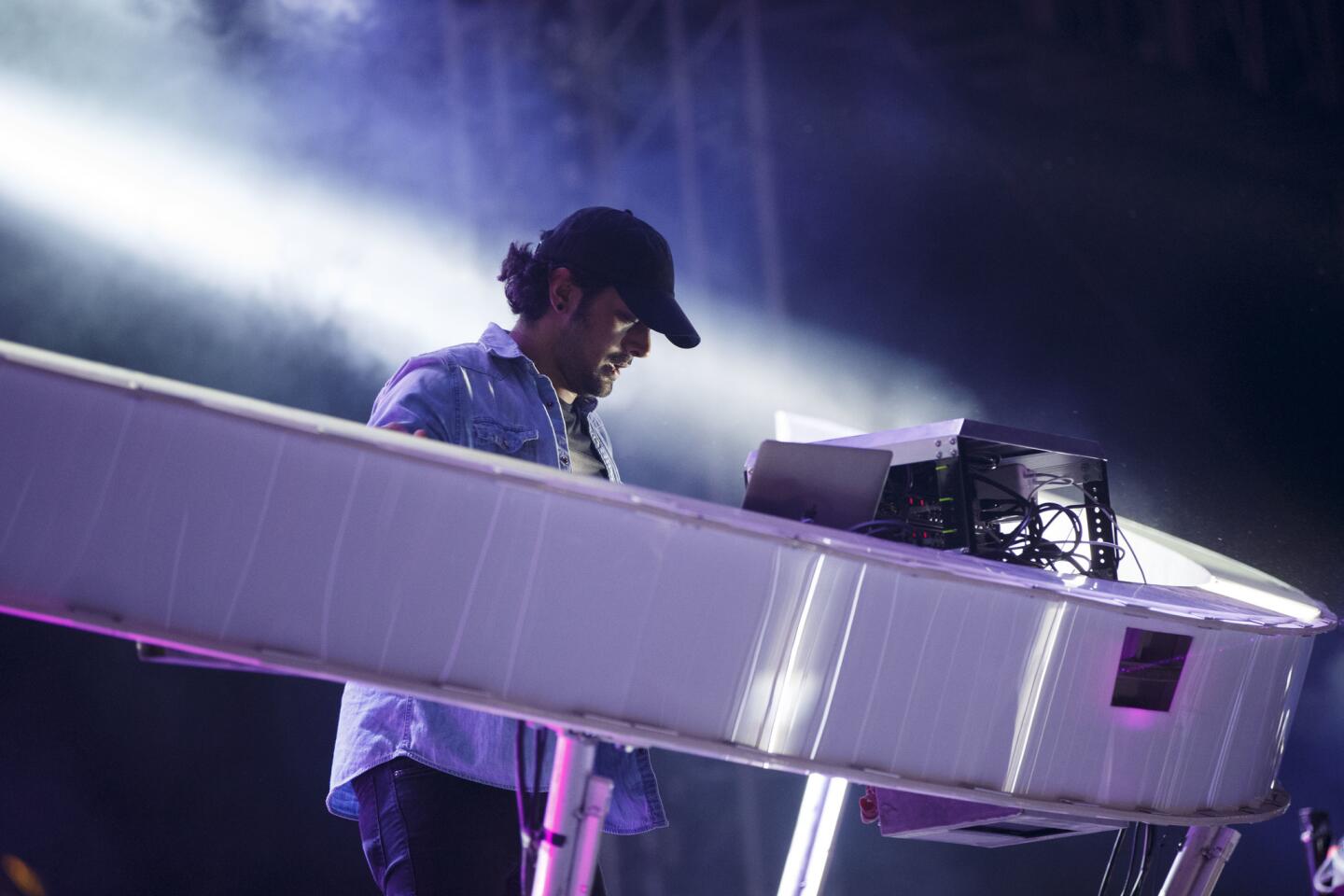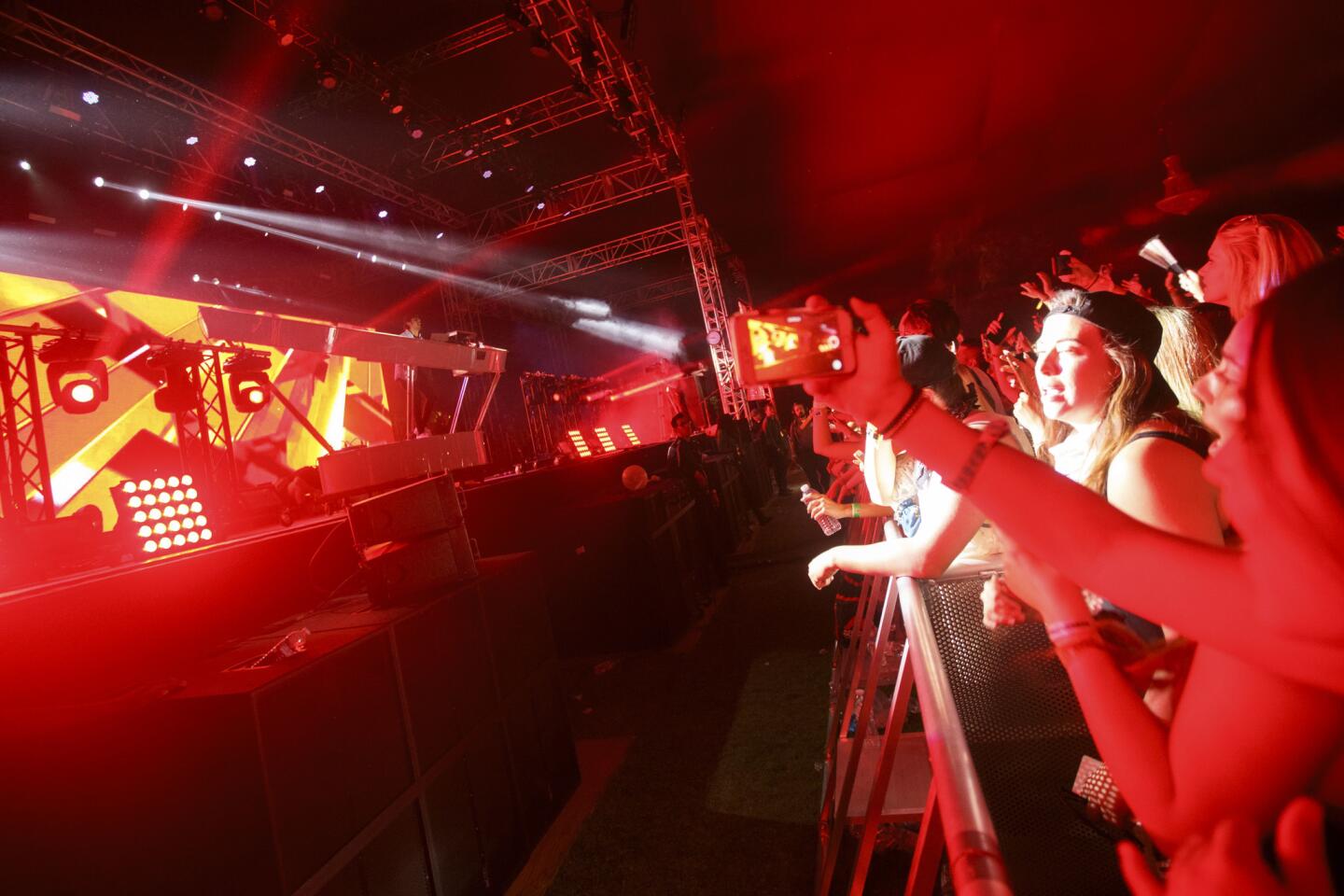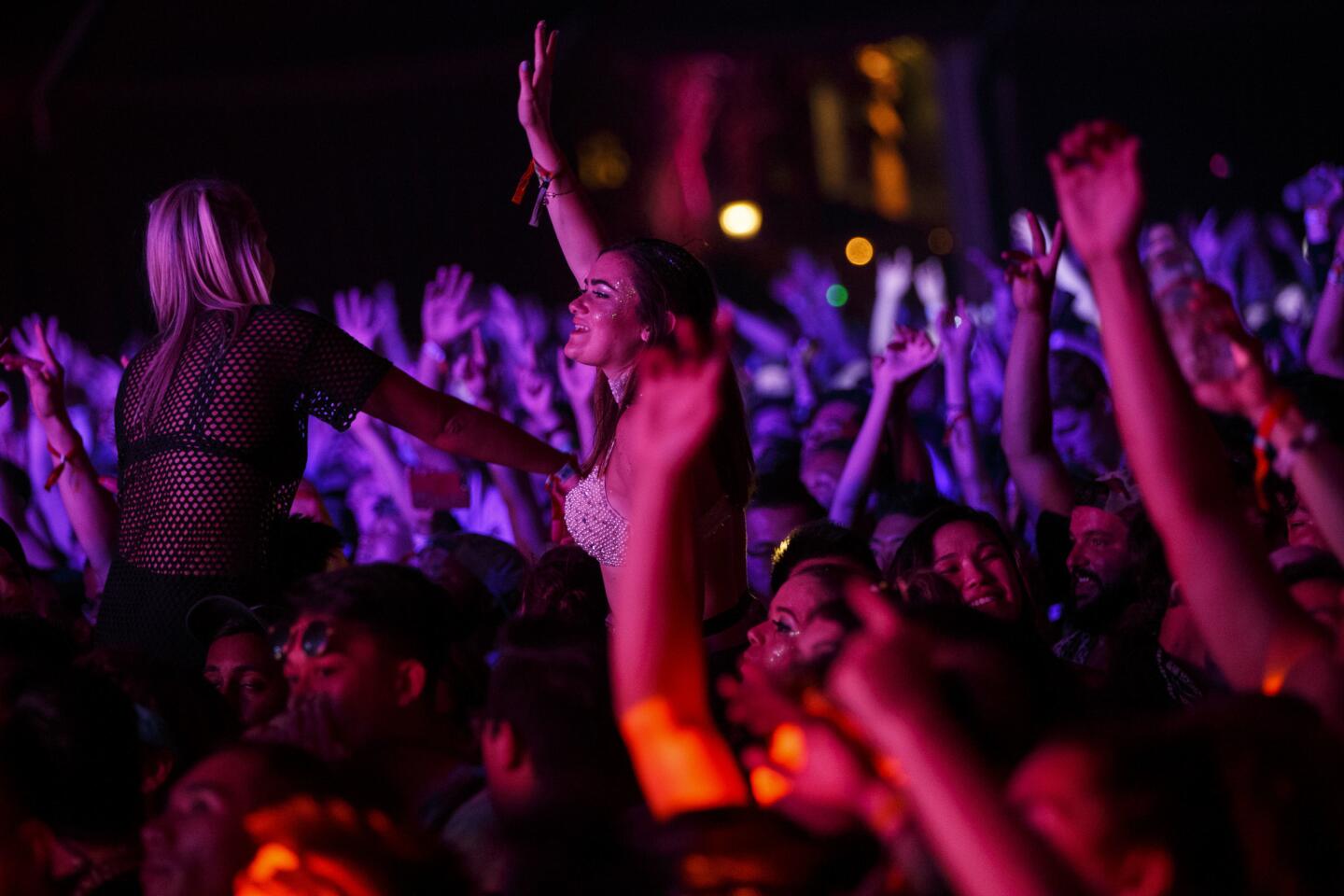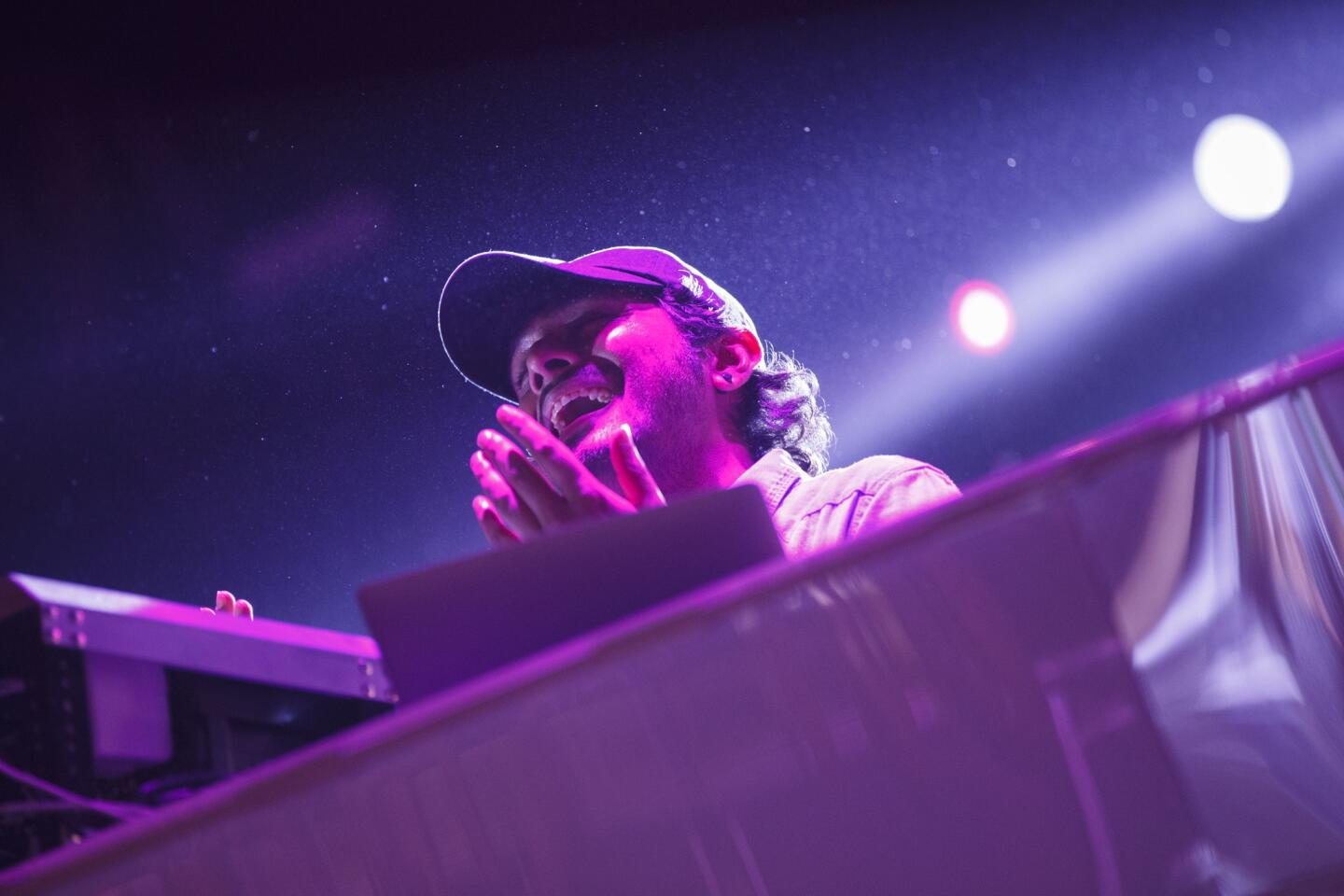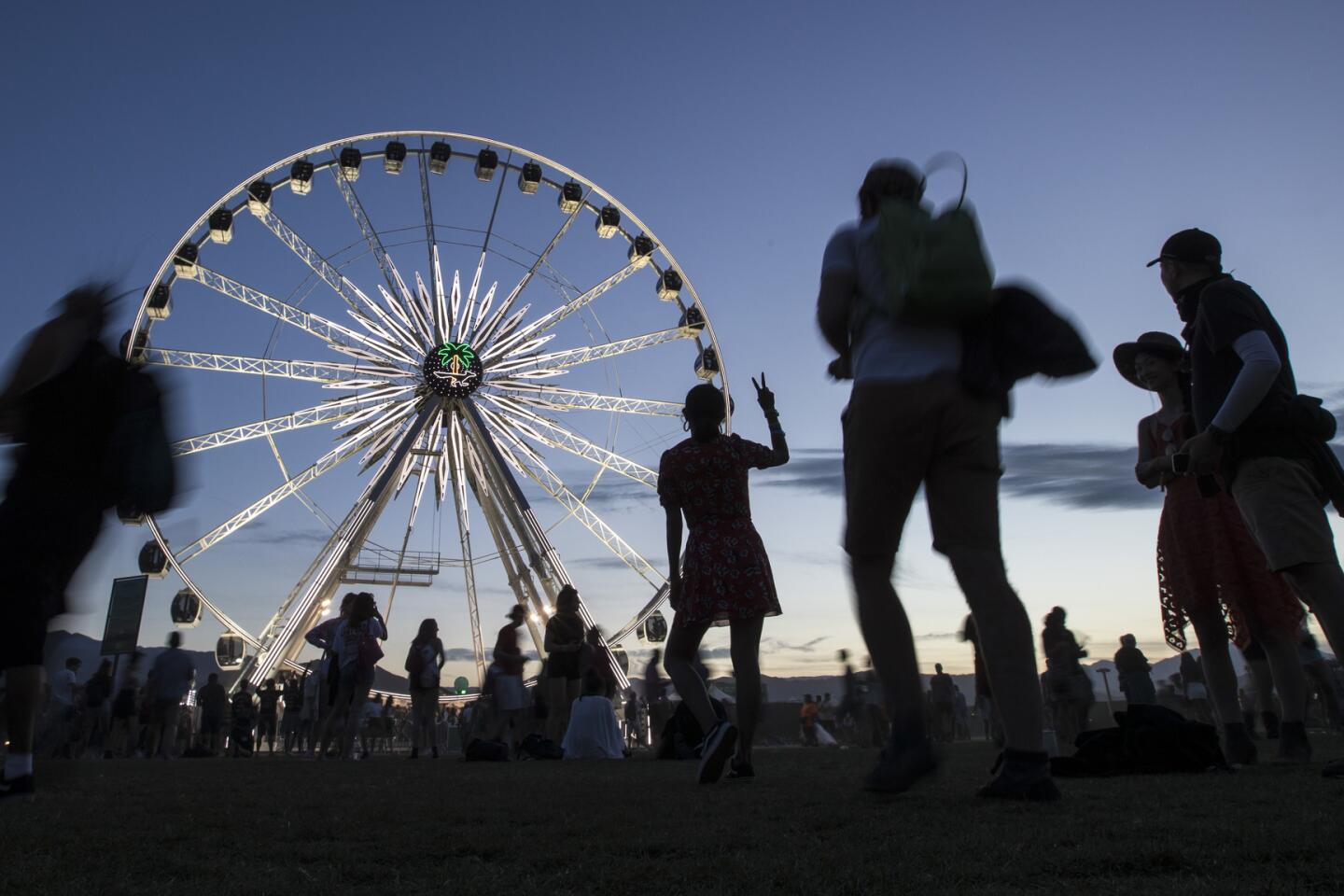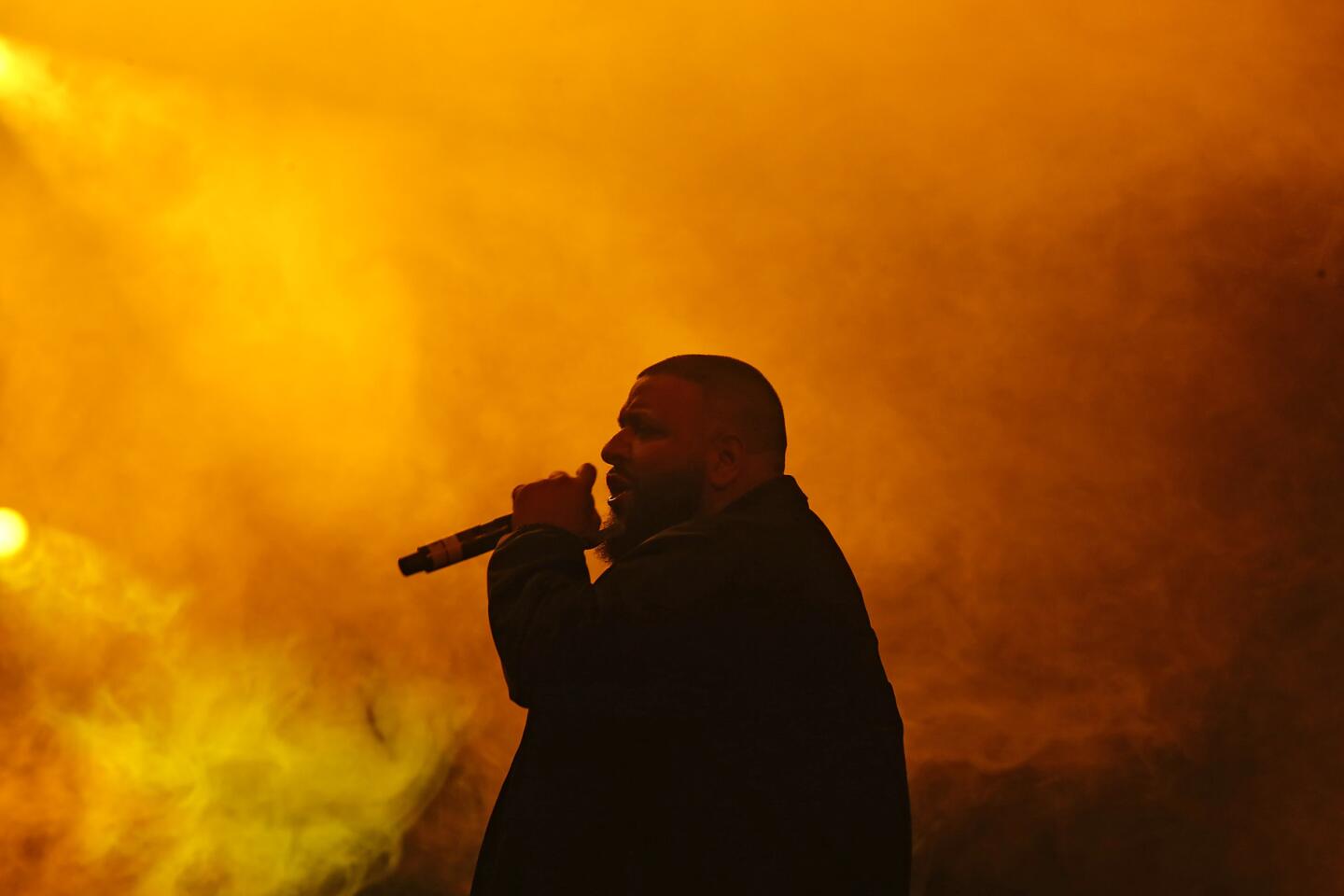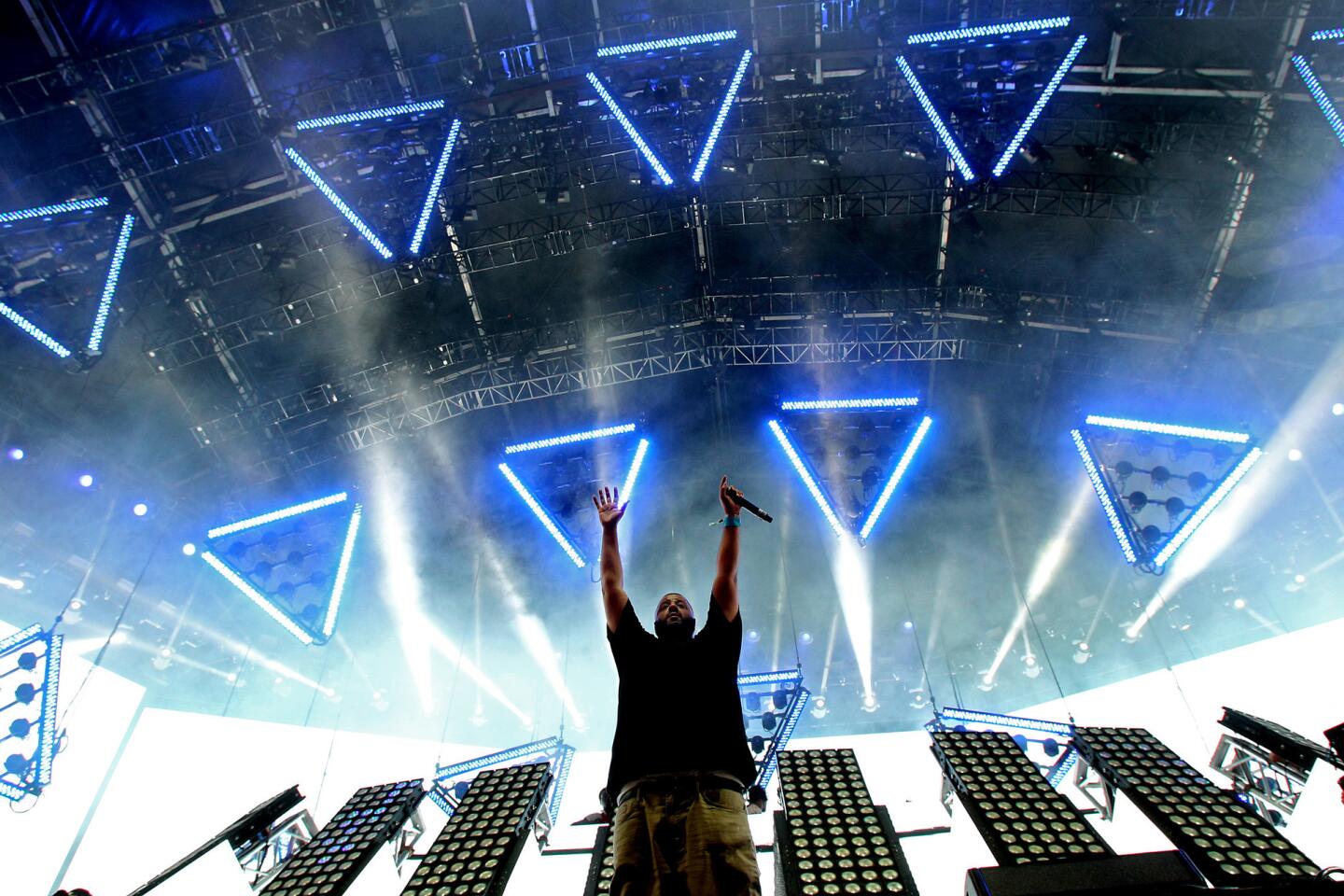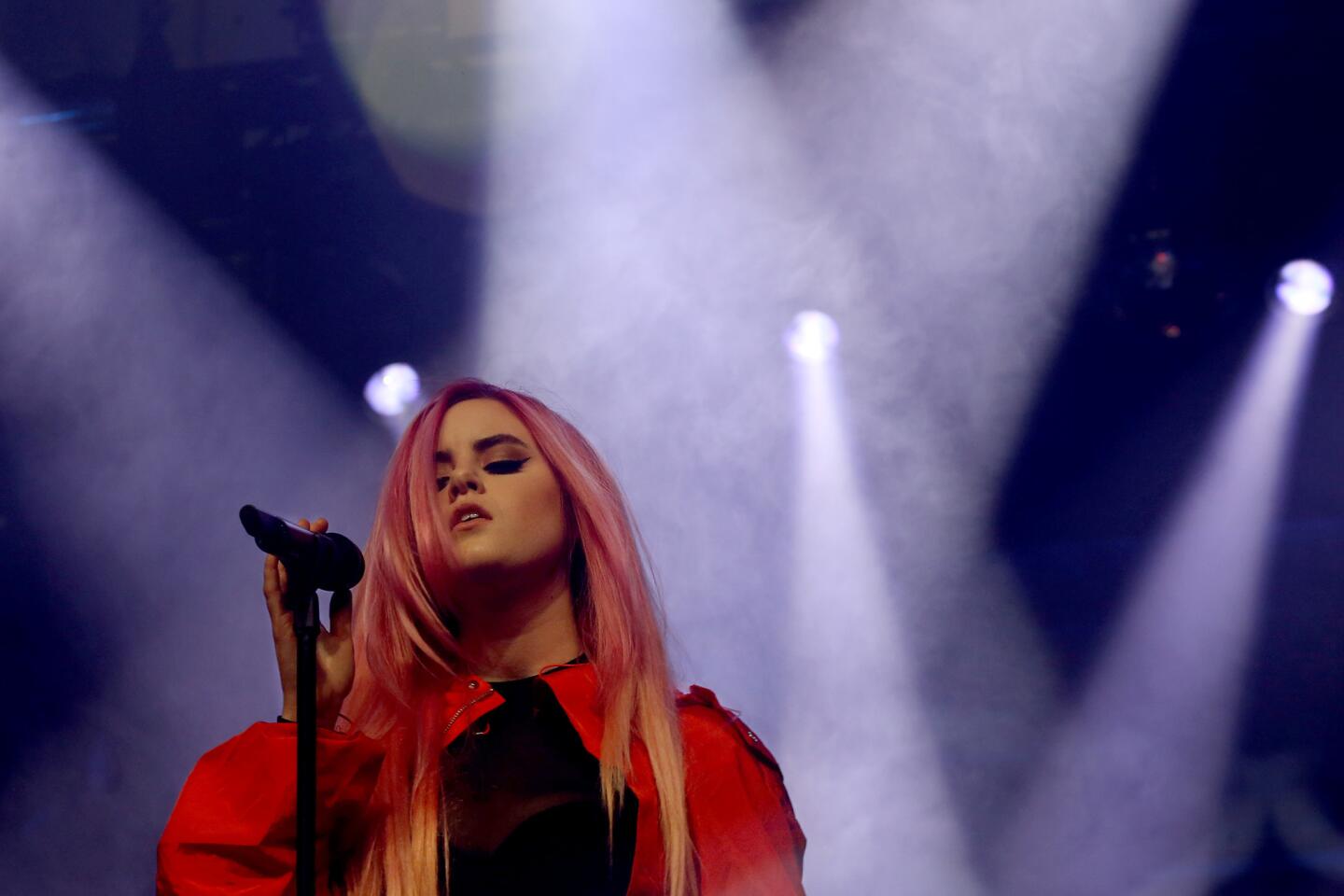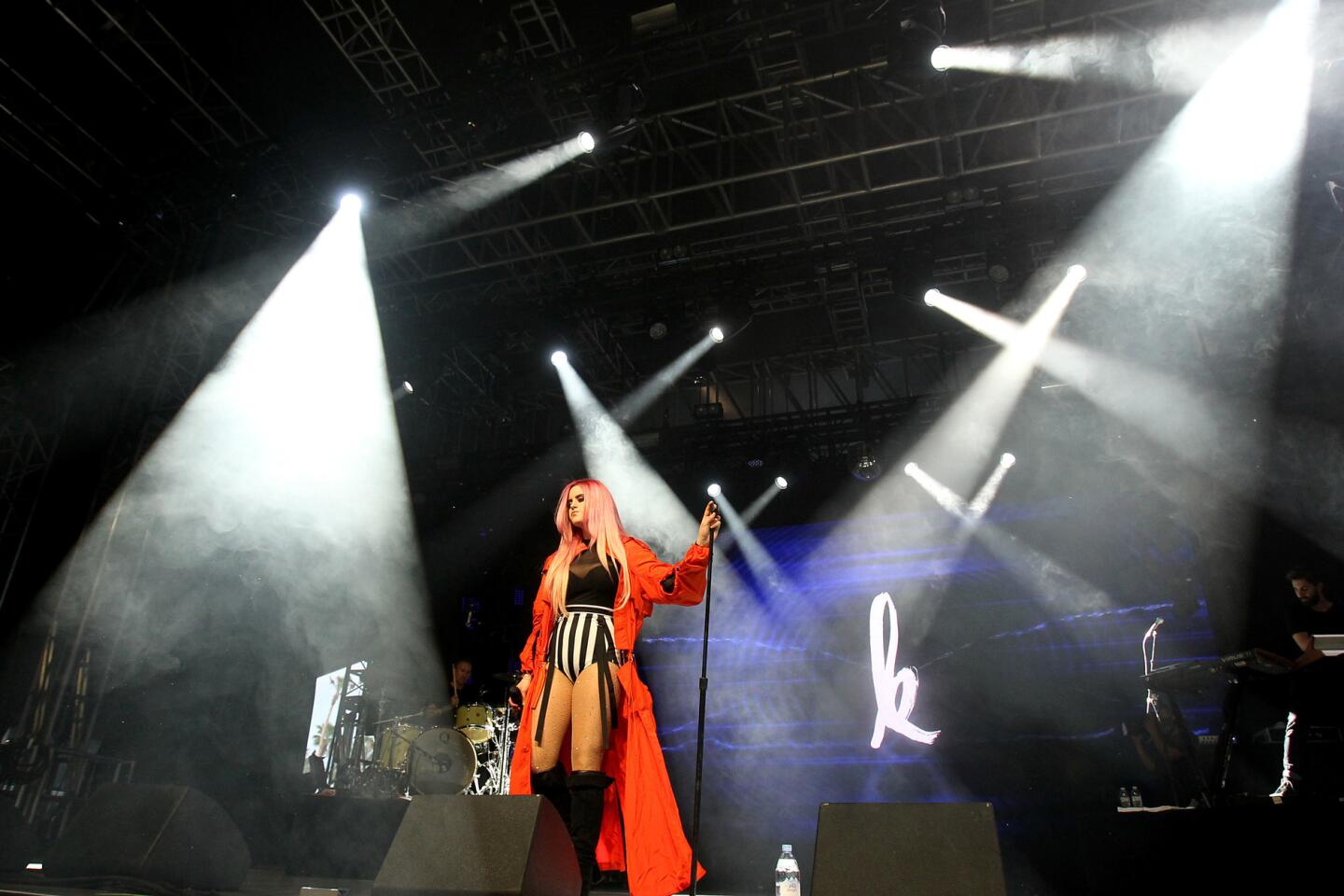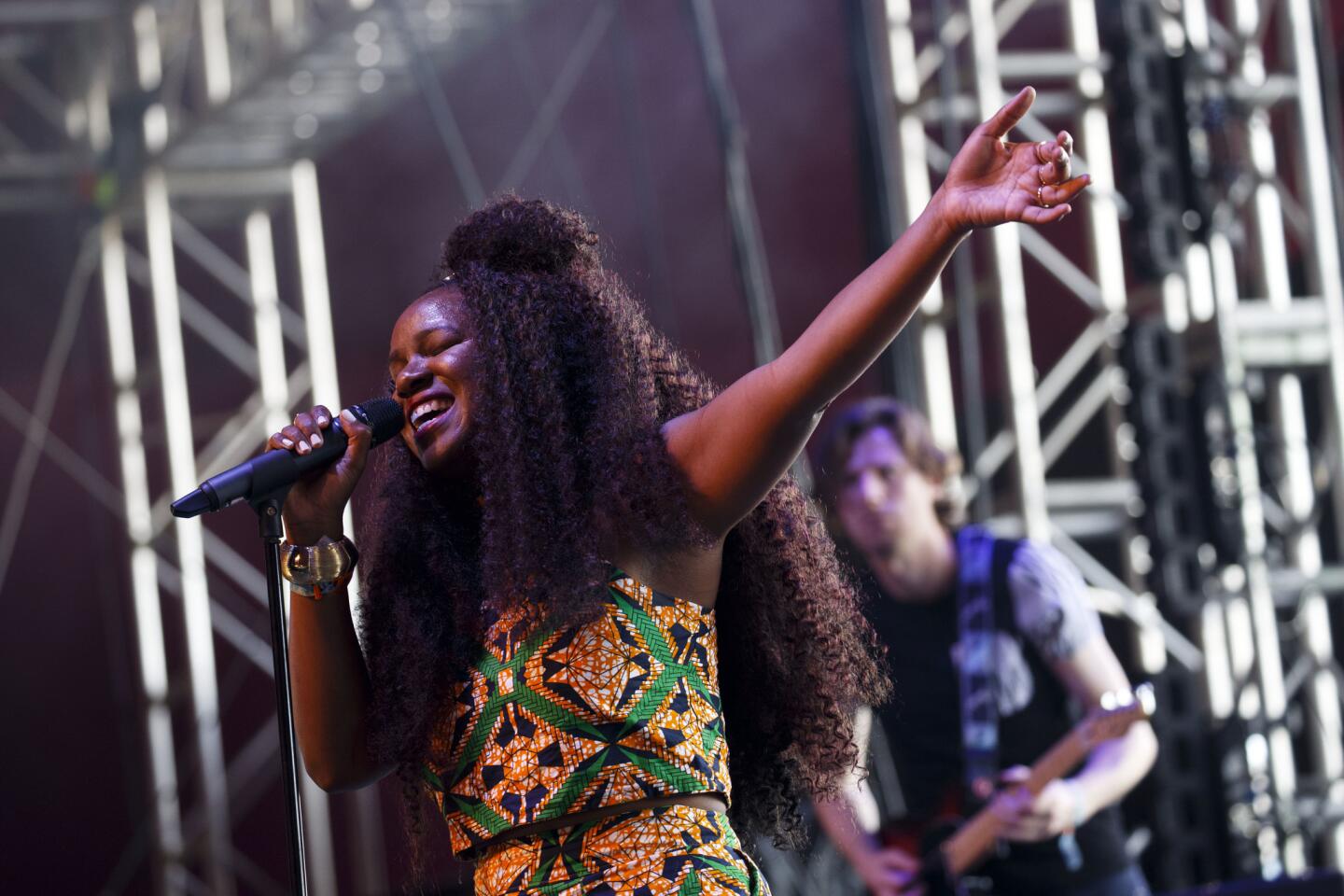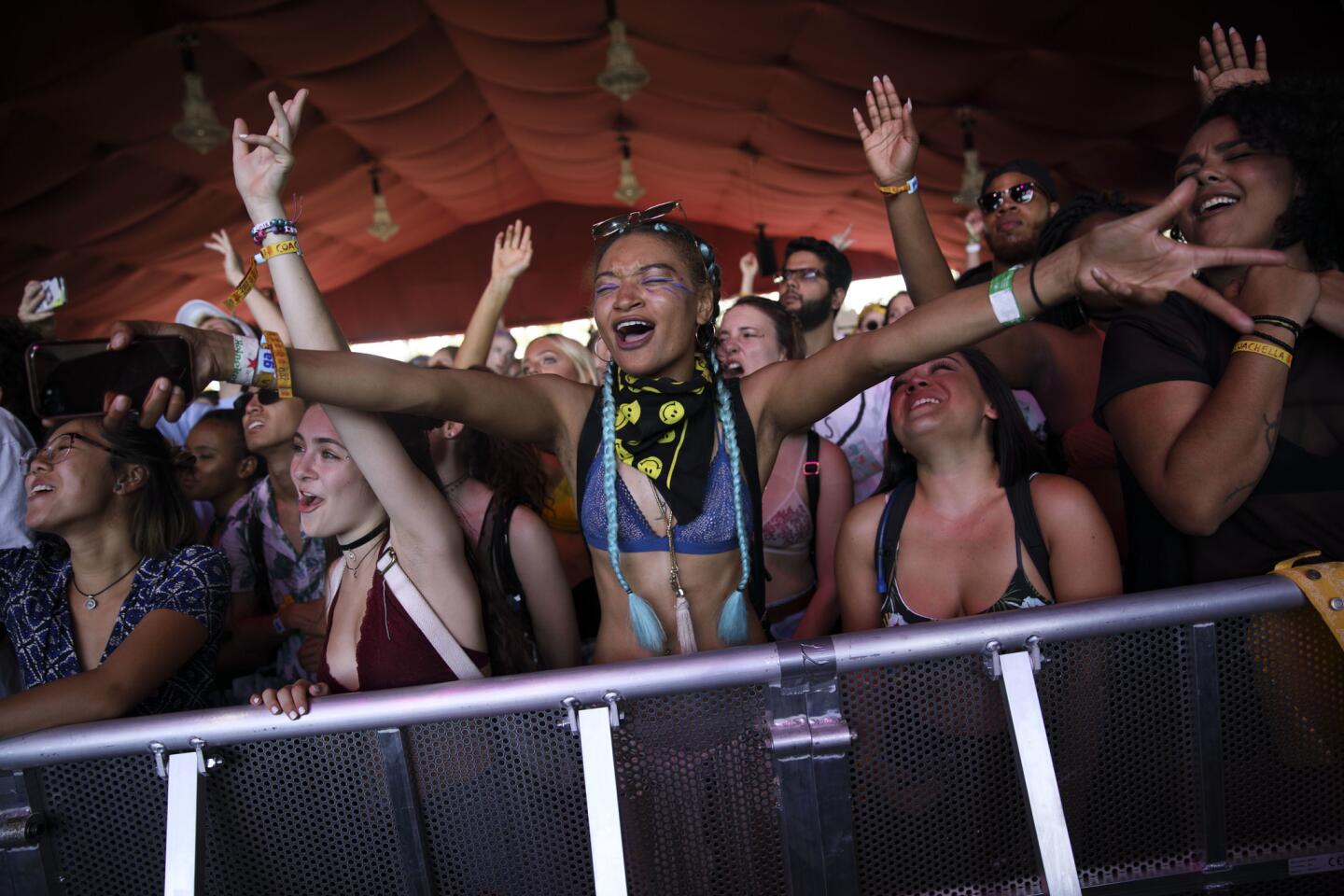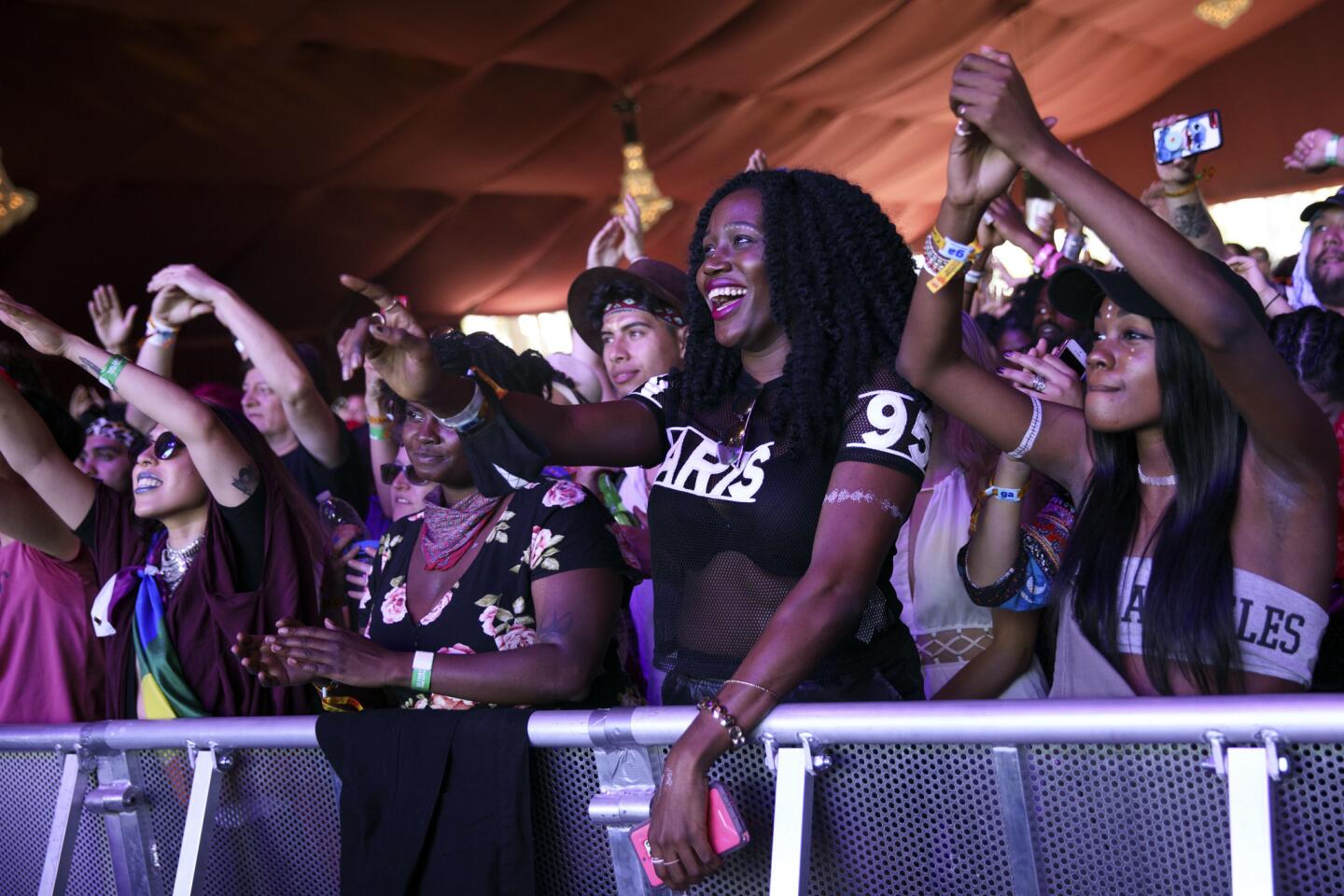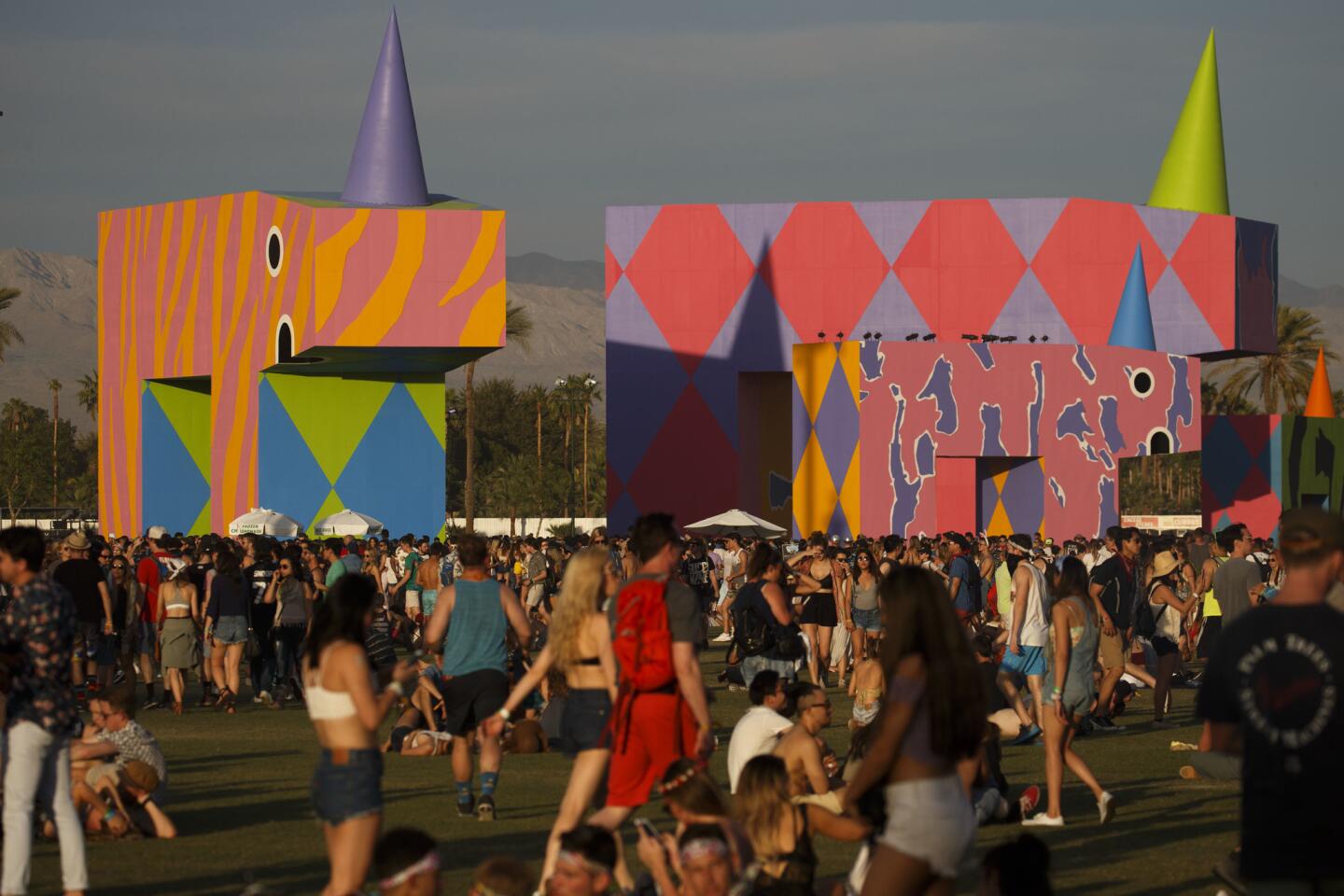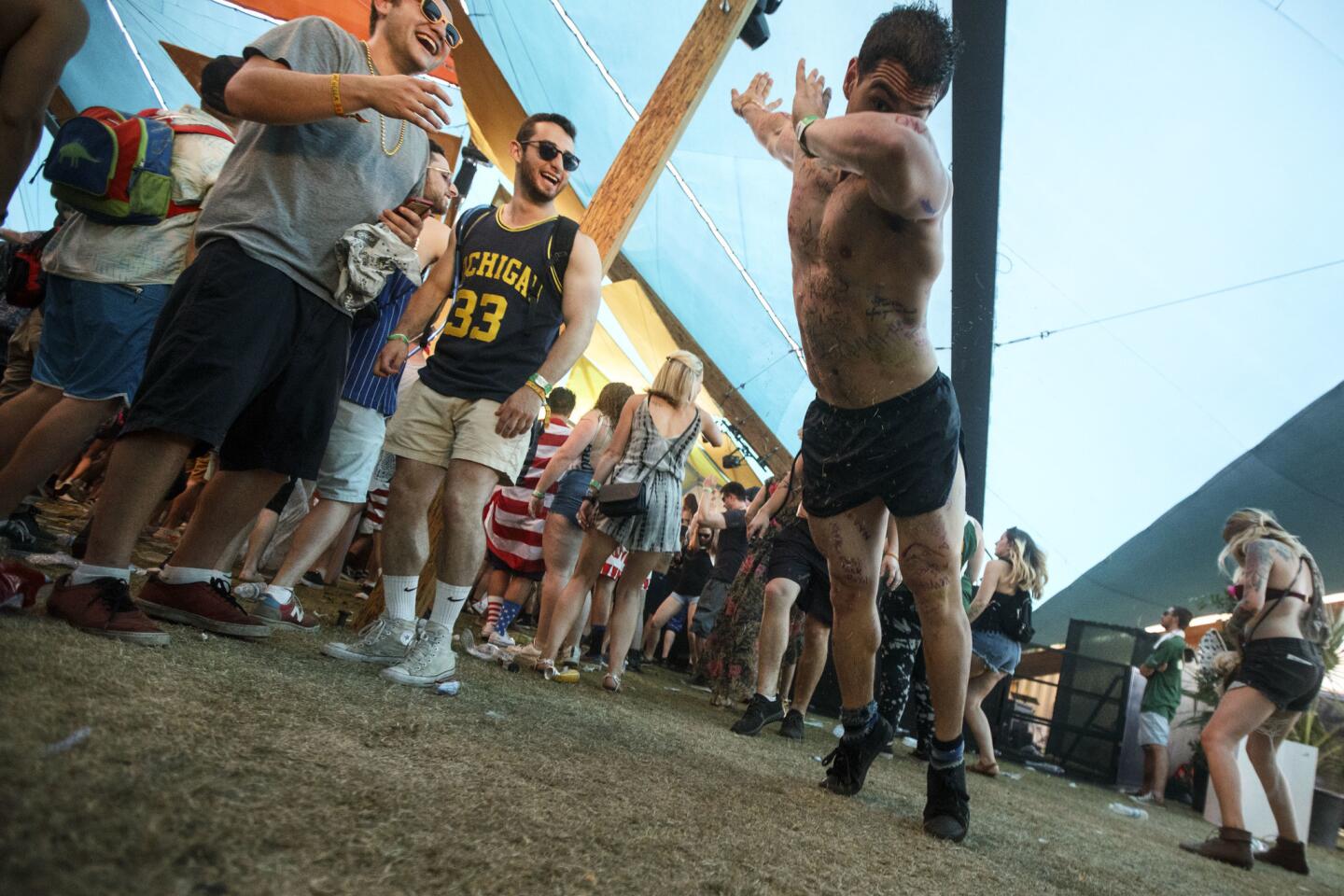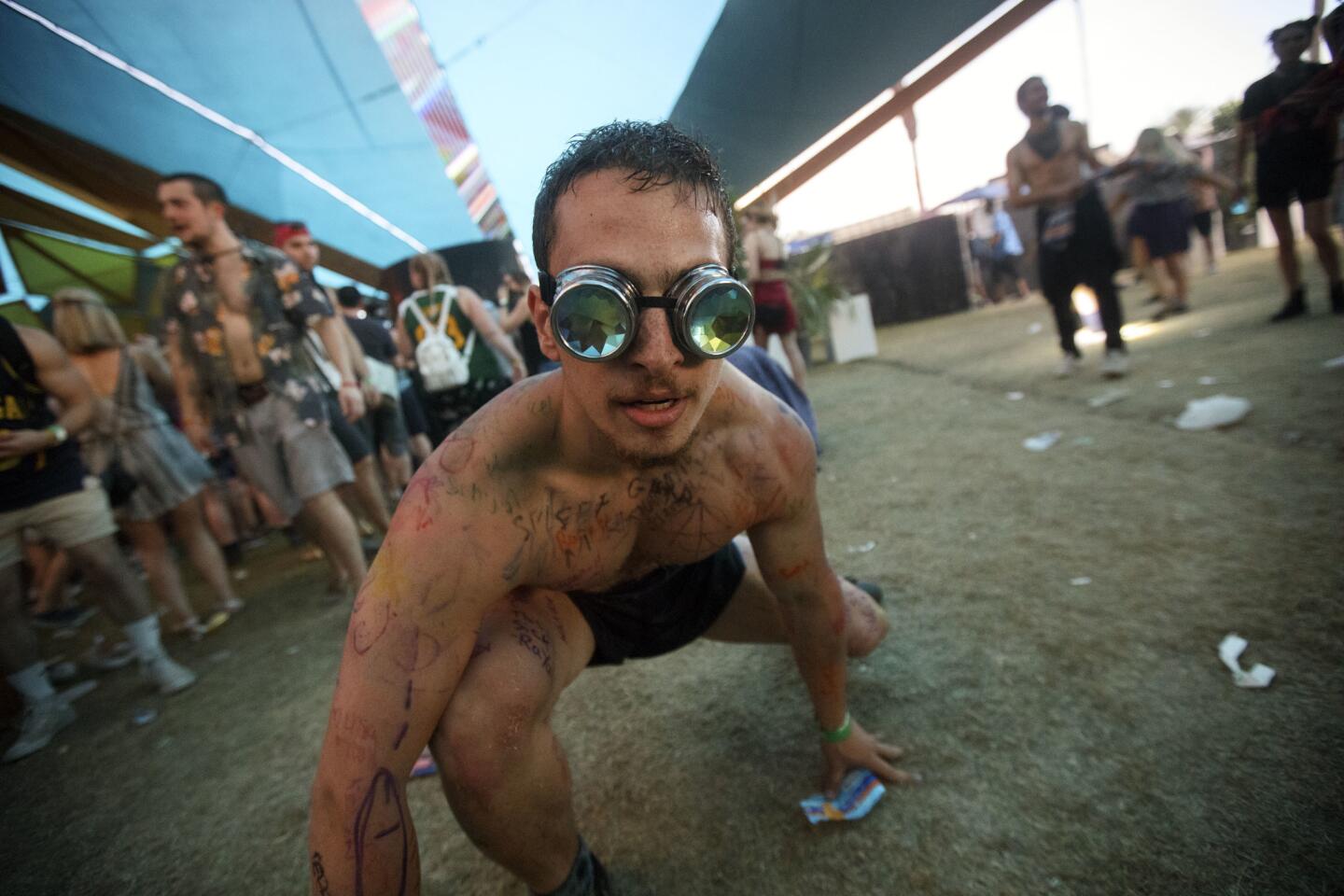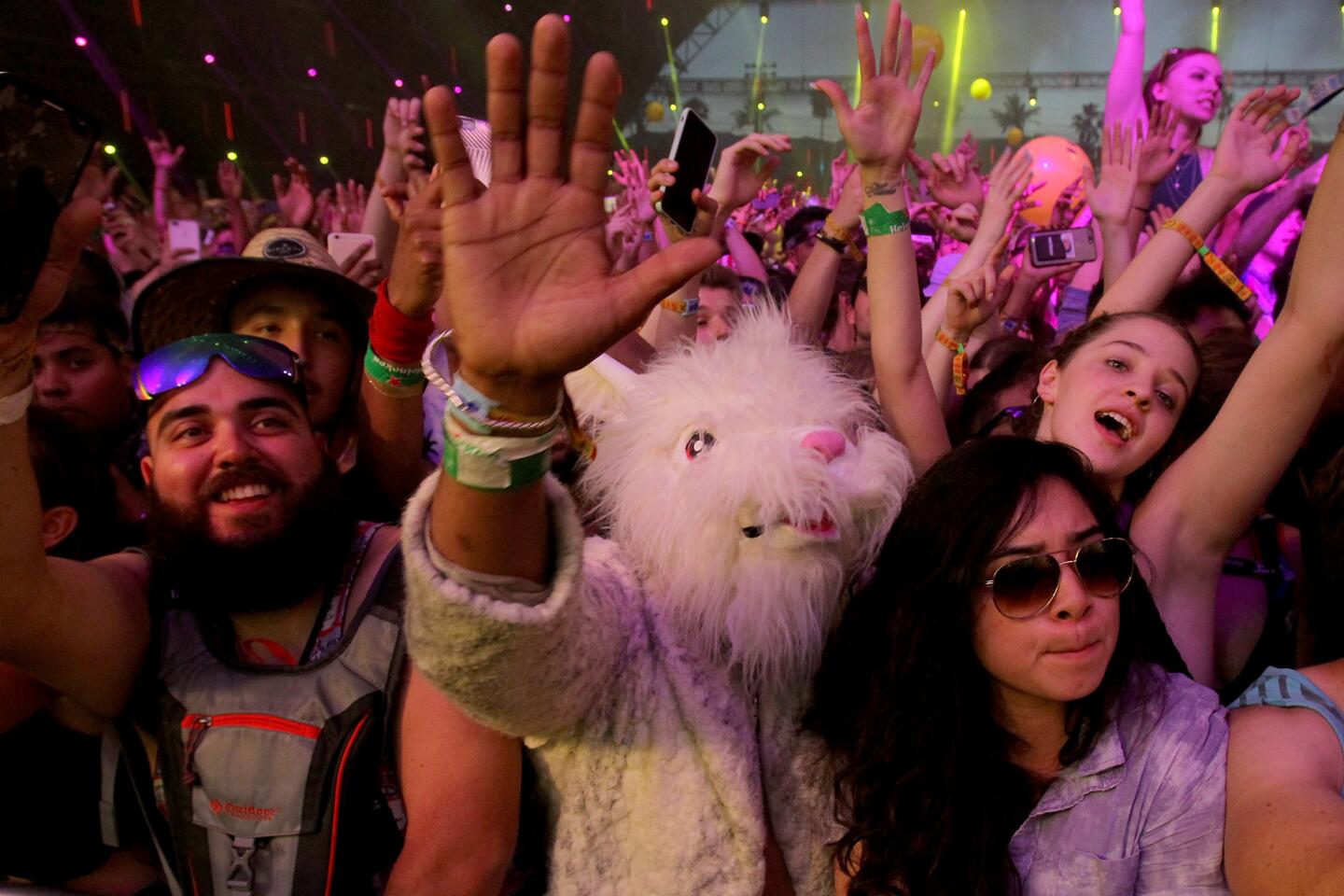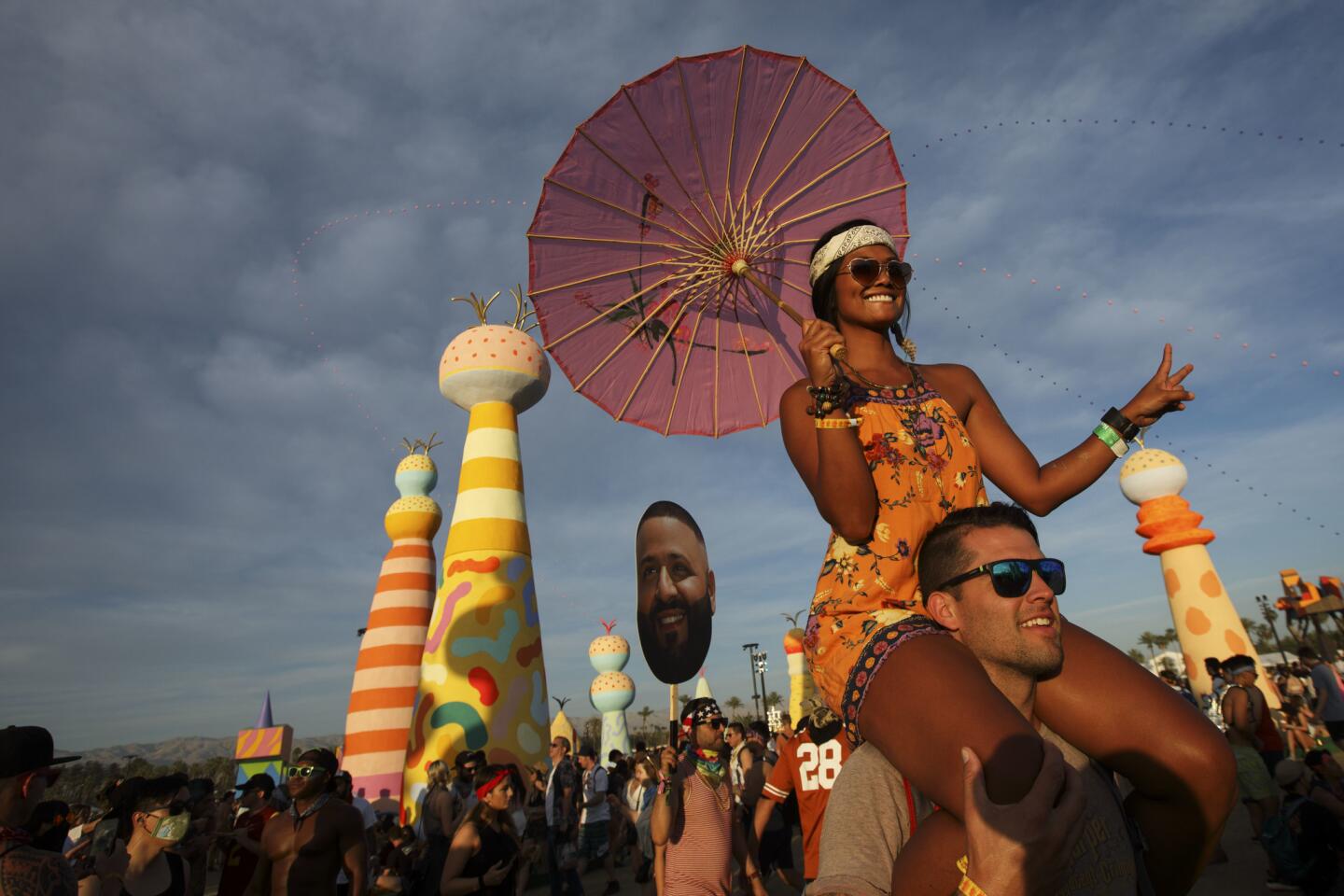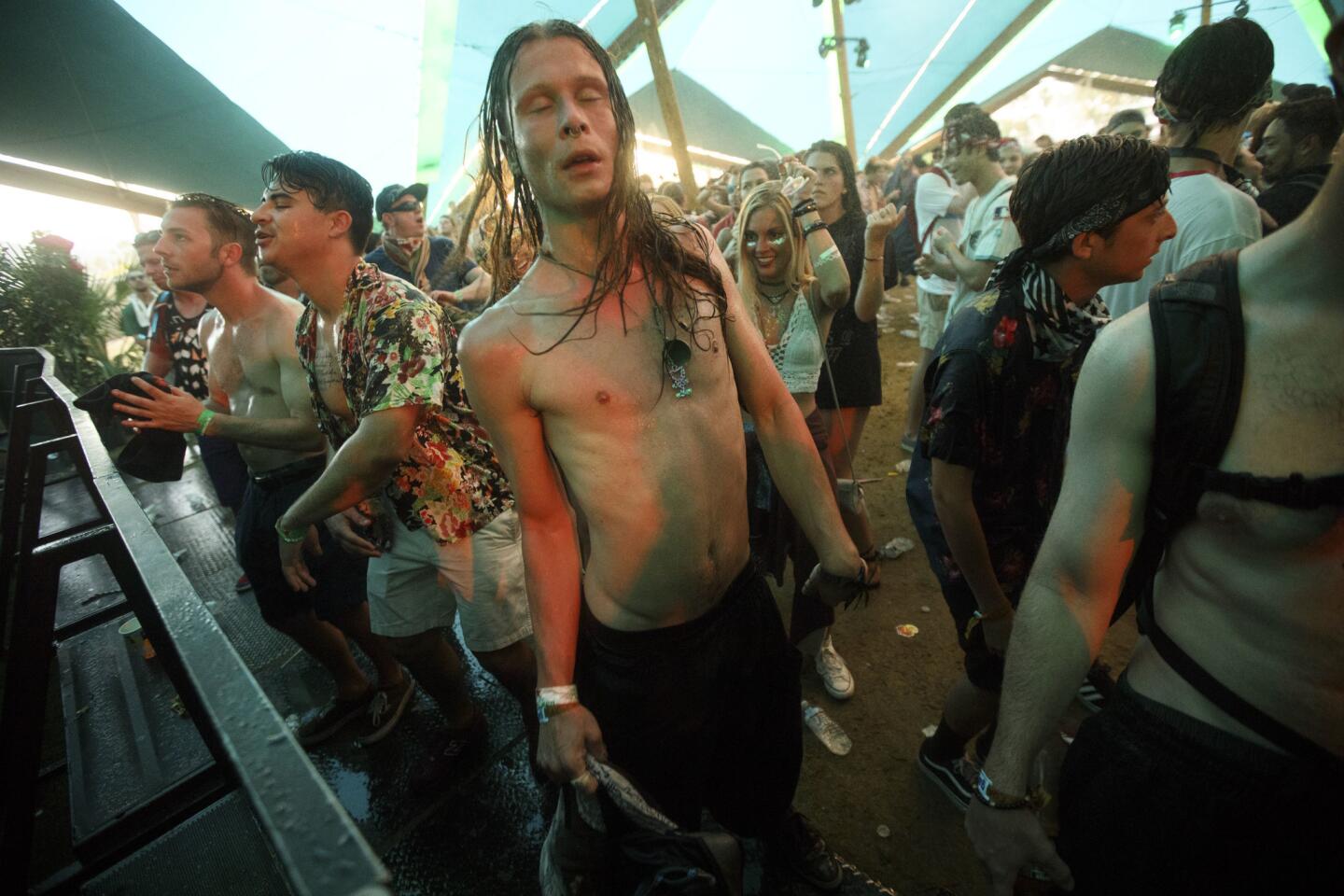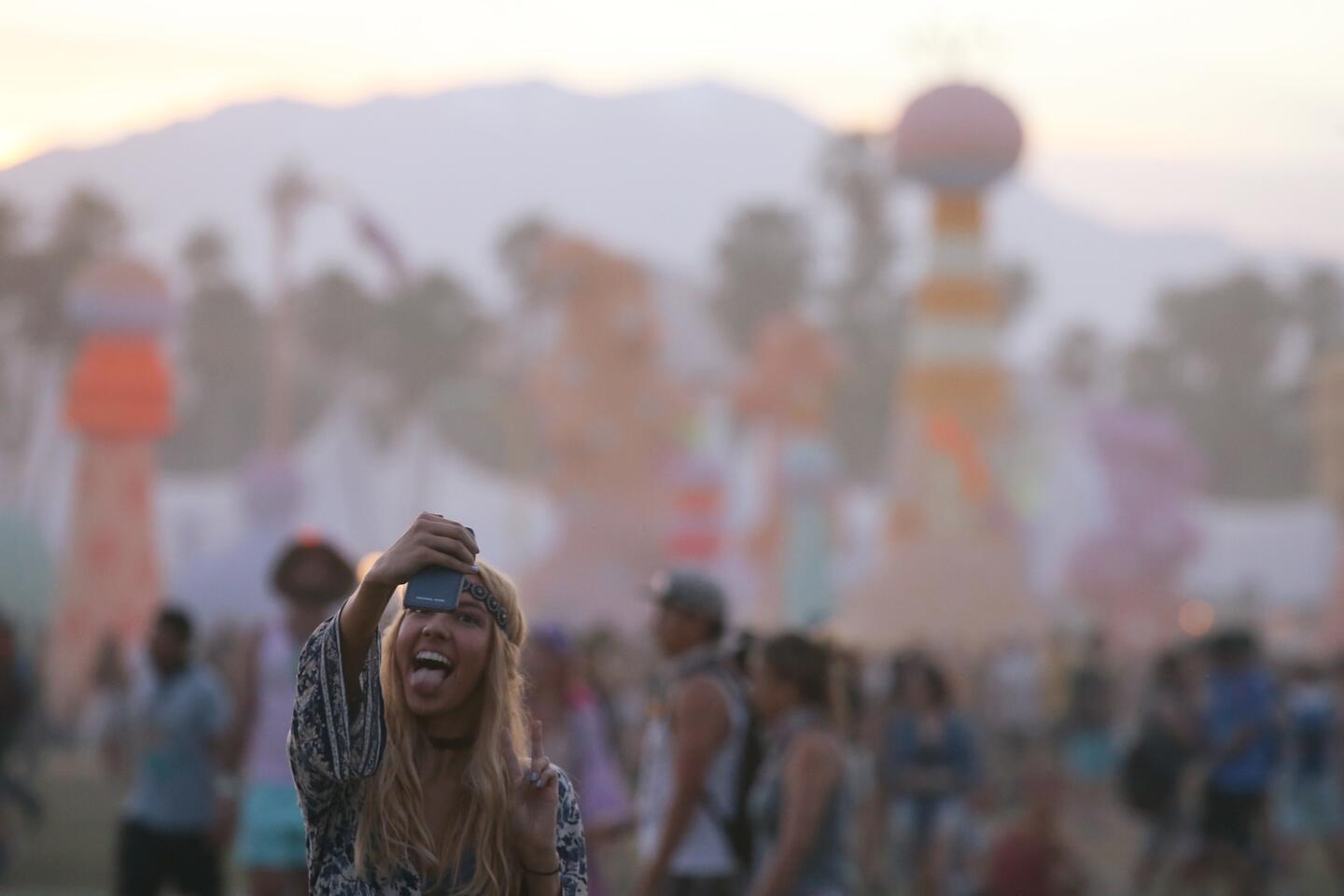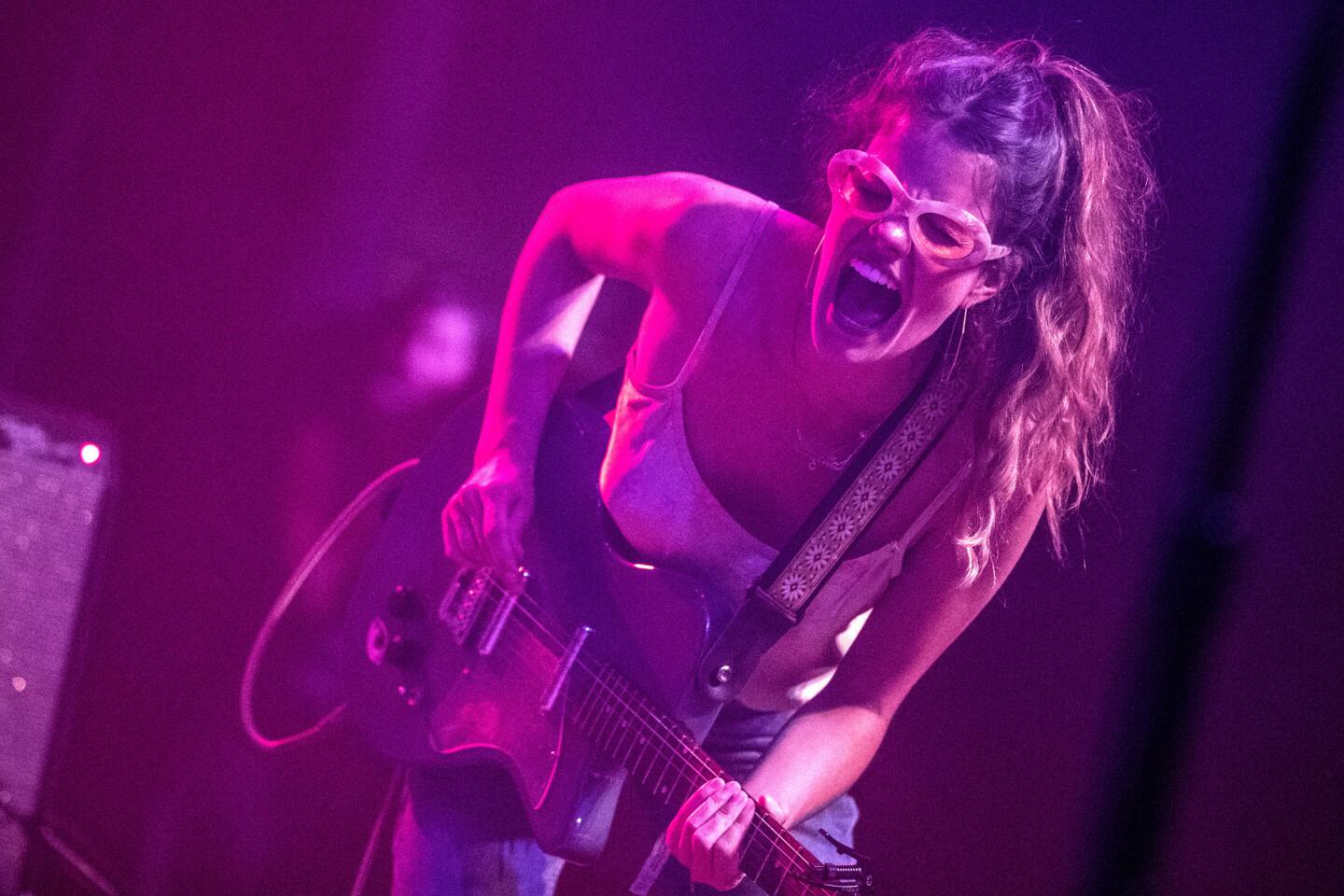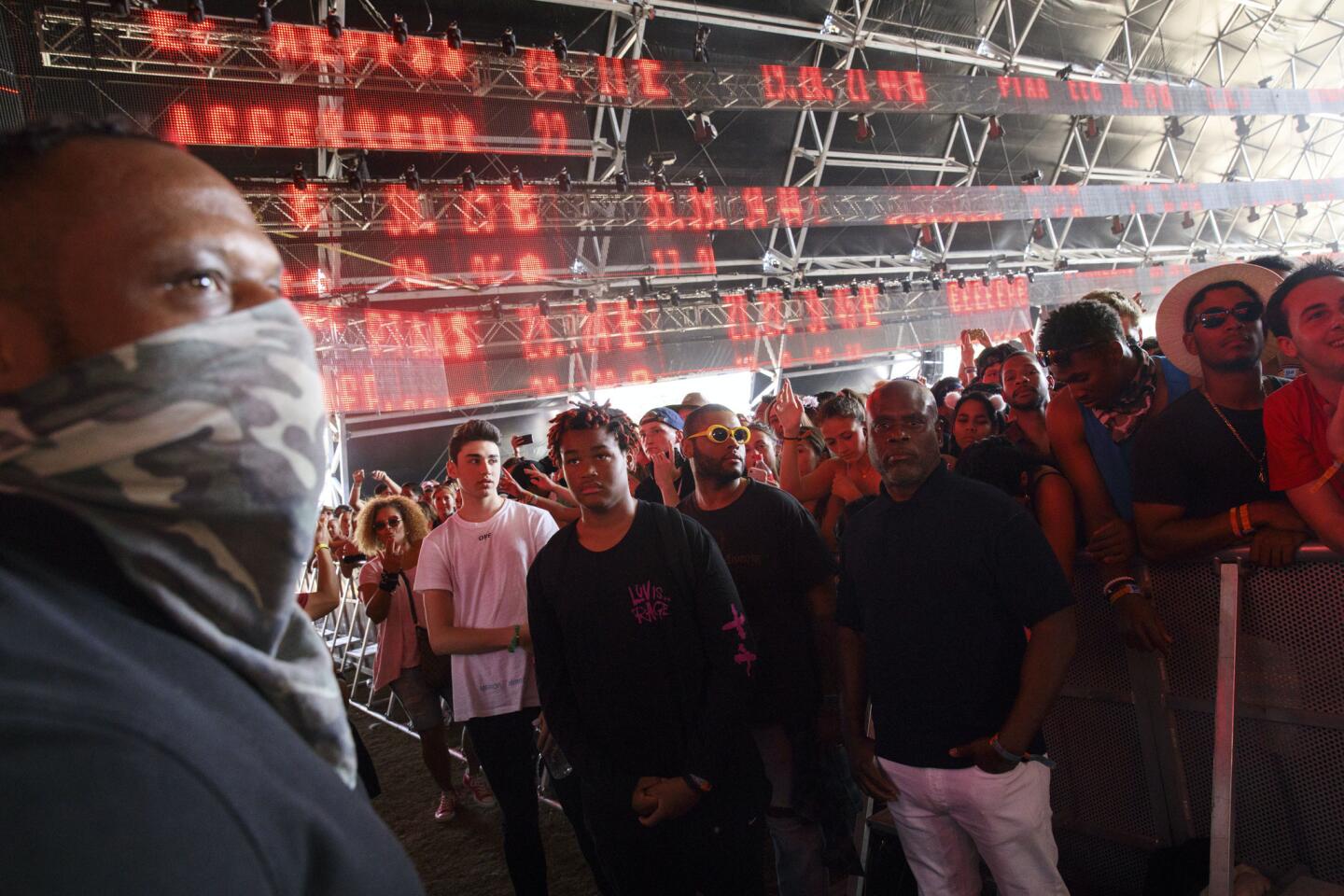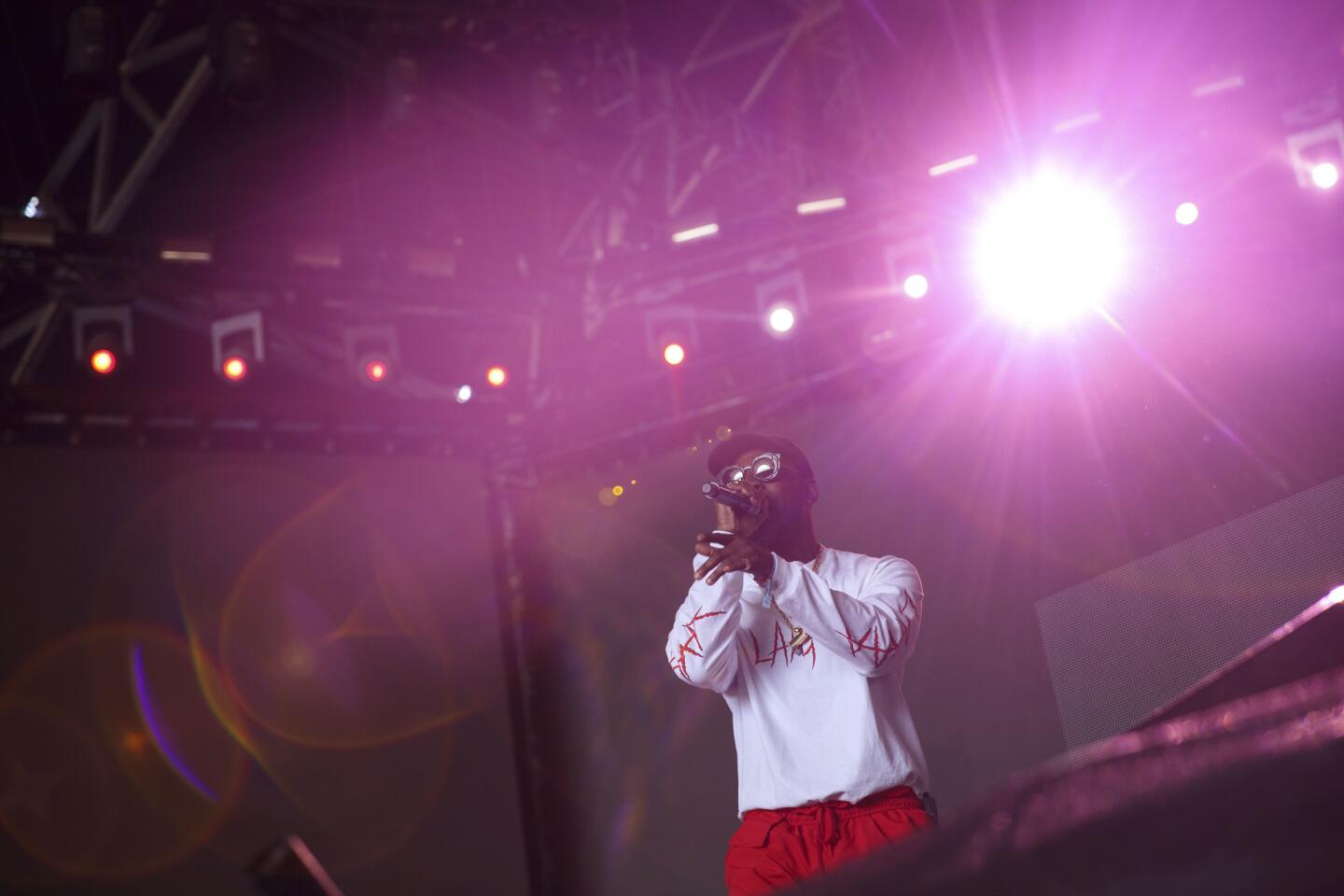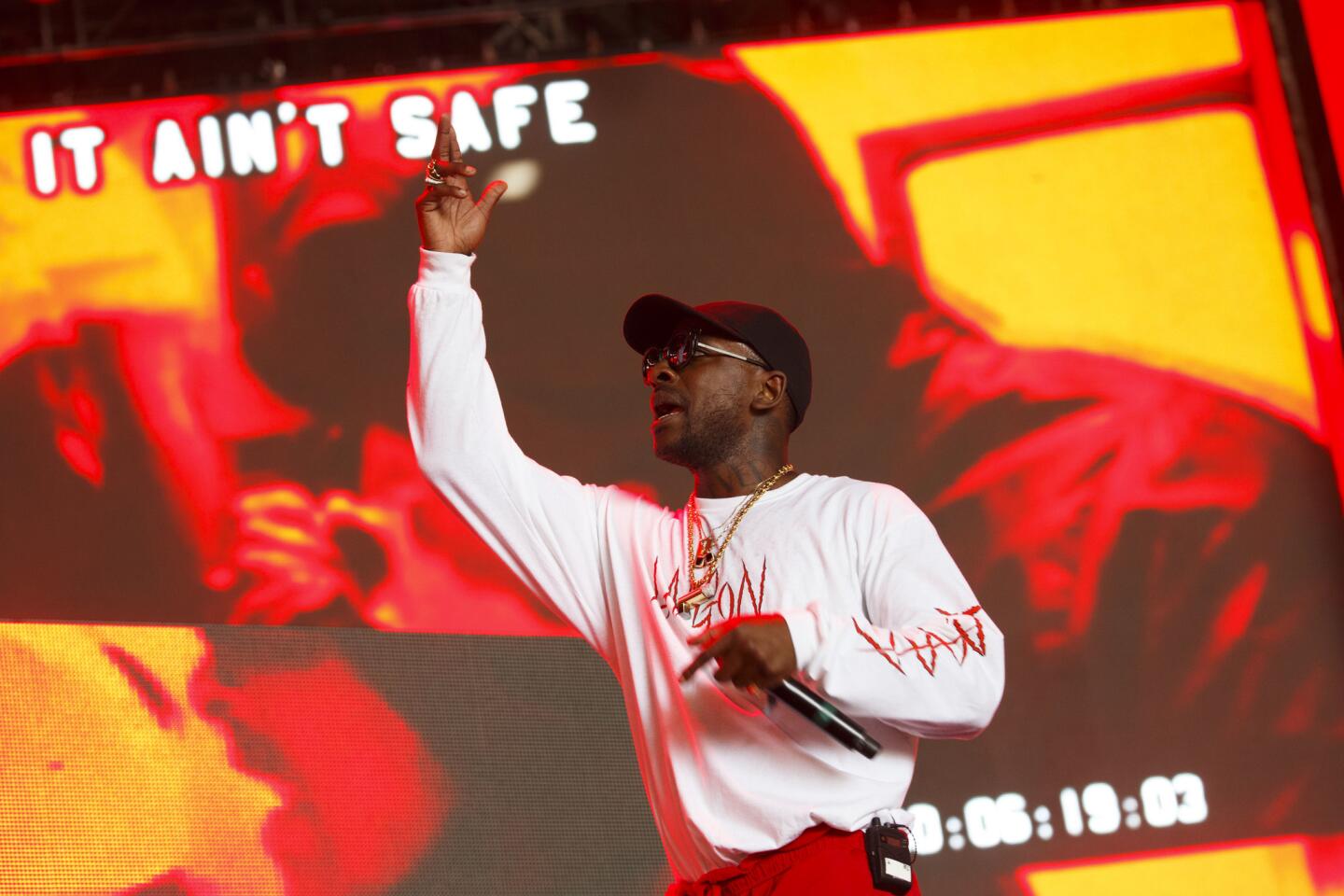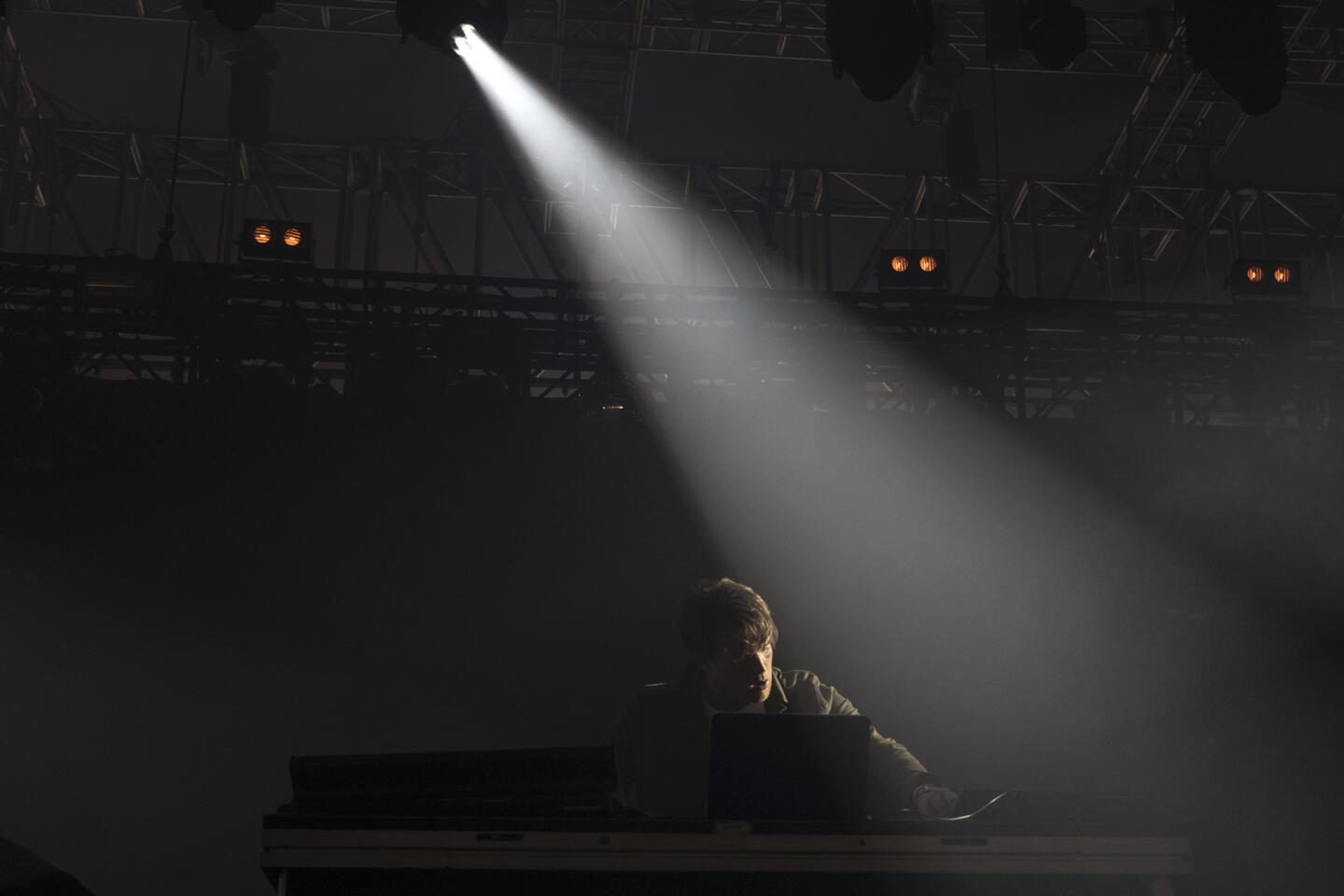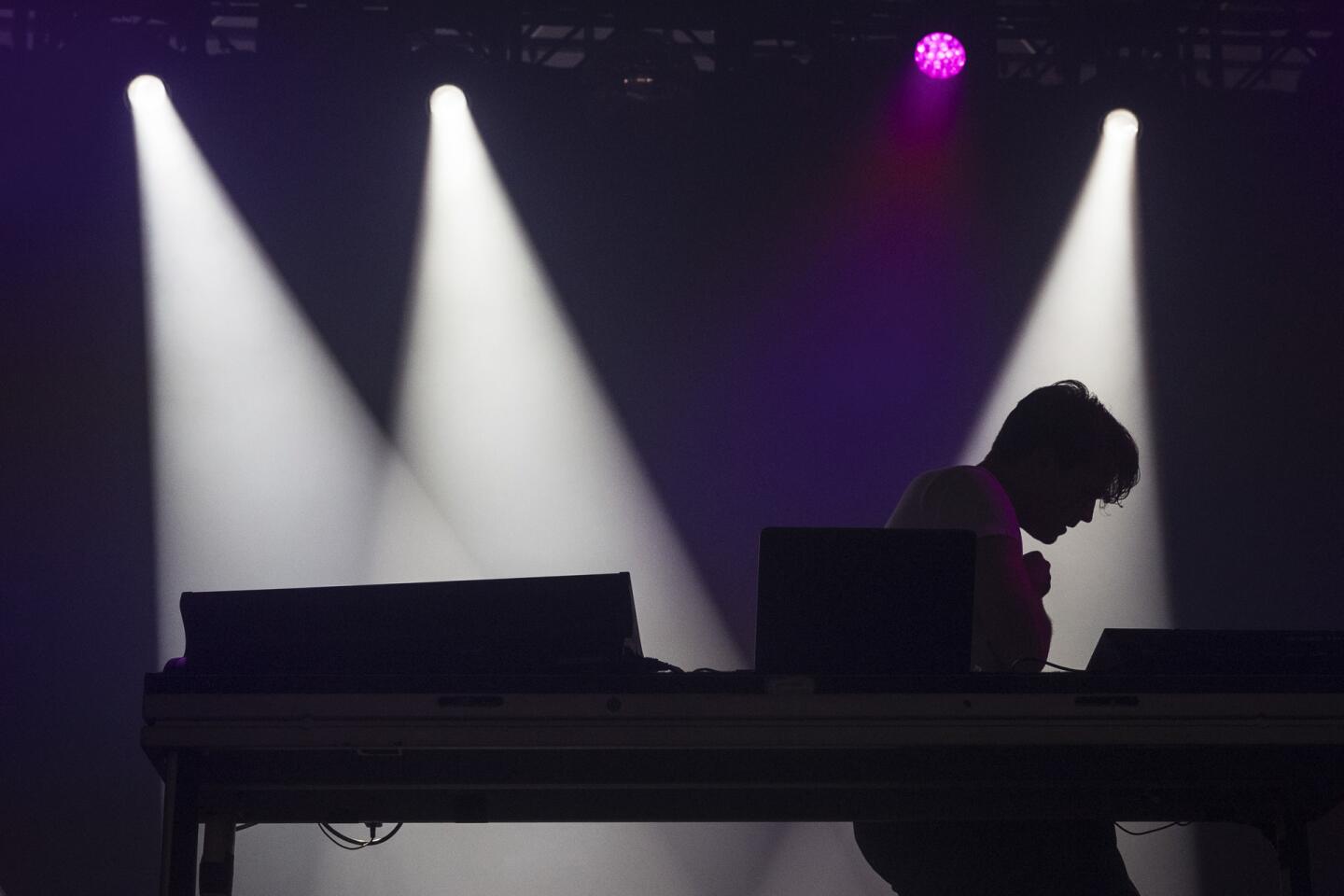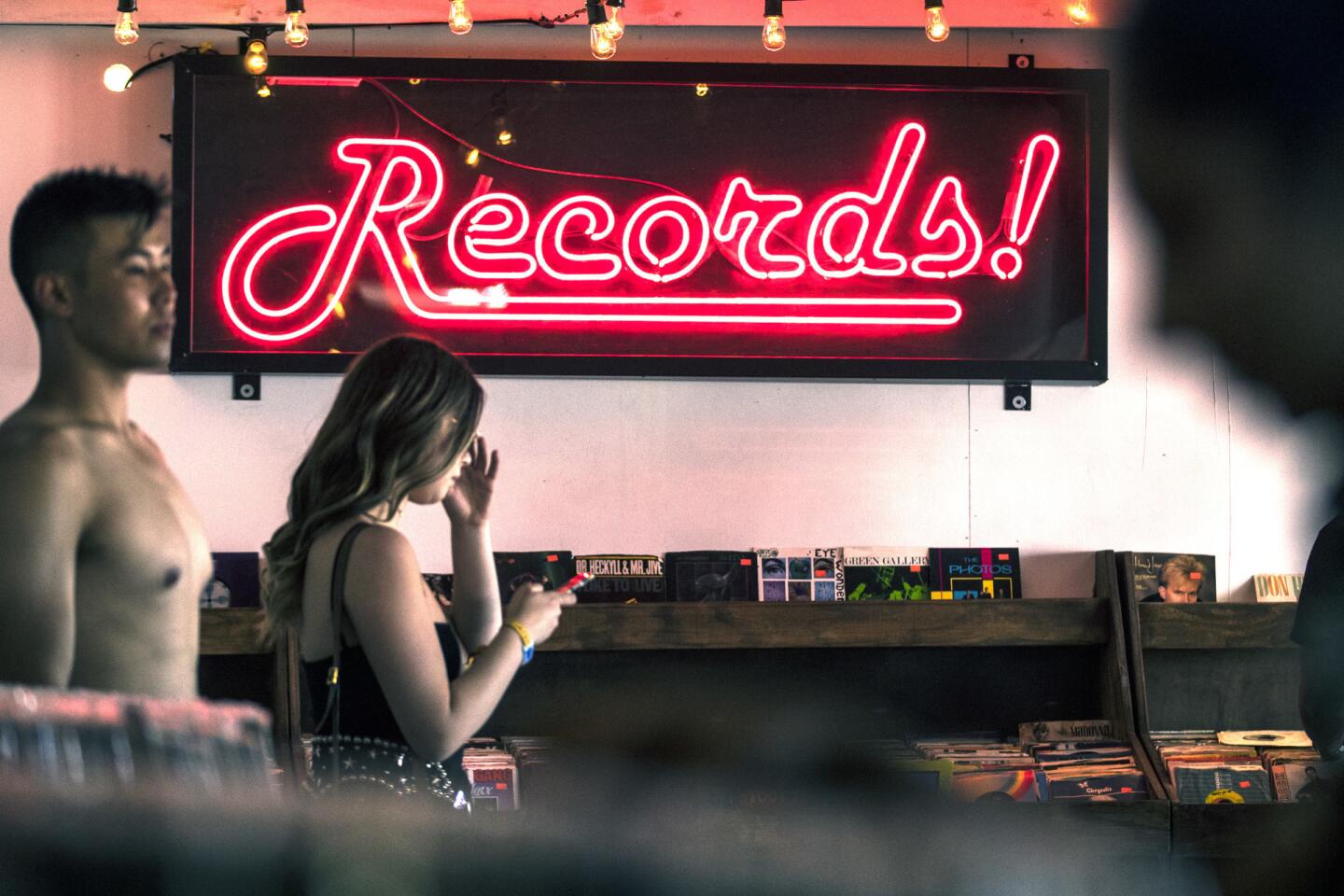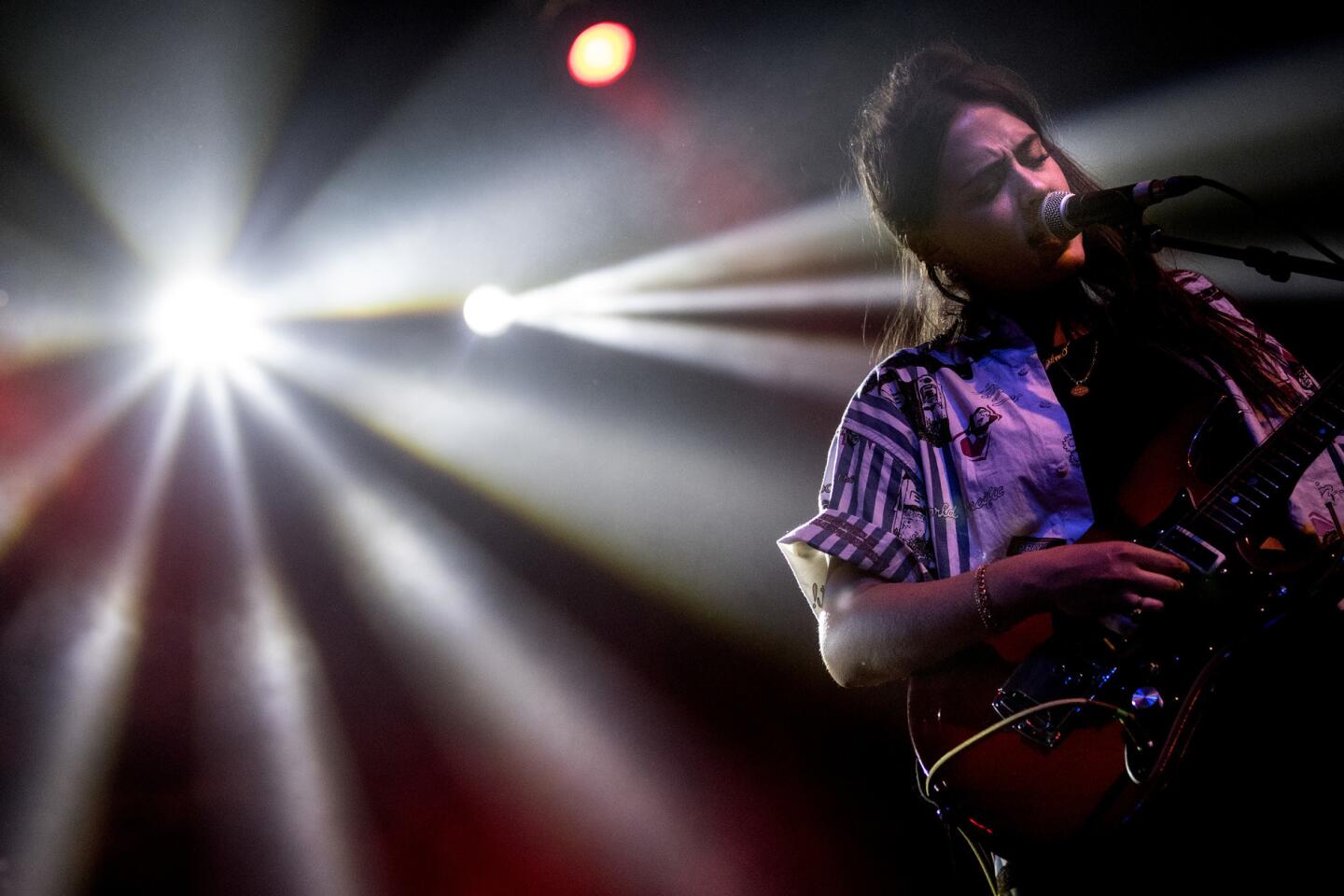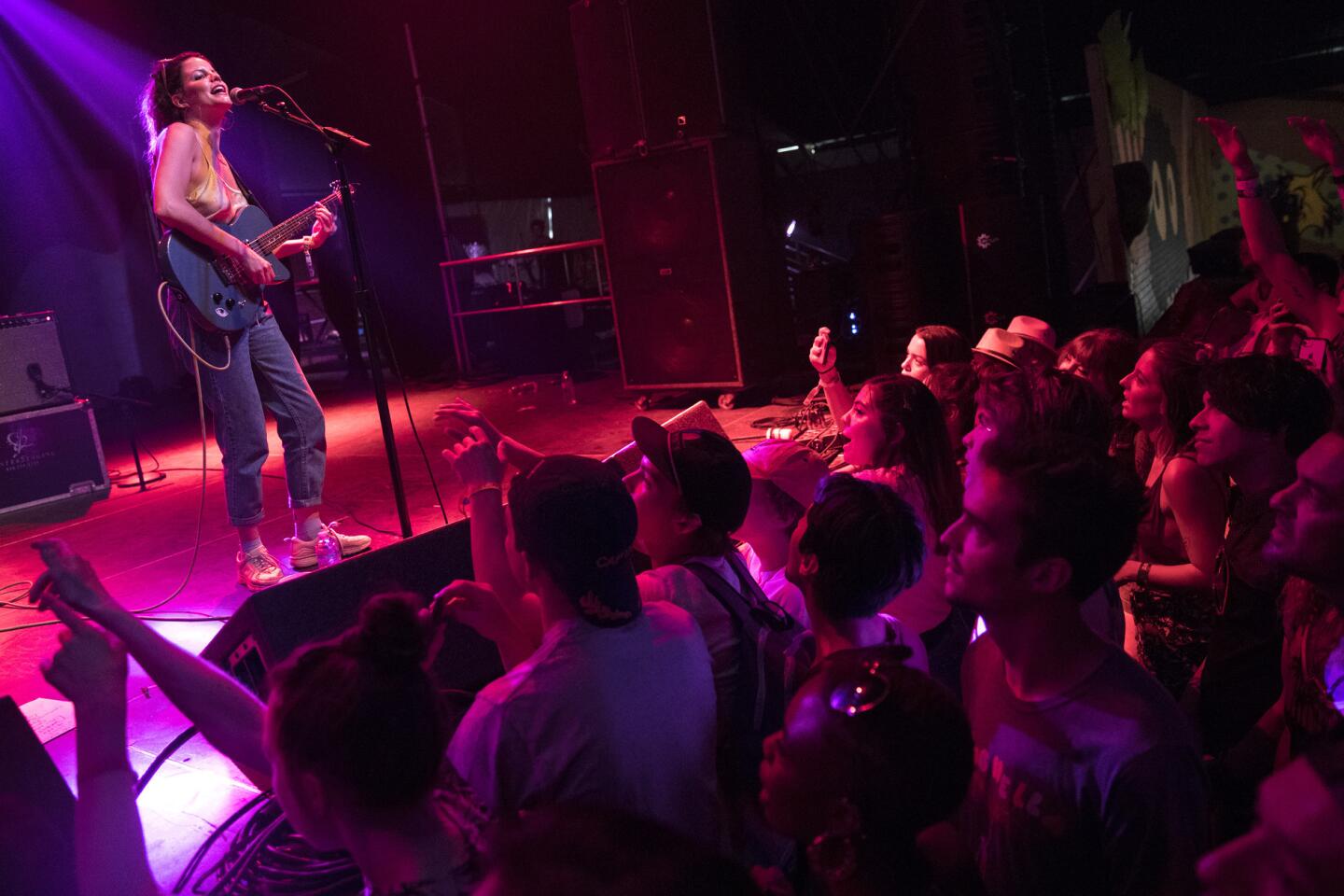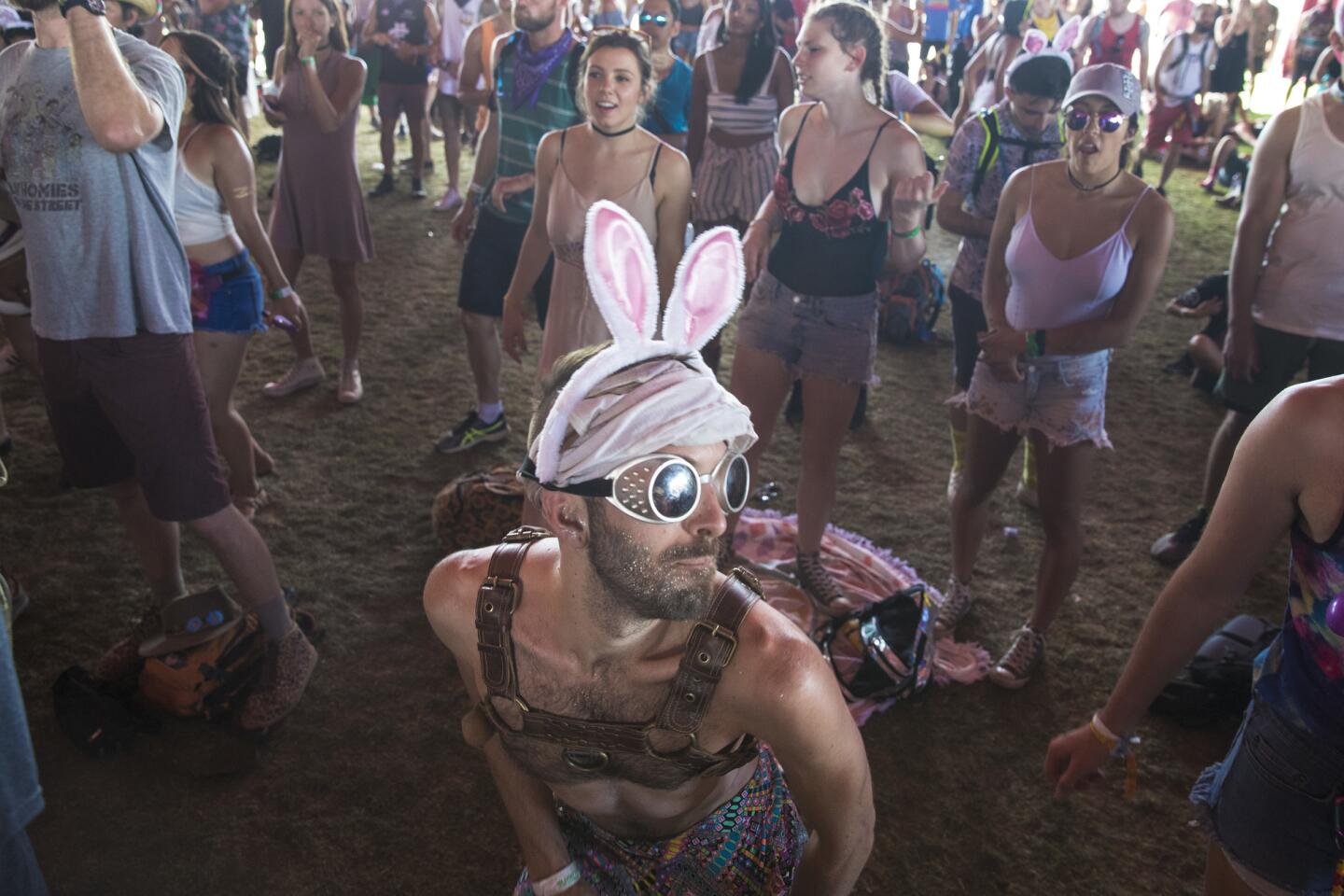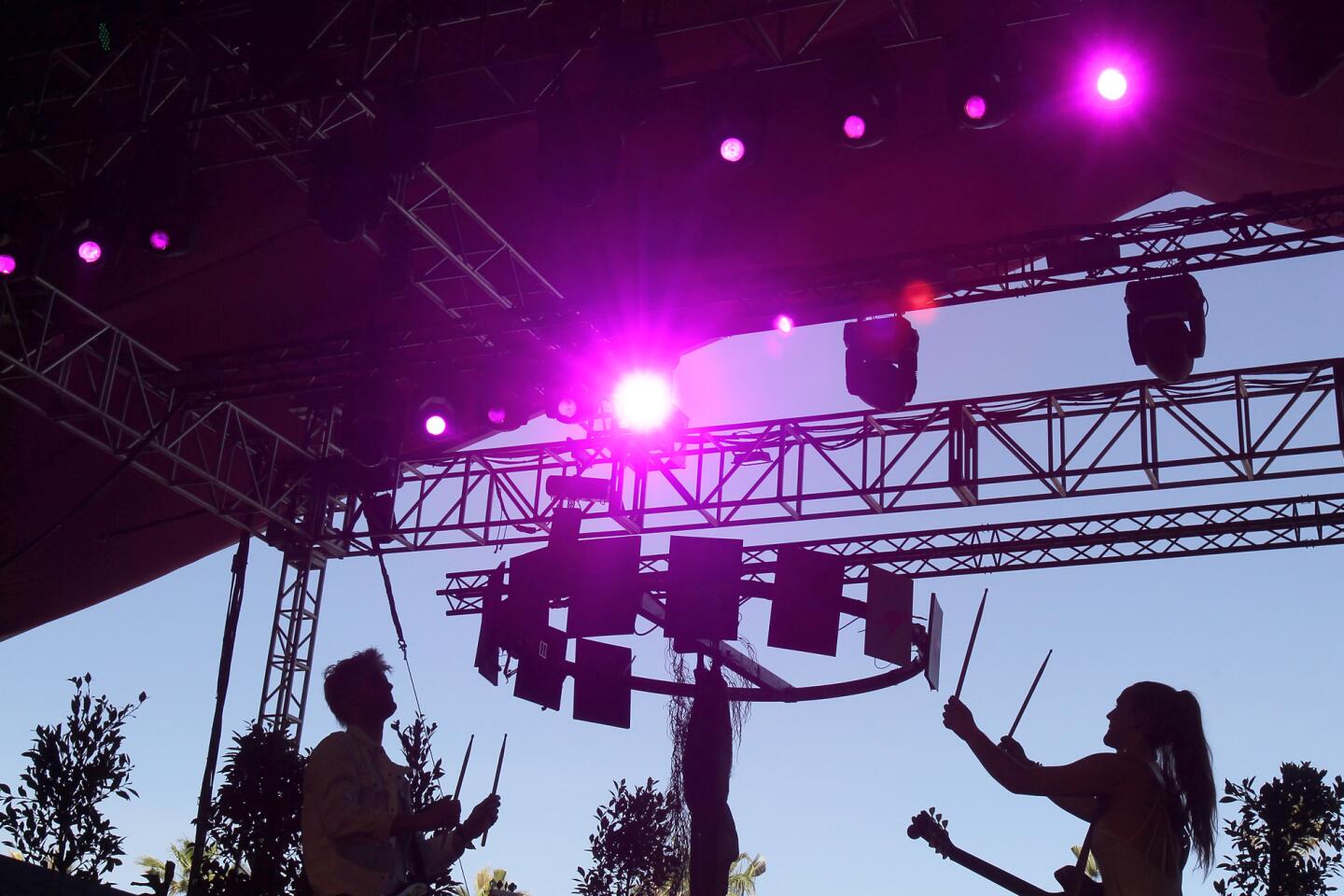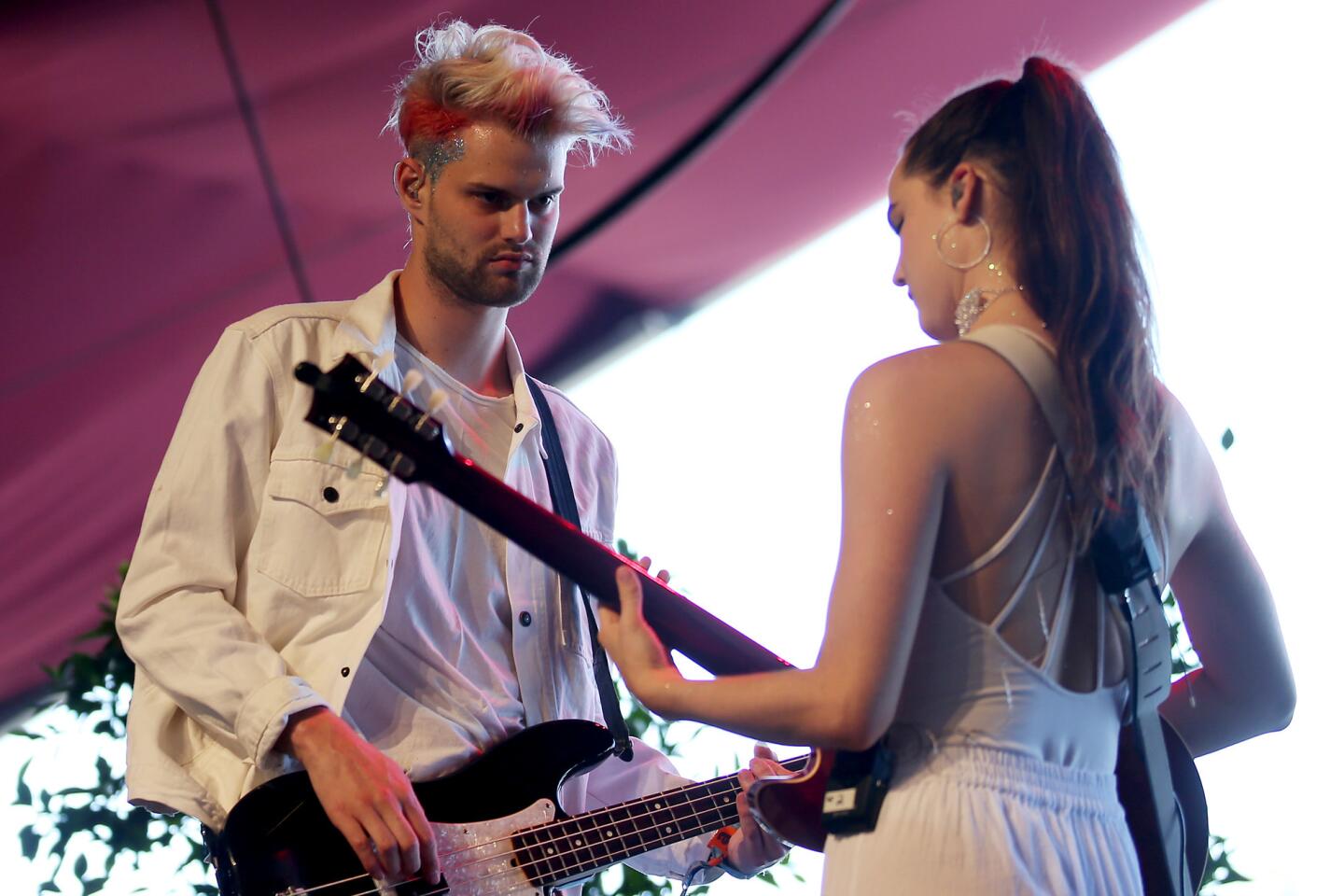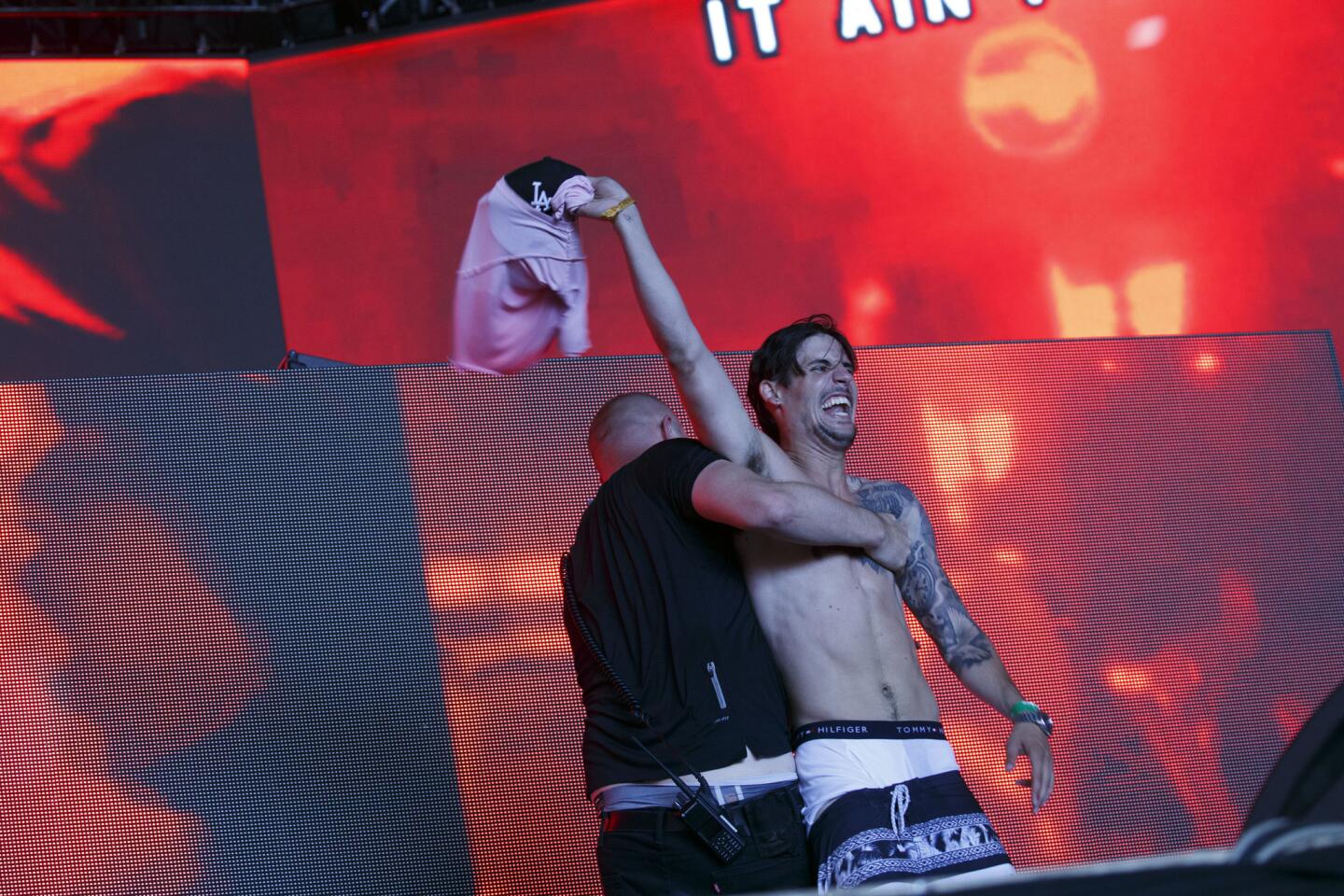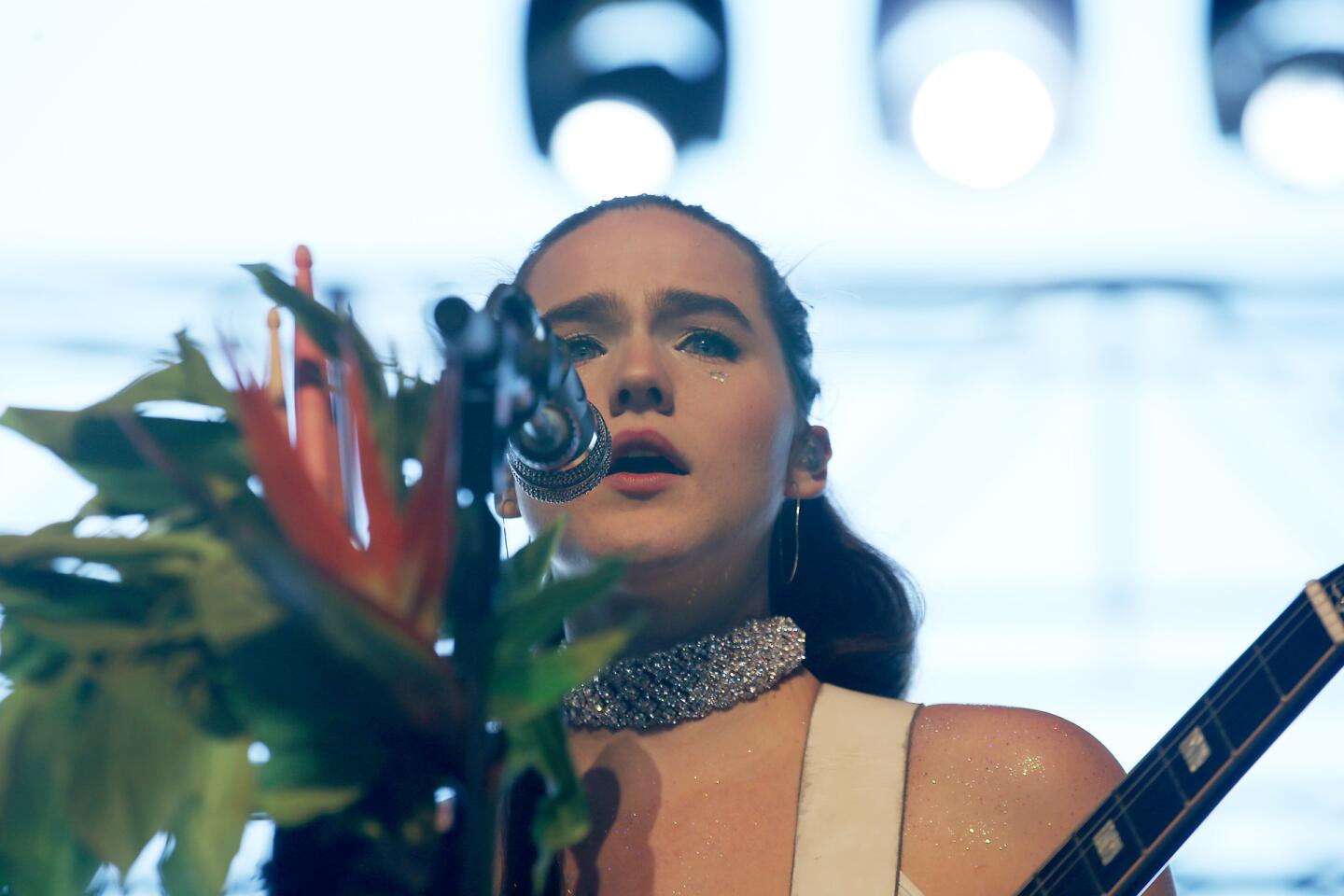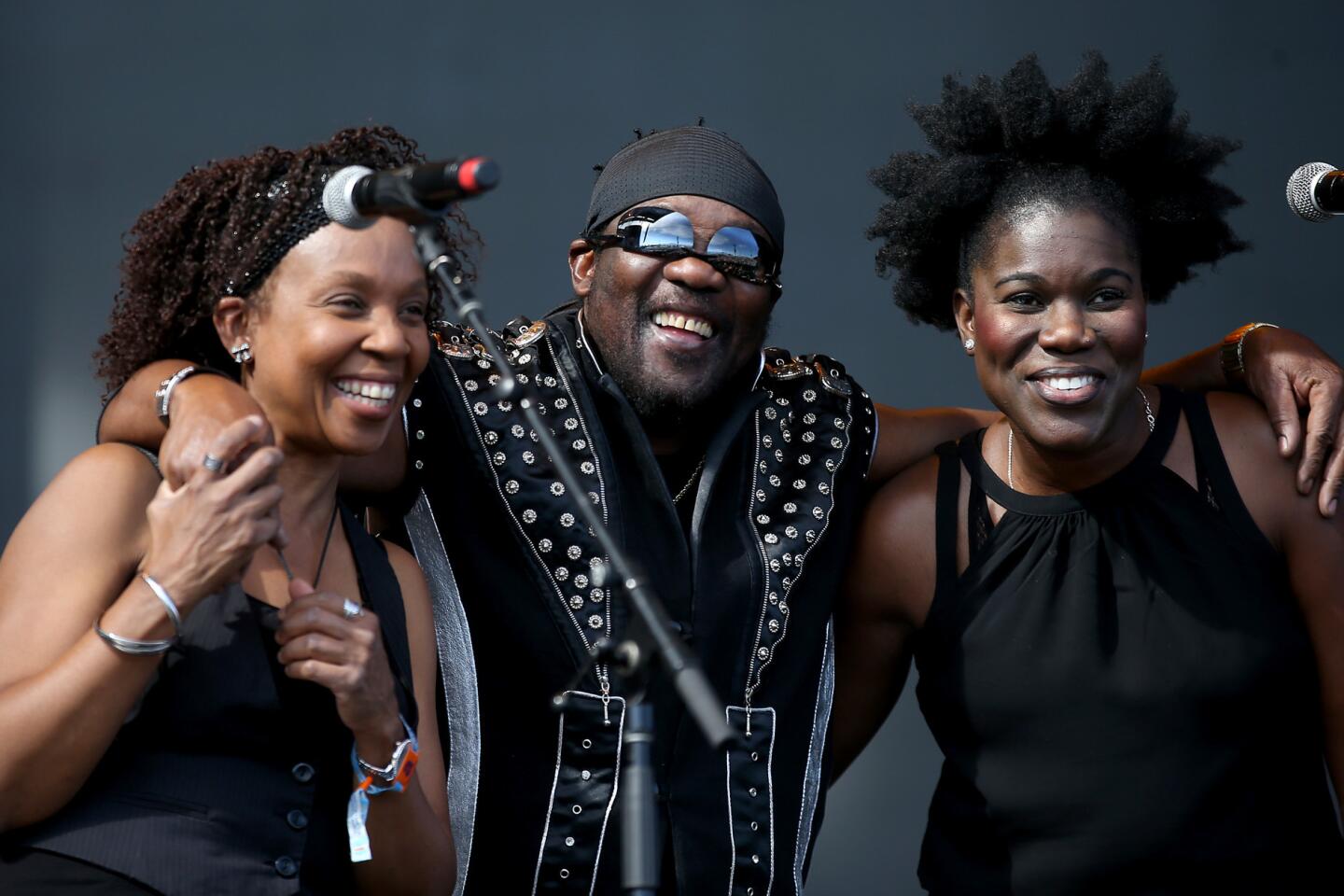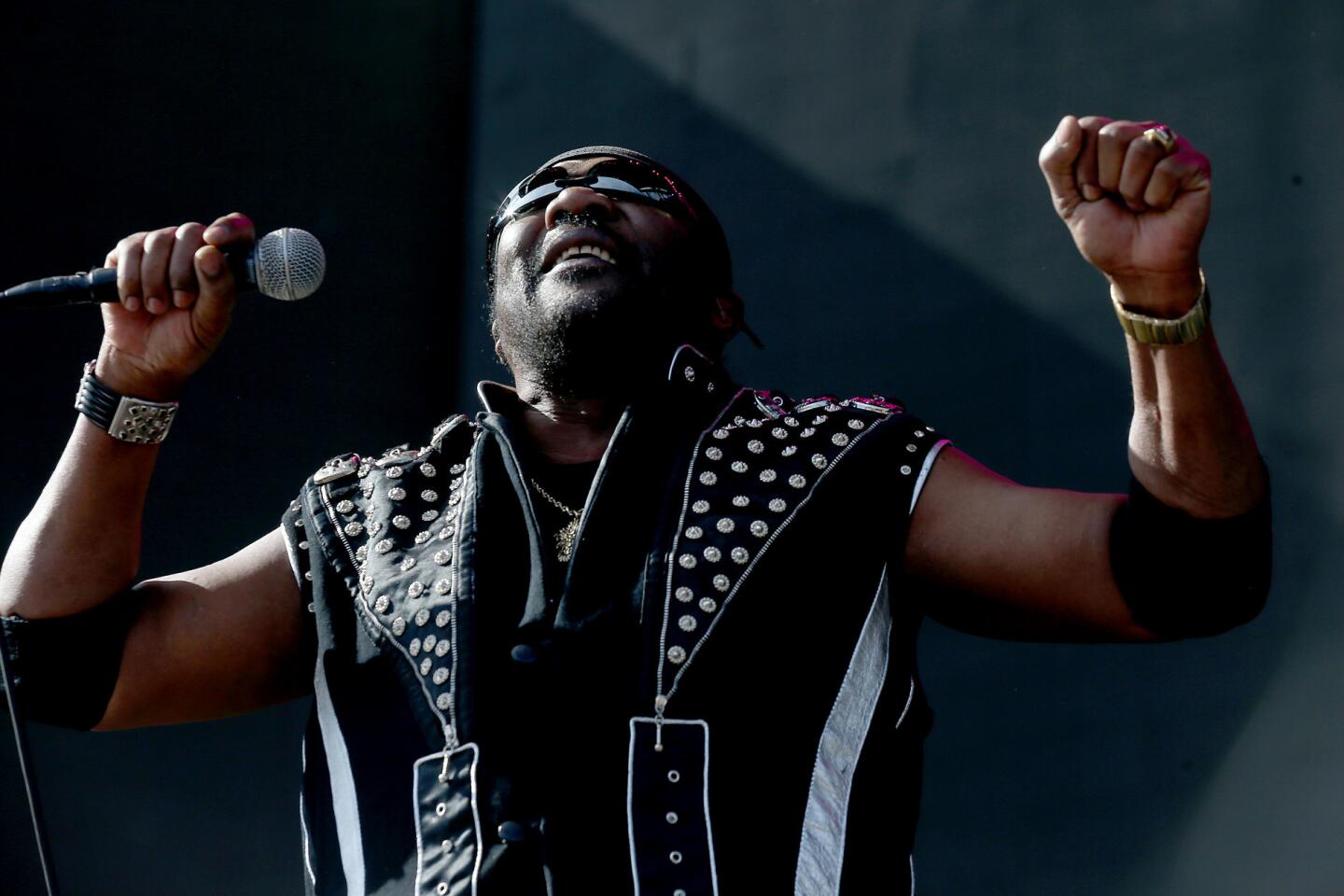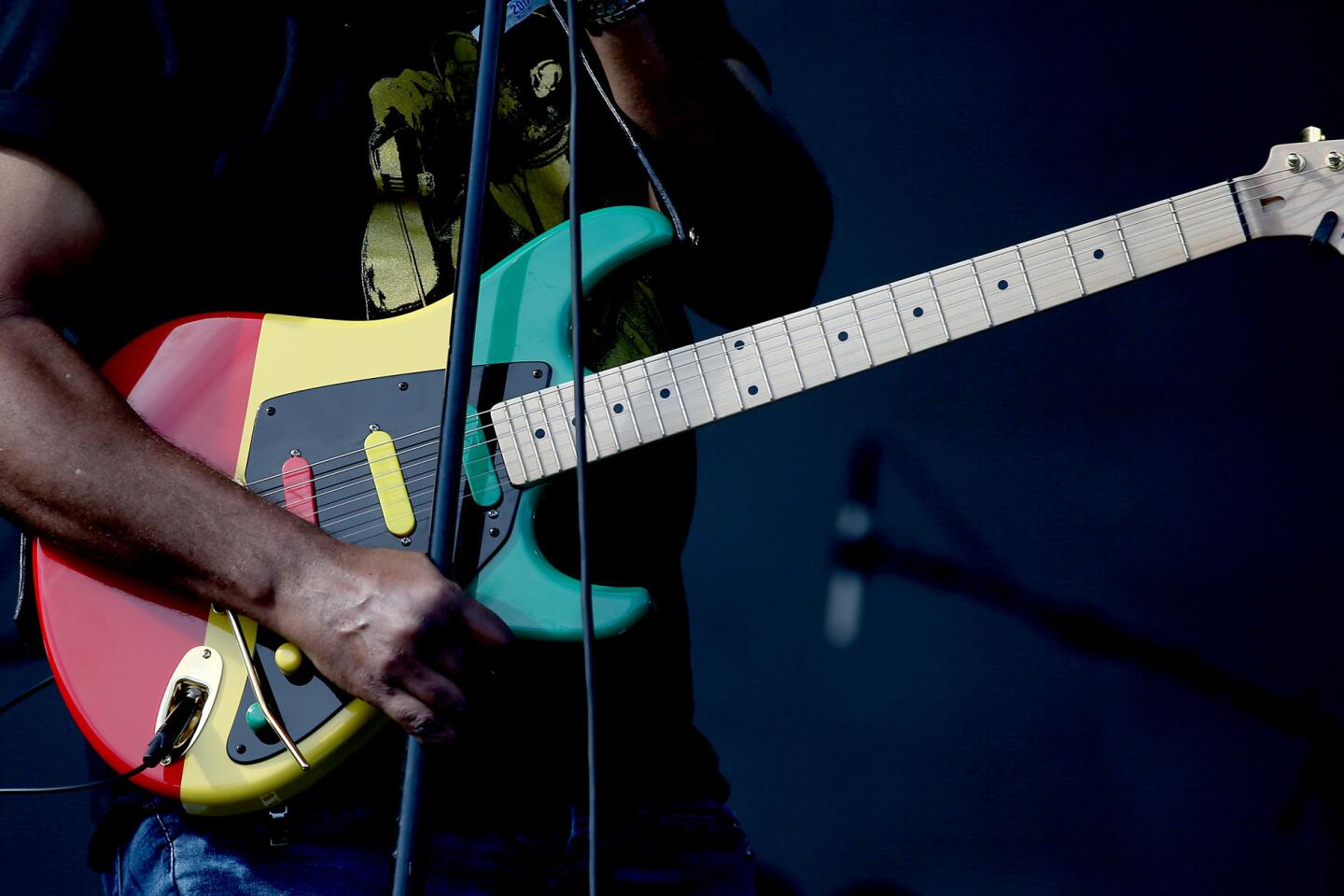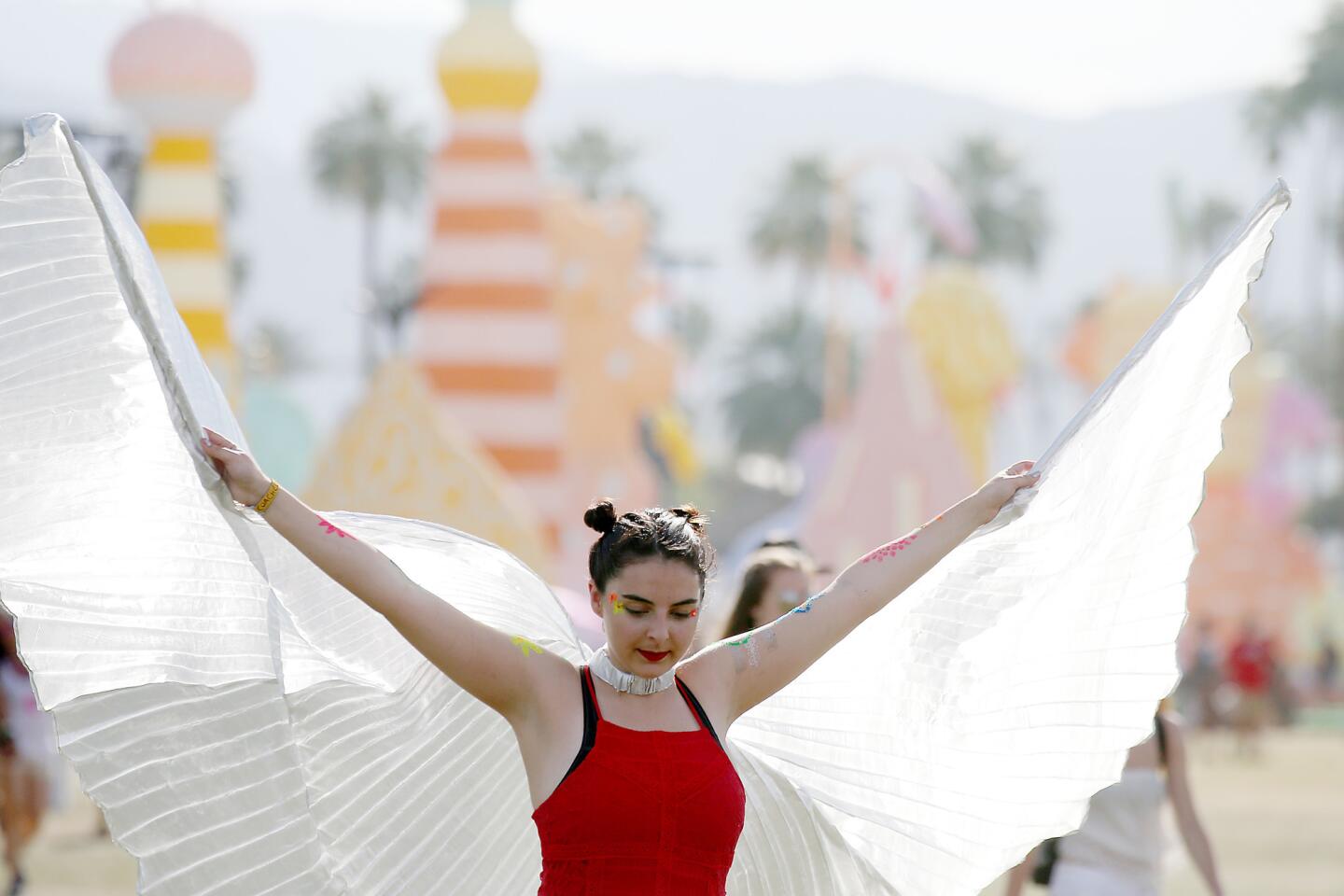A king shares his crown as Kendrick Lamar brings ‘Damn’ to Coachella
- Share via
The first time Kendrick Lamar appeared at the Coachella Valley Music and Arts Festival, in 2012, he was months away from releasing his major-label debut, “good kid, m.A.A.d city.”
Nobody was yet calling him the most important rapper alive, as he’s regularly described these days, but his impressive early work had lifted him to an enviable spot: He played an afternoon solo set on the prestigious festival’s main stage, then dropped in with two of his benefactors, Dr. Dre and Snoop Dogg, during their cameo-packed headlining gig.
Five years later, Lamar was the one bringing out guests — Future, Travis Scott and Schoolboy Q — when he closed Coachella’s first weekend on Sunday night. And this time the young Compton native wasn’t leading up to an album but was celebrating the release of one in “Damn,” which after weeks of feverish anticipation came out Friday and instantly dominated sales and streaming charts on iTunes and Spotify.
But if Lamar’s star turn in Indio cemented his status as hip-hop royalty, his performance also demonstrated how uniquely he wears that crown. More than a symbol of accumulated power (like Dr. Dre) or an embodiment of untouchable cool (à la Future), Lamar presents himself as an ordinary guy whose extraordinary talent has left him no choice but to be great.
“House on the hill/ House on the beach,” he raps in “The Heart Part 4,” a fierce yet proudly relatable boast track he released last month, shortly before “Damn” appeared. “A condo in Compton/ I’m still in reach.”
Standing in the crowd at Coachella during Lamar’s show (in which he combined tunes from “good kid” and 2015’s “To Pimp a Butterfly” with material from “Damn” that he was performing for the first time), you didn’t sense a kind of collective awe so much as you felt a connection between the MC and his audience. It was as though the success he’s attained — with densely worded songs about black pride and social injustice and the determination to look past temptation — was something to share.
One way he gave that impression was to make himself look small.
Now more than ever, given this year’s expansion that boosted the festival’s footprint and capacity, Coachella encourages the supersize gesture, be it the full-on orchestra that film composer Hans Zimmer brought with him or the glowing box in which Lorde had a crew of dancers acting out her descriptions of twentysomething anxiety.
Yet Lamar, who’s not a tall man, spent most of his set roaming across a gigantic stage swept clear of distractions (including a live band, which may or may not have been accompanying him behind a video screen). The effect, even in songs declaring how unmatchable his skills are, was to keep the legend in check.
At several points, Lamar was joined by a handful of dancers: men wearing masks and hoodies during “m.A.A.d city,” about gang violence that leads to “bodies on top of bodies,” and a woman in a flowing white garment for “XXX,” a new song from “Damn” with dark thoughts of the American war machine. He also showed a short film, designed to look like an old kung fu movie, in which he portrays a fighter called the Black Turtle.
And then there were those cameos, beginning with Scott, who joined Lamar to perform their recent duet, “Goosebumps.” But for the other surprise appearances, Lamar actually gave the stage over to his guests: Future did his hit “Mask Off,” while Schoolboy Q (a fellow member of Lamar’s Top Dawg crew) ran through “That Part.”
The display suggested that what Lamar wants, more than individual glory, is to be seen in context — an idea he communicated further with an exuberant rendition of his 2015 anthem “Alright,” which developed an association with the Black Lives Matter movement.
Not that he’s immune to exceptionalism. A vivid throughline on “Damn” is Lamar’s sense of being under attack, his stardom having made him a specific target for the media — early on the album he samples a bit of critical punditry from Fox News — and even for friends and family, as he observes in the anguished “Feel.”
“Ain’t nobody prayin’ for me,” he mutters in a line that played multiple times between songs over the speakers at Coachella.
There’s more of that in “Humble,” the album’s hard-knocking lead single, in which he’s battling the various competitors looking to dethrone him.
Yet when Lamar performed the track on Sunday — his fans rapping along with every recently released word — it didn’t sound like a weapon; it bounced like the world’s most inviting party song.
After “Humble,” Lamar disappeared for a few minutes, leaving the audience unsure if he’d return for an encore. He did come back, though, for one final message: “Love,” a deeply tender number from “Damn” in which he sketches the daily reality of a committed relationship in terms any Southern Californian could recognize.
“Told you that I’m on the way,” the song goes, “I’m like an exit away.”
It was a beautifully understated moment precisely when many would have reached for grandeur.
Twitter: @mikaelwood
More to Read
The biggest entertainment stories
Get our big stories about Hollywood, film, television, music, arts, culture and more right in your inbox as soon as they publish.
You may occasionally receive promotional content from the Los Angeles Times.
